Paul van Yperen's Blog, page 177
November 23, 2020
Gosse de riche (1920)
The French silent film Gosse de riche/Rich Kid premiered on 27 August 1920. The day after, the star of the film, Suzanne Grandais, was killed. The car in which she was sitting with her director Charles Burguet, his wife, and the cameraman Marcel Ruette, had overturned after one wheel broke down, and a tire of another wheel exploded at the same time. Burguet and his wife were catapulted from the car and survived, but Ruette and Grandais were crushed by the car and died.
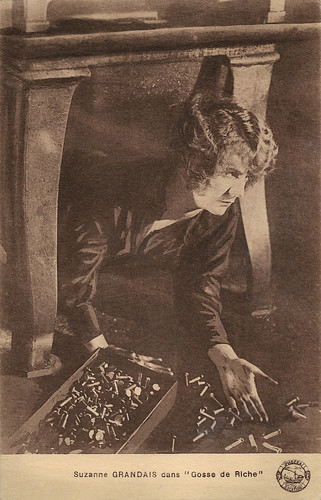
French postcard. Photo: Phocéa-Film. Suzanne Grandais in Gosse de riche/Rich Kid (Charles Burguet, 1920).
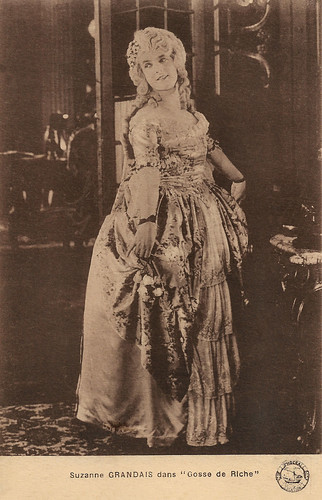
French postcard. Photo: Phocéa-Film. Suzanne Grandais in Gosse de riche/Rich Kid (Charles Burguet, 1920).
Class struggle
In Gosse de riche/Rich Kid, Suzy Maravon ( Suzanne Grandais ), the daughter of an industrialist (Henri Roussel), wants to know how life is for the workers in her fathers' factory.
So Suzy offers her services as an assistant at the workbench. By some rioters and an unfaithful foreman, Gonfaron (Camille Bardou), sabotage is committed, but with the help of another employee, Mougins (Henri Bosc), this is prevented.
Berthe Jalabert, always playing mothers in those years, here plays the mother of Mougins. As usual, the story ends well, with a marriage.
Around 1919-1920, many Western films were made about violent strikes or riots menacing the bourgeois elite - echoing the turmoils in Germany, and before in Russia.
Most films of these films end in reconciliation - either by force, by reason, or by wit - instead of class struggle.
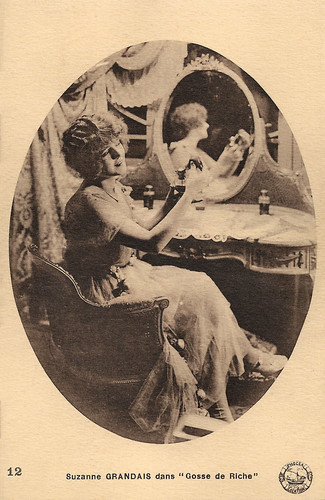
French postcard, no. 12. Photo: Phocéa-Film. Suzanne Grandais in Gosse de riche/Rich Kid (Charles Burguet, 1920).
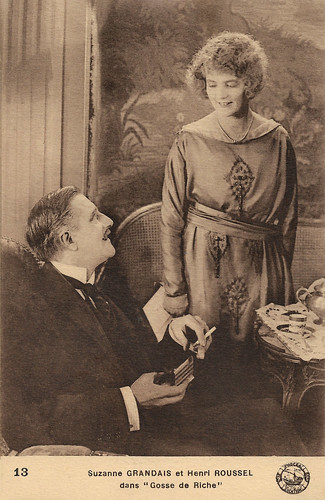
French postcard, no. 13. Photo: Phocéa-Film. Suzanne Grandais and Henry Roussel in Gosse de riche/Rich Kid (Charles Burguet, 1920).
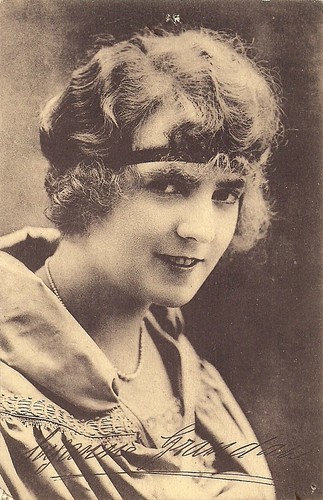
Suzanne Grandais . Possibly a French postcard, but editor unknown.
Sources: Arnhemsche courant (Dutch - 27-11-1920), 1895 (French), Wikipedia and IMDb.

French postcard. Photo: Phocéa-Film. Suzanne Grandais in Gosse de riche/Rich Kid (Charles Burguet, 1920).

French postcard. Photo: Phocéa-Film. Suzanne Grandais in Gosse de riche/Rich Kid (Charles Burguet, 1920).
Class struggle
In Gosse de riche/Rich Kid, Suzy Maravon ( Suzanne Grandais ), the daughter of an industrialist (Henri Roussel), wants to know how life is for the workers in her fathers' factory.
So Suzy offers her services as an assistant at the workbench. By some rioters and an unfaithful foreman, Gonfaron (Camille Bardou), sabotage is committed, but with the help of another employee, Mougins (Henri Bosc), this is prevented.
Berthe Jalabert, always playing mothers in those years, here plays the mother of Mougins. As usual, the story ends well, with a marriage.
Around 1919-1920, many Western films were made about violent strikes or riots menacing the bourgeois elite - echoing the turmoils in Germany, and before in Russia.
Most films of these films end in reconciliation - either by force, by reason, or by wit - instead of class struggle.

French postcard, no. 12. Photo: Phocéa-Film. Suzanne Grandais in Gosse de riche/Rich Kid (Charles Burguet, 1920).

French postcard, no. 13. Photo: Phocéa-Film. Suzanne Grandais and Henry Roussel in Gosse de riche/Rich Kid (Charles Burguet, 1920).

Suzanne Grandais . Possibly a French postcard, but editor unknown.
Sources: Arnhemsche courant (Dutch - 27-11-1920), 1895 (French), Wikipedia and IMDb.
Published on November 23, 2020 22:00
November 22, 2020
Heli Finkenzeller
German stage and film actress Heli Finkenzeller (1914-1991) had her greatest successes in popular Ufa comedies of the 1930s and 1940s. After the war she often played mother or aunt roles, such as in Ciske - Ein Kind braucht Liebe/Ciske – A Child Needs Love (Wolfgang Staudte, 1955).
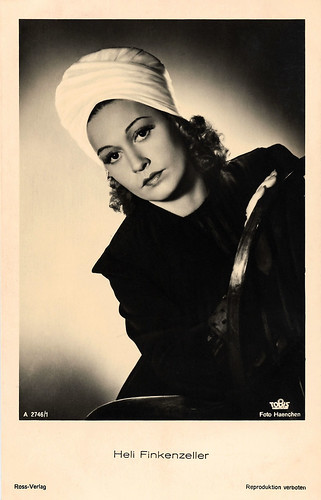
German postcard by Ross Verlag, Berlin, no. A 2746/1, 1939-1940. Photo: Haenchen / Tobis.
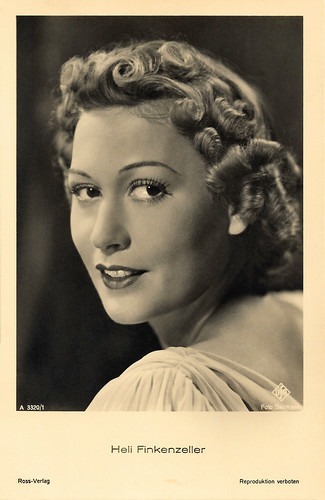
German postcard by Ross Verlag, Berlin, no. A 3320/1, 1941-1944. Photo: Baumann / Ufa.
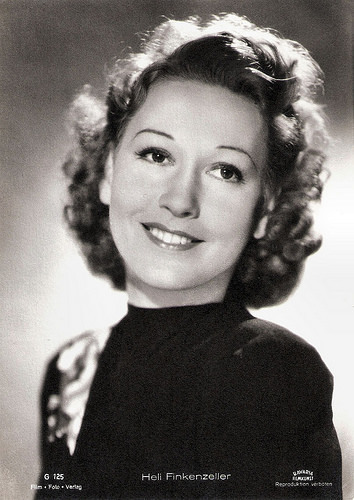
German postcard by Film-Foto-Verlag, no. G 125, Photo: Bavaria Filmkunst. Heli Finkenzeller in Alarmstufe V/Alarm level V (Alois Johannes Lippl, 1941).
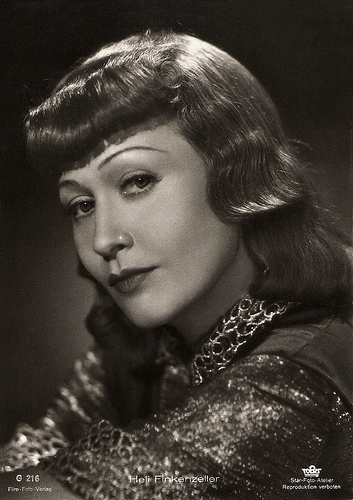
German postcard by Film-Foto-Verlag, no. G 216, 1941-1944. Photo: Star-Foto-Atelier / Tobis.
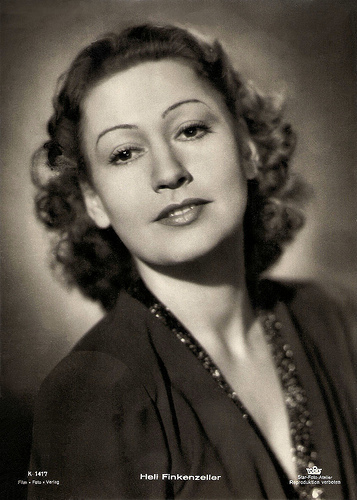
German postcard by Film-Foto-Verlag, no. K 1417. Photo: Tobis / Star-Foto-Atelier.
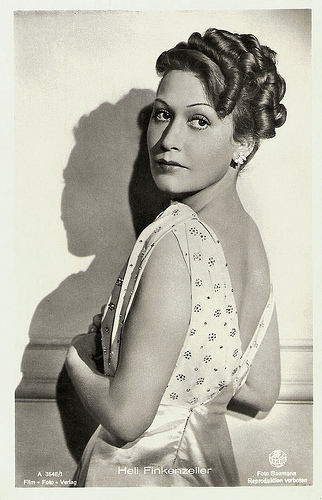
German postcard by Film-Foto-Verlag, no. A 3648/1, 1941-1944. Photo: Baumann / Terra.
Box-office Hits
Helene Finkenzeller was born in München (Munich), Germany in 1914 (according to some sources in 1911). She grew up in Munich where her parents ran a family business that sold office furniture. As a kid, she was already interested in everything connected to the theatre and she wanted to become an opera singer.
After finishing school she attended a conservatory, but she soon realised that her voice was too weak for the opera stage. Instead, she took acting classes from Otto Falkenberg at his newly established drama school in Munich. In 1934 she joined the Münchner Kammerspielen (Munich Chamber Plays) and for the next two years, she performed there with such actors as Ferdinand Marian , Elizabeth Flickenschild, and her later husband Will Dohm.
In 1935 she made her first film appearance in a supporting part in the Ufa comedy Ehestreik/Matrimonial Strike (Georg Jacoby, 1935) with Paul Richter . She played her first lead for the Ufa in the comedy Weiberregiment/Petticoat Government (Karl Ritter, 1936).
Finkenzeller appeared with star comedian Heinz Rühmann in Der Mustergatte/Model Husband (Wolfgang Liebeneiner, 1937).
The box office hits Opernball/Opera Ball (Wolfgang Liebeneiner, 1939) with Paul Hörbiger , Kohlhiesels Töchter/Kohlhiesels daughters (Kurt Hoffmann, 1943) in which she played the double roles of Veronika and Annamirl Kohlhöfer, and especially Das Bad auf der Tenne/The bathroom in the barn (Volker von Collande, 1943) with her husband Will Dohm made her known to a large audience and she became one of Germany’s most popular film stars.
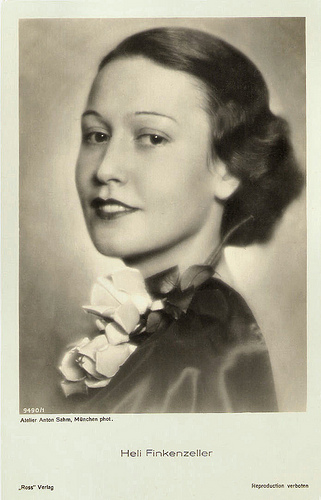
German postcard by Ross Verlag, Berlin, no. 9490/1, 1935-1936. Photo: Atelier Anton Sahm, München.
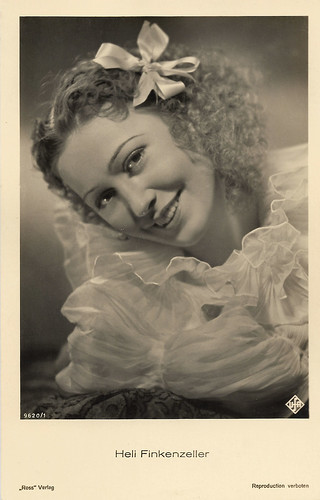
German postcard by Ross Verlag, Berlin, no. 9620/1, 1935-1936. Photo: Ufa.
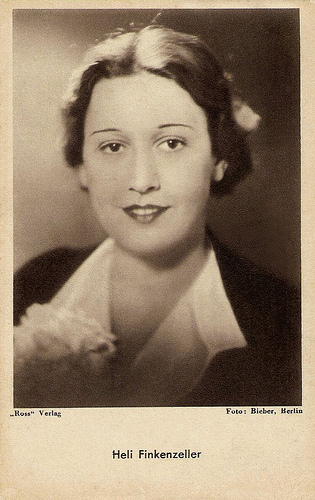
German postcard by Das Programm von Heute für Film und Theater G.m.b.H., Berlin. Photo: Bieber, Berlin / Ross Verlag.
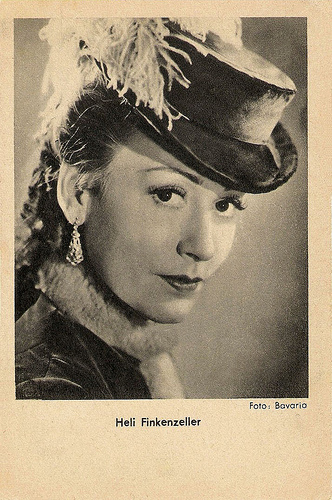
German postcard by Das Programm von Heute für Film und Theater G.m.b.H., Berlin. Photo: Bavaria / Ross Verlag.
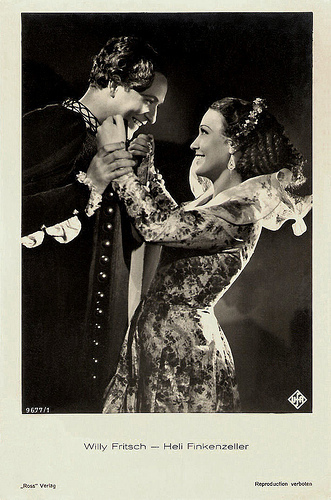
German postcard by Ross Verlag, no. 9677/1, 1935-1936. Photo: Ufa. Publicity still for Boccaccio (Herbert Maisch, 1936) with Willy Fritsch .
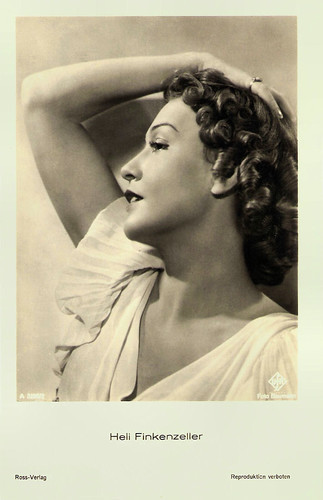
German postcard by Ross Verlag, Berlin, no. A 3280/2, 1941-1944. Photo: Baumann / Ufa.
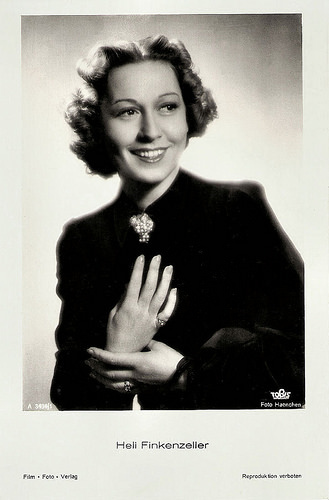
German postcard by Film-Foto-Verlag, no. A 3434/1, 1941-1944. Photo: Tobis / Haenchen.
Big World Allure
After the Second World War, Heli Finkenzeller continued her film career, often in mother roles. Thus she played the wife of Heinz Rühmann in Briefträger Müller/Postman Müller (John Reinhardt, 1953) and Emil’s mother in Emil und die Detektive/Emil and the Detectives (Robert A. Stemmle, 1954) based on the classic children’s book by Erich Kästner.
In the German-Dutch coproduction Ciske - Ein Kind braucht Liebe/Ciske – A Child Needs Love (Wolfgang Staudte, 1955) with Kees Brusse, she was the aunt of the title figure. She was also seen in another Dutch-German coproduction Jenny (Alfred Bittins, Willy van Hemert, 1959) featuring Ellen van Hemert .
On stage, she appeared in the musical Gigi at the Theater des Westens (Theatre of the West) in Berlin, and in many plays. She also can be heard on records with songs and texts.
From the early 1960s on, the former Ufa star played mainly on stage and in many TV films and series, such as Unser Pauker/Our Crammer (Otto Meyer, 1965) with Georg Thomalla, the comedy Meine Schwiegersöhne und ich/My sons-in-law and I (Rudolf Jugert, 1969) opposite Hans Söhnker, the Krimi Der Kommissar/The Commissioner (1974) starring Erik Ode, Das Traumschiff/The Dream Boat (Fritz Umgelter, 1981), Der Gerichtsvollzieher/The Bailiff (Peter Weck, 1981) and finally, three years before her death in Lorentz & Söhne/Lorentz and Sons (Claus Peter Witt, 1988).
In between, she played in one final film, the black comedy Satansbraten/Satan’s Brew (Rainer Werner Fassbinder, 1976). Heli Finkenzeller and Will Dohm had a daughter, actress Gaby Dohm (1943) who is well known in the German language countries. After Will Dohm’s death in 1948, Heli remarried in 1950 to film producer Alfred Bittin. They stayed together until his death in 1971.
Heli Finkenzeller died from cancer in 1991 in her hometown Munich. She was 76. The German weekly Der Spiegel wrote in an obituary: "Her type was much in demand at the Ufa: charm with distance, elegance without any wickedness. She even had big world allure, but on a small Pan-German scale. It made Heli Finkenzeller in the middle of the thirties a star in light entertainment films."
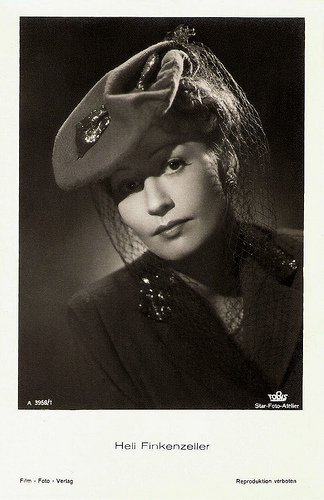
German postcard by Film-Foto-Verlag, no. A 3958/1, 1941-1944. Photo: Star-Foto-Atelier / Tobis.
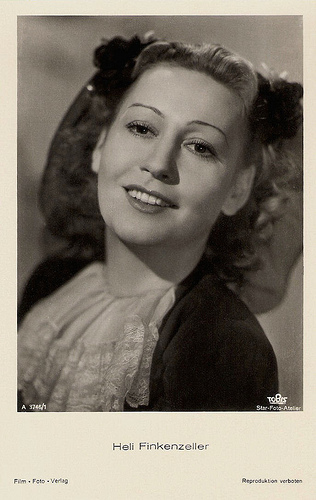
German postcard by Film-Foto-Verlag, no. A 3746/1, 1941-1944. Photo: Star-Foto-Atelier / Tobis.

German postcard by Kunst und Bild, Berlin, no. A 399. Photo: Eva Satow.
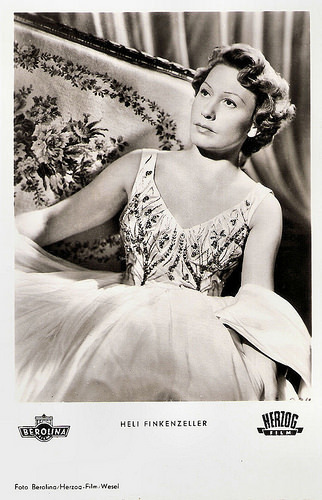
German postcard by Film und Bild, Berlin, no. A 916. Photo: Berolina / Herzog-Film / Wesel. Publicity still for Briefträger Müller/Mailman Mueller (John Reinhardt, 1953).
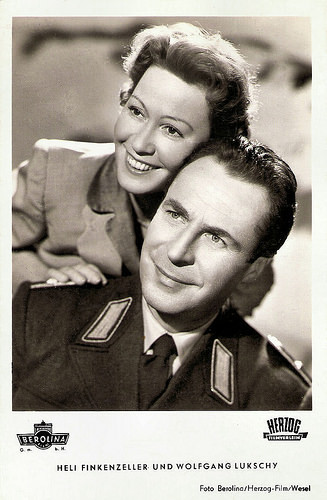
German postcard by Kunst und Bild, Berlin, no. A 1235. Photo: Berolina / Herzog-Film / Wesel. Publicity still for Emil und die Detektive/Emil and the Detectives (Robert A. Stemmle, 1954) with Wolfgang Lukschy.
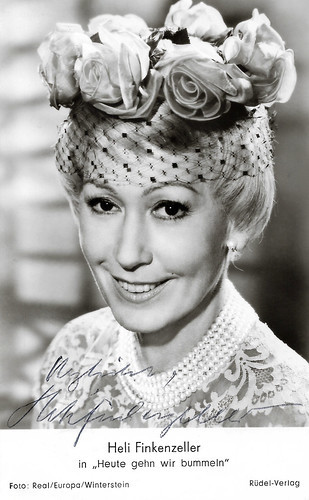
West-German postcard by Rüdel-Verlag, Berlin. Photo: Real / Europa / Winterstein. Heli Finkenzeller in Heute gehn wir bummeln/Today we're going for a stroll (Erik Ode, 1961). Sent by mail in 1962.
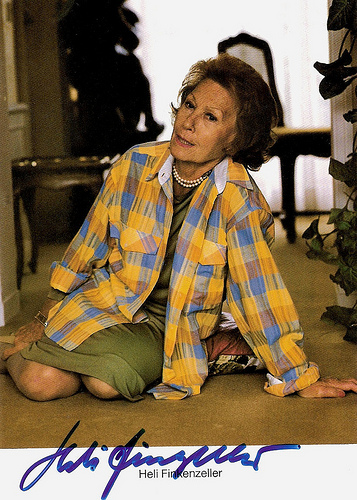
German postcard by Franz Josef Rüdel, Filmpostkartenverlag, Hamburg. Photo: Christian Pantel, Hamburg.
Heli Finkenzeller sings Heute möchte ich, with Theo Lingen and Marte Harell in Opernball/Opera Ball (1939). Source: BD 130 (YouTube).
Sources: Stephanie D’Heil (Steffi-Line - German), Thomas Staedeli (Cyranos), Der Spiegel (German), Wikipedia (German), and .

German postcard by Ross Verlag, Berlin, no. A 2746/1, 1939-1940. Photo: Haenchen / Tobis.

German postcard by Ross Verlag, Berlin, no. A 3320/1, 1941-1944. Photo: Baumann / Ufa.

German postcard by Film-Foto-Verlag, no. G 125, Photo: Bavaria Filmkunst. Heli Finkenzeller in Alarmstufe V/Alarm level V (Alois Johannes Lippl, 1941).

German postcard by Film-Foto-Verlag, no. G 216, 1941-1944. Photo: Star-Foto-Atelier / Tobis.

German postcard by Film-Foto-Verlag, no. K 1417. Photo: Tobis / Star-Foto-Atelier.

German postcard by Film-Foto-Verlag, no. A 3648/1, 1941-1944. Photo: Baumann / Terra.
Box-office Hits
Helene Finkenzeller was born in München (Munich), Germany in 1914 (according to some sources in 1911). She grew up in Munich where her parents ran a family business that sold office furniture. As a kid, she was already interested in everything connected to the theatre and she wanted to become an opera singer.
After finishing school she attended a conservatory, but she soon realised that her voice was too weak for the opera stage. Instead, she took acting classes from Otto Falkenberg at his newly established drama school in Munich. In 1934 she joined the Münchner Kammerspielen (Munich Chamber Plays) and for the next two years, she performed there with such actors as Ferdinand Marian , Elizabeth Flickenschild, and her later husband Will Dohm.
In 1935 she made her first film appearance in a supporting part in the Ufa comedy Ehestreik/Matrimonial Strike (Georg Jacoby, 1935) with Paul Richter . She played her first lead for the Ufa in the comedy Weiberregiment/Petticoat Government (Karl Ritter, 1936).
Finkenzeller appeared with star comedian Heinz Rühmann in Der Mustergatte/Model Husband (Wolfgang Liebeneiner, 1937).
The box office hits Opernball/Opera Ball (Wolfgang Liebeneiner, 1939) with Paul Hörbiger , Kohlhiesels Töchter/Kohlhiesels daughters (Kurt Hoffmann, 1943) in which she played the double roles of Veronika and Annamirl Kohlhöfer, and especially Das Bad auf der Tenne/The bathroom in the barn (Volker von Collande, 1943) with her husband Will Dohm made her known to a large audience and she became one of Germany’s most popular film stars.

German postcard by Ross Verlag, Berlin, no. 9490/1, 1935-1936. Photo: Atelier Anton Sahm, München.

German postcard by Ross Verlag, Berlin, no. 9620/1, 1935-1936. Photo: Ufa.

German postcard by Das Programm von Heute für Film und Theater G.m.b.H., Berlin. Photo: Bieber, Berlin / Ross Verlag.

German postcard by Das Programm von Heute für Film und Theater G.m.b.H., Berlin. Photo: Bavaria / Ross Verlag.

German postcard by Ross Verlag, no. 9677/1, 1935-1936. Photo: Ufa. Publicity still for Boccaccio (Herbert Maisch, 1936) with Willy Fritsch .

German postcard by Ross Verlag, Berlin, no. A 3280/2, 1941-1944. Photo: Baumann / Ufa.

German postcard by Film-Foto-Verlag, no. A 3434/1, 1941-1944. Photo: Tobis / Haenchen.
Big World Allure
After the Second World War, Heli Finkenzeller continued her film career, often in mother roles. Thus she played the wife of Heinz Rühmann in Briefträger Müller/Postman Müller (John Reinhardt, 1953) and Emil’s mother in Emil und die Detektive/Emil and the Detectives (Robert A. Stemmle, 1954) based on the classic children’s book by Erich Kästner.
In the German-Dutch coproduction Ciske - Ein Kind braucht Liebe/Ciske – A Child Needs Love (Wolfgang Staudte, 1955) with Kees Brusse, she was the aunt of the title figure. She was also seen in another Dutch-German coproduction Jenny (Alfred Bittins, Willy van Hemert, 1959) featuring Ellen van Hemert .
On stage, she appeared in the musical Gigi at the Theater des Westens (Theatre of the West) in Berlin, and in many plays. She also can be heard on records with songs and texts.
From the early 1960s on, the former Ufa star played mainly on stage and in many TV films and series, such as Unser Pauker/Our Crammer (Otto Meyer, 1965) with Georg Thomalla, the comedy Meine Schwiegersöhne und ich/My sons-in-law and I (Rudolf Jugert, 1969) opposite Hans Söhnker, the Krimi Der Kommissar/The Commissioner (1974) starring Erik Ode, Das Traumschiff/The Dream Boat (Fritz Umgelter, 1981), Der Gerichtsvollzieher/The Bailiff (Peter Weck, 1981) and finally, three years before her death in Lorentz & Söhne/Lorentz and Sons (Claus Peter Witt, 1988).
In between, she played in one final film, the black comedy Satansbraten/Satan’s Brew (Rainer Werner Fassbinder, 1976). Heli Finkenzeller and Will Dohm had a daughter, actress Gaby Dohm (1943) who is well known in the German language countries. After Will Dohm’s death in 1948, Heli remarried in 1950 to film producer Alfred Bittin. They stayed together until his death in 1971.
Heli Finkenzeller died from cancer in 1991 in her hometown Munich. She was 76. The German weekly Der Spiegel wrote in an obituary: "Her type was much in demand at the Ufa: charm with distance, elegance without any wickedness. She even had big world allure, but on a small Pan-German scale. It made Heli Finkenzeller in the middle of the thirties a star in light entertainment films."

German postcard by Film-Foto-Verlag, no. A 3958/1, 1941-1944. Photo: Star-Foto-Atelier / Tobis.

German postcard by Film-Foto-Verlag, no. A 3746/1, 1941-1944. Photo: Star-Foto-Atelier / Tobis.

German postcard by Kunst und Bild, Berlin, no. A 399. Photo: Eva Satow.

German postcard by Film und Bild, Berlin, no. A 916. Photo: Berolina / Herzog-Film / Wesel. Publicity still for Briefträger Müller/Mailman Mueller (John Reinhardt, 1953).

German postcard by Kunst und Bild, Berlin, no. A 1235. Photo: Berolina / Herzog-Film / Wesel. Publicity still for Emil und die Detektive/Emil and the Detectives (Robert A. Stemmle, 1954) with Wolfgang Lukschy.

West-German postcard by Rüdel-Verlag, Berlin. Photo: Real / Europa / Winterstein. Heli Finkenzeller in Heute gehn wir bummeln/Today we're going for a stroll (Erik Ode, 1961). Sent by mail in 1962.

German postcard by Franz Josef Rüdel, Filmpostkartenverlag, Hamburg. Photo: Christian Pantel, Hamburg.
Heli Finkenzeller sings Heute möchte ich, with Theo Lingen and Marte Harell in Opernball/Opera Ball (1939). Source: BD 130 (YouTube).
Sources: Stephanie D’Heil (Steffi-Line - German), Thomas Staedeli (Cyranos), Der Spiegel (German), Wikipedia (German), and .
Published on November 22, 2020 22:00
November 21, 2020
Renate Holm
Renate Holm (1931) is a German-Austrian film actress and operatic soprano. During the 1950s she was a popular star of Schlager films and operettas. In the 1960s, she became a star at the Vienna State Opera under the direction of Herbert von Karajan.

Austrian postcard by Verlag Hubmann (HDH Verlag), Wien (Vienna), no. 3991. Photo: Union-Film, Wien. Renate Holm in Fräulein von Amt/Miss from the Office (Carl-Heinz Schroth, 1954).

West-German postcard by Agfa, no. 533. Photo: Lantin / Panorama Films.

East-German postcard by VEB Bild und Heimat Reichenbach I.V., no. 949/59, 1959.
A natural singing voice
Renate Holm was born as Renate Franke in 1931 in Berlin, Germany. During her youth, she was a member of the local school and church choirs. She decided to become an opera singer when after being inspired by Il sogno di Butterfly/Premiere der Butterfly/Dream of Butterfly (Carmine Gallone, 1939), a film version of 'Madama Butterfly' with Maria Cebotari in the lead role.
In 1943 her parents separated, and the Frankes were evacuated from the bombed-out centre of Berlin to the Spreewald region. She lived out the rest of her childhood in and around the village of Ragow where her mother at one stage served as local mayor and registrar.
In 1950 her mother arranged a meeting with Waltraud Waldeck, a local singer and singing teacher who declared that Renate had a natural singing voice and should take singing lessons. Renate worked hard to pay for singing lessons to make her dream come true.
In 1953 her mother entered her in a local talent competition. She sang 'Lied der Nachtigall' (Song of the Nightingale) by Franz Grothe. Winning the contest, she was discovered by the RIAS, an American sponsored radio station in West Berlin.
She quickly established a singing career as a Schlager singer and soon also in such films as Schlagerparade/Hit Parade (Erik Ode, 1953), Die große Starparade/The Big Star Parade (Paul Martin, 1954) with Adrian Hoven , and Wunschkonzert/Request Concert (Erik Ode, 1955). She changed her professional name from Renate Franke to Renate Holm, in order the avoid confusion with singer Renée Franke.
During the mid-1950s Holm became a popular star of operettas and Heimatfilms in the German-speaking parts of Europe. Notable films are Wo die Lerche singt/Where the Lark Sings (Hans Wolff, 1956) with Doris Kirchner and Der Graf von Luxemburg/The Count of Luxemburg (Werner Jacobs, 1957) opposite Gerhard Riedmann .
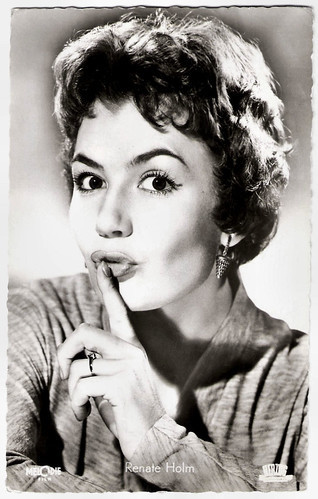
West-German postcard by Kolibri-Verlag, Minden/Westf., no. 1612. Photo: Melodie / Herzog Film / Gabriele. Renate Holm in Wunschkonzert/Request Concert (Erik Ode, 1955).

Austrian postcard by Kellner Fotokarten, Wien, no. 81065. Photo: Paula WesselyFilm / Hämmerer. Renate Holm in Wo die Lerche singt/Where the Lark Sings (Hans Wolff, 1956).

West-German postcard by Agfa, no. 525. Photo: Panorama Films. Renate Holm and Heinz Drache in Kein Auskommen mit dem Einkommen/Short of Cash (Herbert B. Fredersdorf, 1957).
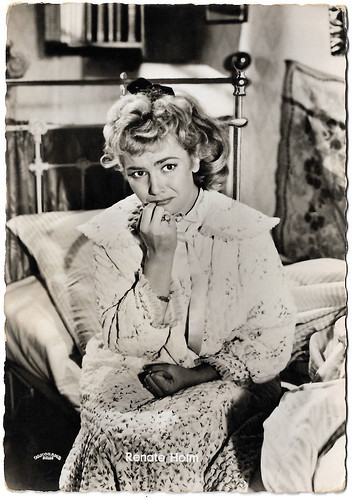
West-German postcard by Agfa, no. 531. Photo: Panorama Films. Renate Holm in Kein Auskommen mit dem Einkommen/Short of Cash (Herbert B. Fredersdorf, 1957).
At one of the world's foremost opera houses
In 1957 Renate Holm moved to Vienna in Austria. She was engaged by Hubert Marischka to work at the Vienna Volksoper. She had also received an invitation to star as Eliza Doolittle in the German-language premiere of 'My Fair Lady' at the Theater des Westens in Berlin, but her sights were firmly set on a career as an opera singer.
She made her Volksoper debut with the lead soprano part as Princess Helene in 'Walzertraum' by Oscar Straus. Incidentally, she appeared in such Schlager films as the Austrian production Liebe, Mädchen und Soldaten/Love, Girls and Soldiers (Franz Antel, 1958) co-starring Willy Hagara and Marina (Paul Martin, 1960) with Rocco Granata .
Her big breakthrough came when she switched to the Vienna State Opera. There she made her debut performance as the fiancée Gretchen in 'Wildschütz' (1960).
The Vienna State Opera is one of the world's foremost opera houses, where she regularly performed under the great Herbert von Karajan. Under his direction, she enjoyed a stream of successes and Holm appeared in many of the world's great opera houses, performing alongside the great stars of her generation.
Besides her opera performances, she also appeared in many concerts, at numerous festivals, and on TV. Holm has continued to give concerts during the present century. She also remains in demand as a teacher of singing and as a jury member in international competitions. In 1965, she married Horst-Wolfgang Haase. The marriage lasted seven years. Renate Holm lives in Austria.
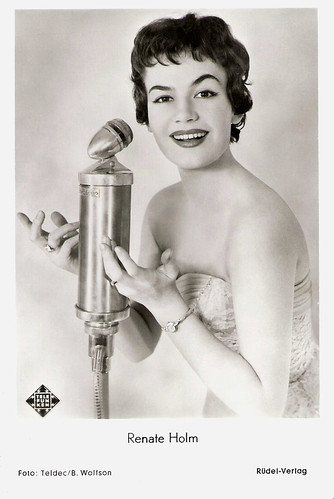
German postcard by Rüdel-Verlag. Phot: Teldec / B. Wolfson / Telefunken.
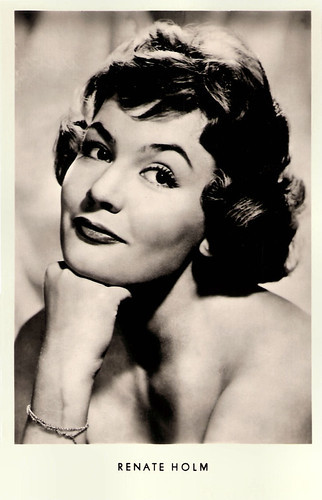
East-German postcard by VEB Volkskunstverlag Reichenbach I.V., no. G 740, 1957. Retail price: 0,15 DM. Photo: Teldec.
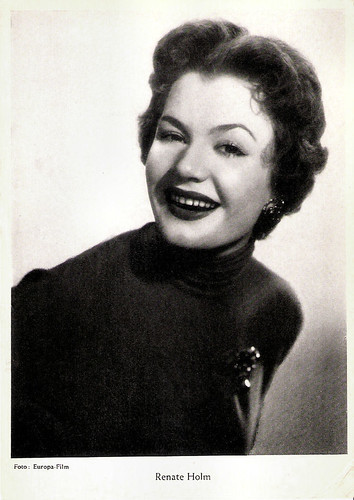
German collectors card. Photo: Europa-Film.
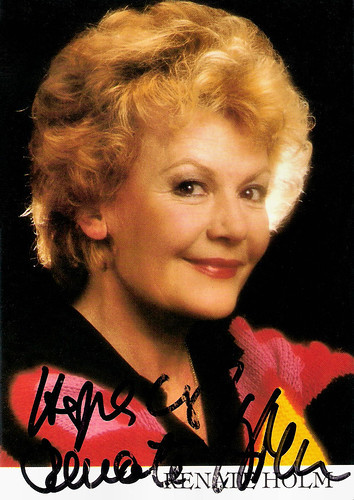
German autograph card by Simon Offset, München.
Sources: Wikipedia and .

Austrian postcard by Verlag Hubmann (HDH Verlag), Wien (Vienna), no. 3991. Photo: Union-Film, Wien. Renate Holm in Fräulein von Amt/Miss from the Office (Carl-Heinz Schroth, 1954).

West-German postcard by Agfa, no. 533. Photo: Lantin / Panorama Films.

East-German postcard by VEB Bild und Heimat Reichenbach I.V., no. 949/59, 1959.
A natural singing voice
Renate Holm was born as Renate Franke in 1931 in Berlin, Germany. During her youth, she was a member of the local school and church choirs. She decided to become an opera singer when after being inspired by Il sogno di Butterfly/Premiere der Butterfly/Dream of Butterfly (Carmine Gallone, 1939), a film version of 'Madama Butterfly' with Maria Cebotari in the lead role.
In 1943 her parents separated, and the Frankes were evacuated from the bombed-out centre of Berlin to the Spreewald region. She lived out the rest of her childhood in and around the village of Ragow where her mother at one stage served as local mayor and registrar.
In 1950 her mother arranged a meeting with Waltraud Waldeck, a local singer and singing teacher who declared that Renate had a natural singing voice and should take singing lessons. Renate worked hard to pay for singing lessons to make her dream come true.
In 1953 her mother entered her in a local talent competition. She sang 'Lied der Nachtigall' (Song of the Nightingale) by Franz Grothe. Winning the contest, she was discovered by the RIAS, an American sponsored radio station in West Berlin.
She quickly established a singing career as a Schlager singer and soon also in such films as Schlagerparade/Hit Parade (Erik Ode, 1953), Die große Starparade/The Big Star Parade (Paul Martin, 1954) with Adrian Hoven , and Wunschkonzert/Request Concert (Erik Ode, 1955). She changed her professional name from Renate Franke to Renate Holm, in order the avoid confusion with singer Renée Franke.
During the mid-1950s Holm became a popular star of operettas and Heimatfilms in the German-speaking parts of Europe. Notable films are Wo die Lerche singt/Where the Lark Sings (Hans Wolff, 1956) with Doris Kirchner and Der Graf von Luxemburg/The Count of Luxemburg (Werner Jacobs, 1957) opposite Gerhard Riedmann .

West-German postcard by Kolibri-Verlag, Minden/Westf., no. 1612. Photo: Melodie / Herzog Film / Gabriele. Renate Holm in Wunschkonzert/Request Concert (Erik Ode, 1955).

Austrian postcard by Kellner Fotokarten, Wien, no. 81065. Photo: Paula WesselyFilm / Hämmerer. Renate Holm in Wo die Lerche singt/Where the Lark Sings (Hans Wolff, 1956).

West-German postcard by Agfa, no. 525. Photo: Panorama Films. Renate Holm and Heinz Drache in Kein Auskommen mit dem Einkommen/Short of Cash (Herbert B. Fredersdorf, 1957).

West-German postcard by Agfa, no. 531. Photo: Panorama Films. Renate Holm in Kein Auskommen mit dem Einkommen/Short of Cash (Herbert B. Fredersdorf, 1957).
At one of the world's foremost opera houses
In 1957 Renate Holm moved to Vienna in Austria. She was engaged by Hubert Marischka to work at the Vienna Volksoper. She had also received an invitation to star as Eliza Doolittle in the German-language premiere of 'My Fair Lady' at the Theater des Westens in Berlin, but her sights were firmly set on a career as an opera singer.
She made her Volksoper debut with the lead soprano part as Princess Helene in 'Walzertraum' by Oscar Straus. Incidentally, she appeared in such Schlager films as the Austrian production Liebe, Mädchen und Soldaten/Love, Girls and Soldiers (Franz Antel, 1958) co-starring Willy Hagara and Marina (Paul Martin, 1960) with Rocco Granata .
Her big breakthrough came when she switched to the Vienna State Opera. There she made her debut performance as the fiancée Gretchen in 'Wildschütz' (1960).
The Vienna State Opera is one of the world's foremost opera houses, where she regularly performed under the great Herbert von Karajan. Under his direction, she enjoyed a stream of successes and Holm appeared in many of the world's great opera houses, performing alongside the great stars of her generation.
Besides her opera performances, she also appeared in many concerts, at numerous festivals, and on TV. Holm has continued to give concerts during the present century. She also remains in demand as a teacher of singing and as a jury member in international competitions. In 1965, she married Horst-Wolfgang Haase. The marriage lasted seven years. Renate Holm lives in Austria.

German postcard by Rüdel-Verlag. Phot: Teldec / B. Wolfson / Telefunken.

East-German postcard by VEB Volkskunstverlag Reichenbach I.V., no. G 740, 1957. Retail price: 0,15 DM. Photo: Teldec.

German collectors card. Photo: Europa-Film.

German autograph card by Simon Offset, München.
Sources: Wikipedia and .
Published on November 21, 2020 22:00
Directed by Paul Verhoeven
It is the last day of Cinefest, the 17th International Festival of German Film-Heritage. A more recent Dutch-German coproduction is Zwartboek/Black Book (2006), directed by Dutch director Paul Verhoeven (1938). Verhoeven (not to be mixed up with the German director of the same name who was active in the 1930s) is the most famous, provocative, and challenging Dutch film director. He worked in the Netherlands, Hollywood, and France, and his films include box-office hits like the Oscar-nominated Turks Fruit/Turkish Delight (1973), Soldaat van Oranje/Soldier of Orange (1977), Basic Instinct (1988), Zwartboek/Black Book (2006) and Elle (2016). He also became known for his four violent, yet intelligent, Science-Fiction films RoboCop (1987), Total Recall (1990), Starship Troopers (1997), and Hollow Man (2000). Verhoeven often tackles controversial topics that have no easy resolution and his work has a strong visual style with heavy use of special effects.
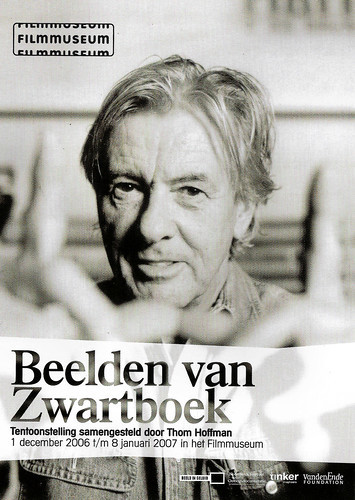
Dutch promotion card by Filmmuseum for the exhibition 'Beelden van Zwartboek' (Images of Black Book). Photo: Thom Hoffman. Paul Verhoeven at the set of Zwartboek/Black Book (2006).
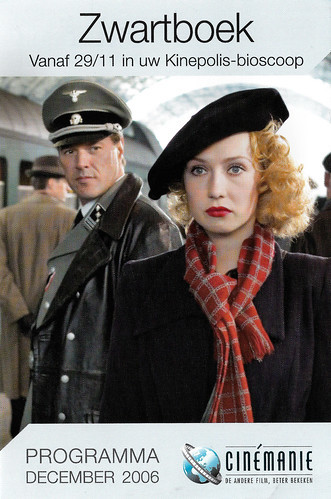
Belgian promotion card by Cinémanie. Photo: Carice van Houten and Sebastian Koch in Zwartboek/Black Book (Paul Verhoeven, 2006).
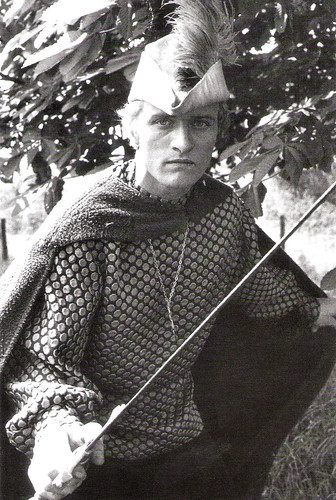
Dutch postcard by N.A.A., 2000. Photo: Rutger Hauer in Floris (Paul Verhoeven, 1969).
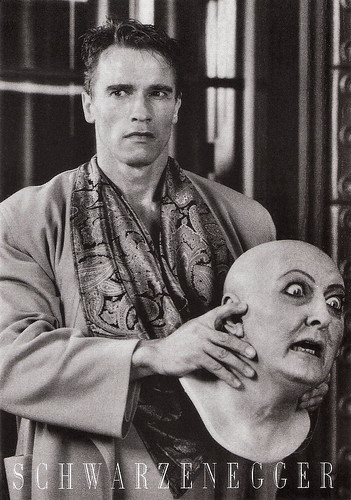
Vintage postcard by Box Office, no. BOPC 3063. Photo: Carolco International NV. Arnold Schwarzenegger in Total Recall (Paul Verhoeven, 1990).
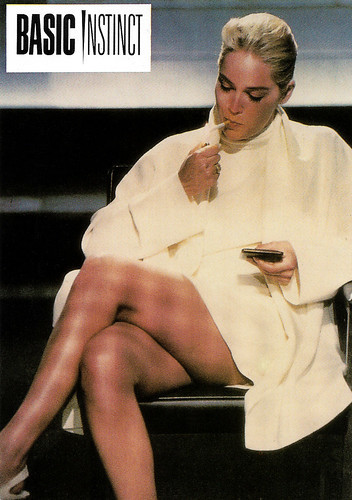
Vintage postcard, no. FA 328. Photo: Sharon Stone in Basic Instinct (Paul Verhoeven, 1992).
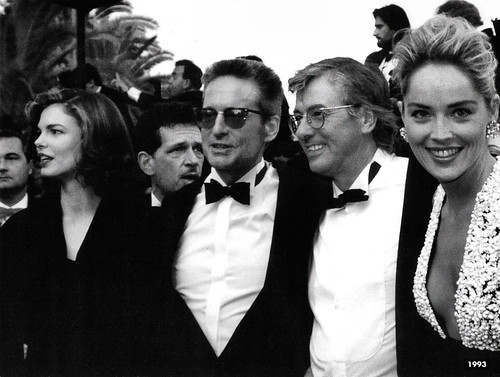
Big photo, 1993. Jeanne Tripplehorn, Michael Douglas, Paul Verhoeven, and Sharon Stone at the Premiere of Basic Instinct (Paul Verhoeven, 1992) in Cannes.
The trauma of war
Paul Verhoeven was born in 1938 in the Netherlands. He was the son of a school teacher, Wim Verhoeven, and a hat maker, Nel van Schaardenburg.
In 1943 the family moved to The Hague, and Paul lived through the trauma of the war. The Verhoeven house was near a German military base with V1 and V2-rocket launchers, which was repeatedly bombed by Allied forces. Their neighbours' house was hit and Verhoeven's parents were almost killed when bombs fell on a street crossing.
Following his primary and high school education, he was accepted at the prestigious University of Leiden. He graduated with a degree in math and physics. While at the university he became interested in filmmaking and directed some short films in the early 1960s. He entered the Royal Netherlands Navy, where he began his film career by making a short documentary for the Navy, Het Korps Mariniers/The Marine Corps (1965). The stunning result was awarded the Silver Sun Award, a French award for military films.
Verhoeven took his skills to Dutch television. First, he made a documentary about Anton Mussert, leader of the National Socialist Movement in the Netherlands (NSB), named Mussert (1968). Then he directed the 12-episode Dutch TV series, Floris (1969), about a medieval knight. The series was phenomenally successful and established Verhoeven's career in the Netherlands. The concept of Floris was inspired by foreign series like Ivanhoe and Thierry La Fronde. The adventure series featured actor Rutger Hauer, and the script was written by Gerard Soeteman. Verhoeven would later frequently work with both of them on his Dutch films.
Verhoeven's first feature was the comedy Wat zien ik/Business is Business (1971) about two Amsterdam prostitutes who have to choose between love and work. It quickly became the fourth highest-grossing Dutch film. His second film, Turks fruit/Turkish Delight (1973), about the passionate love story of an artist and a young liberal girl from a conservative background, was an even bigger hit and gained him great popularity in the Netherlands. In 1999, Turkish Delight received the award for Best Dutch Film of the Century at the Netherlands Film Festival.
The film starred the debuting Monique van de Ven and Rutger Hauer . They re-teamed with Verhoeven for Keetje Tippel/Cathy Tippel (1975). His Dutch films, especially Soldaat van Oranje/Soldier of Orange (1977), starring Rutger Hauer and Jeroen Krabbé , and the horror film De vierde man/The Fourth Man (1983), starring Jeroen Krabbé and Renée Soutendijk, received international recognition.
In between Verhoeven made the film Spetters (1980) with Renée Soutendijk and Rutger Hauer. The story is sometimes compared to Saturday Night Fever, but the film has more explicit violence and sexuality. Verhoeven co-scripted Soldaat van Oranje/Soldier of Orange (1977) and later also Flesh+Blood (1985).
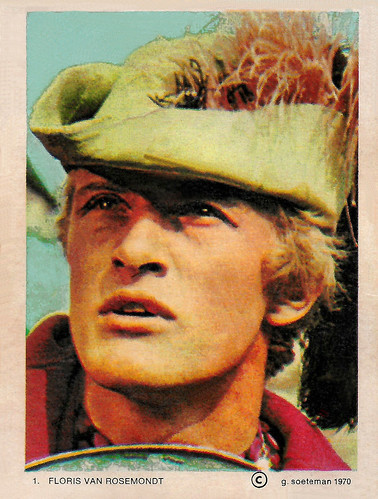
Dutch collectors card by Monty, no. 1, 1970. Photo: Gerard Soeteman. Rutger Hauer in the TV series Floris (Paul Verhoeven, 1969).
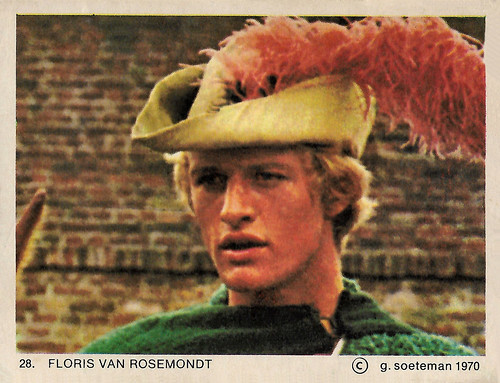
Dutch collectors card by Monty, no. 28, 1970. Photo: Gerard Soeteman. Rutger Hauer in the TV series Floris (Paul Verhoeven, 1969).
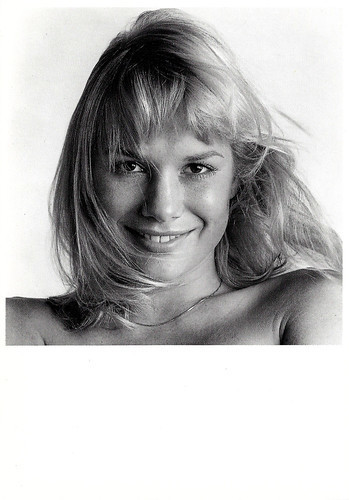
Dutch postcard by Art Unlimited, Amsterdam, no. B 1948, 1994. Photo: Paul Huf, 1976. Monique van de Ven (1952) is a Dutch actress and director. With her film debut in Paul Verhoeven's Turks fruit/Turkish Delight (1973), she was an international sensation.
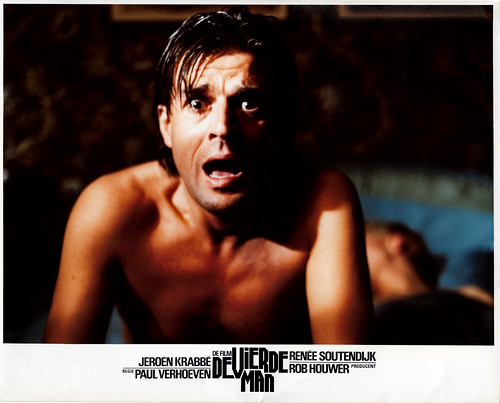
Dutch photo: Jeroen Krabbé in De Vierde Man/The Fourth man (Paul Verhoeven, 1983).
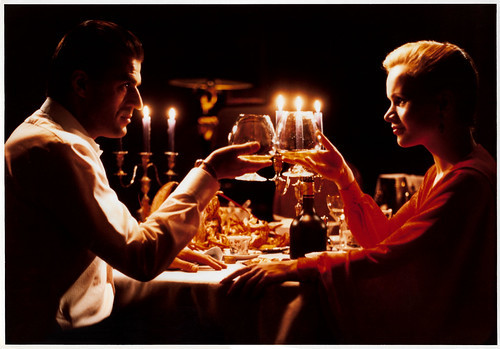
Dutch photo: Jeroen Krabbé and Renee Soutendijk in De Vierde Man/The Fourth man (Paul Verhoeven, 1983).
Only recording the violence of society
In 1985, Paul Verhoeven moved to the US. He had already directed an episode of the HBO TV series The Hitchhiker (1983). His first American film was the medieval epic Flesh+Blood (1985), which starred Rutger Hauer and Jennifer Jason Leigh. He had a falling out with Hauer on the set and it would become the last film they made together.
His next film RoboCop (1987) and, especially, Total Recall (1990) were blockbusters. Total Recall starred Arnold Schwarzenegger and Sharon Stone . It earned two Oscar nominations and received the Academy Award for its dazzling special effects. Sometimes accused of portraying excessive violence in his films, Verhoeven replies that he is only recording the violence of society.
His next film, the intense and provocative thriller Basic Instinct (1992) became the ninth-highest-grossing film of the year. It starred Michael Douglas and Sharon Stone . The film's most notorious scene shows Stone's character in a police interrogation, where she uncrosses her legs, briefly revealing her vulva.
In 1995, Verhoeven became the first nominee ever to actually show up at the Razzie Awards. He personally accepted the 'Worst Director' and 'Worst Picture' awards for Showgirls (1995). Afterward, the film enjoyed success on the home video market, generating more than $100 million from video rentals.
Several of his Dutch and American films have been photographed by Jost Vacano, including the hit cult film, Starship Troopers (1997), starring Casper Van Dien. It was followed by Hollow man (2000), Verhoeven's variation on the themes of HG Wells's 'The Invisible Man'. Both films received an Academy Award nomination for Best Visual Effects.
In 2006, Verhoeven reappeared with his Dutch film Zwartboek/Black Book about underground resistance activities in the Netherlands during the Second World War. The film, co-written by Gerard Soeteman and starring Carice van Houten , became an instant success and was nominated for a Bafta-Award. In 2007, Verhoeven published the book 'Jezus van Nazaret'(Jesus of Nazareth ) which reviews the ideas of Jesus of Nazareth and the alleged corruption of these same ideas over the last 2,000 years.
Nine years later followed the French thriller and comedy of manners Elle (2016), which won the Golden Globe Award for Best Foreign Language Film. Lead actress Isabelle Huppert received an Oscar nomination for her bravura performance as a businesswoman who finds a way to get back at her aggressor after she is violently raped. Next year follows another French film, Benedetta/Blessed Virgin (2021) about a 17th-century nun in Italy who suffers from disturbing religious and erotic visions. It is a biographical film about the life of Benedetta Carlini, which will be portrayed by Elle co-star Virginie Efira.
Paul Verhoeven was knighted in the Order of the Netherlands Lion in 2007. Since 1967, he is married to Martine Verhoeven-Tours and they have two daughters, Claudia and Helen.

French postcard by Sonis, no. C. 129. Photo: Carolco International NV. Arnold Schwarzenegger in Total Recall (Paul Verhoeven, 1990).

French postcard by Sonis, no. C. 130. Photo: Carolco International NV. Arnold Schwarzenegger in Total Recall (Paul Verhoeven, 1990).
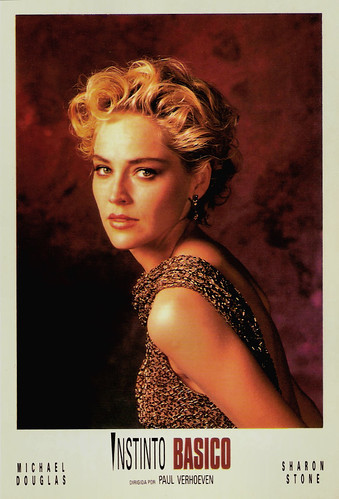
Spanish postcard by Novograf. Photo: Sharon Stone in Basic Instinct (Paul Verhoeven, 1992).
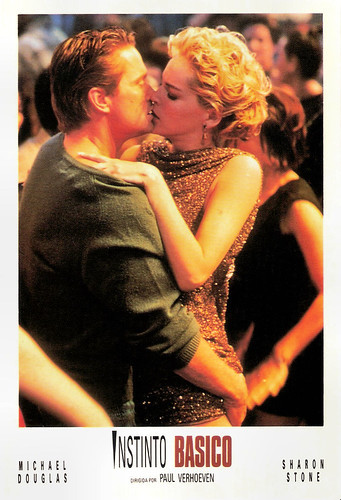
Spanish postcard by Novograf. Photo: Michael Douglas and Sharon Stone in Basic Instinct (Paul Verhoeven, 1992).
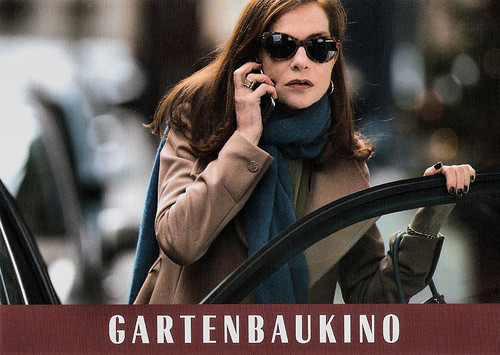
Austrian promotion card by Gartenbaukino, Wien. Photo: Isabelle Huppert in Elle (Paul Verhoeven, 2016).
Sources: Geoffrey MacNab (Screen Daily), (IMDb), Wikipedia, and .

Dutch promotion card by Filmmuseum for the exhibition 'Beelden van Zwartboek' (Images of Black Book). Photo: Thom Hoffman. Paul Verhoeven at the set of Zwartboek/Black Book (2006).

Belgian promotion card by Cinémanie. Photo: Carice van Houten and Sebastian Koch in Zwartboek/Black Book (Paul Verhoeven, 2006).

Dutch postcard by N.A.A., 2000. Photo: Rutger Hauer in Floris (Paul Verhoeven, 1969).

Vintage postcard by Box Office, no. BOPC 3063. Photo: Carolco International NV. Arnold Schwarzenegger in Total Recall (Paul Verhoeven, 1990).

Vintage postcard, no. FA 328. Photo: Sharon Stone in Basic Instinct (Paul Verhoeven, 1992).

Big photo, 1993. Jeanne Tripplehorn, Michael Douglas, Paul Verhoeven, and Sharon Stone at the Premiere of Basic Instinct (Paul Verhoeven, 1992) in Cannes.
The trauma of war
Paul Verhoeven was born in 1938 in the Netherlands. He was the son of a school teacher, Wim Verhoeven, and a hat maker, Nel van Schaardenburg.
In 1943 the family moved to The Hague, and Paul lived through the trauma of the war. The Verhoeven house was near a German military base with V1 and V2-rocket launchers, which was repeatedly bombed by Allied forces. Their neighbours' house was hit and Verhoeven's parents were almost killed when bombs fell on a street crossing.
Following his primary and high school education, he was accepted at the prestigious University of Leiden. He graduated with a degree in math and physics. While at the university he became interested in filmmaking and directed some short films in the early 1960s. He entered the Royal Netherlands Navy, where he began his film career by making a short documentary for the Navy, Het Korps Mariniers/The Marine Corps (1965). The stunning result was awarded the Silver Sun Award, a French award for military films.
Verhoeven took his skills to Dutch television. First, he made a documentary about Anton Mussert, leader of the National Socialist Movement in the Netherlands (NSB), named Mussert (1968). Then he directed the 12-episode Dutch TV series, Floris (1969), about a medieval knight. The series was phenomenally successful and established Verhoeven's career in the Netherlands. The concept of Floris was inspired by foreign series like Ivanhoe and Thierry La Fronde. The adventure series featured actor Rutger Hauer, and the script was written by Gerard Soeteman. Verhoeven would later frequently work with both of them on his Dutch films.
Verhoeven's first feature was the comedy Wat zien ik/Business is Business (1971) about two Amsterdam prostitutes who have to choose between love and work. It quickly became the fourth highest-grossing Dutch film. His second film, Turks fruit/Turkish Delight (1973), about the passionate love story of an artist and a young liberal girl from a conservative background, was an even bigger hit and gained him great popularity in the Netherlands. In 1999, Turkish Delight received the award for Best Dutch Film of the Century at the Netherlands Film Festival.
The film starred the debuting Monique van de Ven and Rutger Hauer . They re-teamed with Verhoeven for Keetje Tippel/Cathy Tippel (1975). His Dutch films, especially Soldaat van Oranje/Soldier of Orange (1977), starring Rutger Hauer and Jeroen Krabbé , and the horror film De vierde man/The Fourth Man (1983), starring Jeroen Krabbé and Renée Soutendijk, received international recognition.
In between Verhoeven made the film Spetters (1980) with Renée Soutendijk and Rutger Hauer. The story is sometimes compared to Saturday Night Fever, but the film has more explicit violence and sexuality. Verhoeven co-scripted Soldaat van Oranje/Soldier of Orange (1977) and later also Flesh+Blood (1985).

Dutch collectors card by Monty, no. 1, 1970. Photo: Gerard Soeteman. Rutger Hauer in the TV series Floris (Paul Verhoeven, 1969).

Dutch collectors card by Monty, no. 28, 1970. Photo: Gerard Soeteman. Rutger Hauer in the TV series Floris (Paul Verhoeven, 1969).

Dutch postcard by Art Unlimited, Amsterdam, no. B 1948, 1994. Photo: Paul Huf, 1976. Monique van de Ven (1952) is a Dutch actress and director. With her film debut in Paul Verhoeven's Turks fruit/Turkish Delight (1973), she was an international sensation.

Dutch photo: Jeroen Krabbé in De Vierde Man/The Fourth man (Paul Verhoeven, 1983).

Dutch photo: Jeroen Krabbé and Renee Soutendijk in De Vierde Man/The Fourth man (Paul Verhoeven, 1983).
Only recording the violence of society
In 1985, Paul Verhoeven moved to the US. He had already directed an episode of the HBO TV series The Hitchhiker (1983). His first American film was the medieval epic Flesh+Blood (1985), which starred Rutger Hauer and Jennifer Jason Leigh. He had a falling out with Hauer on the set and it would become the last film they made together.
His next film RoboCop (1987) and, especially, Total Recall (1990) were blockbusters. Total Recall starred Arnold Schwarzenegger and Sharon Stone . It earned two Oscar nominations and received the Academy Award for its dazzling special effects. Sometimes accused of portraying excessive violence in his films, Verhoeven replies that he is only recording the violence of society.
His next film, the intense and provocative thriller Basic Instinct (1992) became the ninth-highest-grossing film of the year. It starred Michael Douglas and Sharon Stone . The film's most notorious scene shows Stone's character in a police interrogation, where she uncrosses her legs, briefly revealing her vulva.
In 1995, Verhoeven became the first nominee ever to actually show up at the Razzie Awards. He personally accepted the 'Worst Director' and 'Worst Picture' awards for Showgirls (1995). Afterward, the film enjoyed success on the home video market, generating more than $100 million from video rentals.
Several of his Dutch and American films have been photographed by Jost Vacano, including the hit cult film, Starship Troopers (1997), starring Casper Van Dien. It was followed by Hollow man (2000), Verhoeven's variation on the themes of HG Wells's 'The Invisible Man'. Both films received an Academy Award nomination for Best Visual Effects.
In 2006, Verhoeven reappeared with his Dutch film Zwartboek/Black Book about underground resistance activities in the Netherlands during the Second World War. The film, co-written by Gerard Soeteman and starring Carice van Houten , became an instant success and was nominated for a Bafta-Award. In 2007, Verhoeven published the book 'Jezus van Nazaret'(Jesus of Nazareth ) which reviews the ideas of Jesus of Nazareth and the alleged corruption of these same ideas over the last 2,000 years.
Nine years later followed the French thriller and comedy of manners Elle (2016), which won the Golden Globe Award for Best Foreign Language Film. Lead actress Isabelle Huppert received an Oscar nomination for her bravura performance as a businesswoman who finds a way to get back at her aggressor after she is violently raped. Next year follows another French film, Benedetta/Blessed Virgin (2021) about a 17th-century nun in Italy who suffers from disturbing religious and erotic visions. It is a biographical film about the life of Benedetta Carlini, which will be portrayed by Elle co-star Virginie Efira.
Paul Verhoeven was knighted in the Order of the Netherlands Lion in 2007. Since 1967, he is married to Martine Verhoeven-Tours and they have two daughters, Claudia and Helen.

French postcard by Sonis, no. C. 129. Photo: Carolco International NV. Arnold Schwarzenegger in Total Recall (Paul Verhoeven, 1990).

French postcard by Sonis, no. C. 130. Photo: Carolco International NV. Arnold Schwarzenegger in Total Recall (Paul Verhoeven, 1990).

Spanish postcard by Novograf. Photo: Sharon Stone in Basic Instinct (Paul Verhoeven, 1992).

Spanish postcard by Novograf. Photo: Michael Douglas and Sharon Stone in Basic Instinct (Paul Verhoeven, 1992).

Austrian promotion card by Gartenbaukino, Wien. Photo: Isabelle Huppert in Elle (Paul Verhoeven, 2016).
Sources: Geoffrey MacNab (Screen Daily), (IMDb), Wikipedia, and .
Published on November 21, 2020 22:00
November 20, 2020
Cox Habbema
On the ninth day of Cinefest, the 17th International Festival of German Film-Heritage, EFSP hails a star who embodied the theme of the festival, 'German-Dutch Film Relations'. From 1969 till 1984, Dutch actress Cox Habbema (1944-2016) mainly lived and worked in East-Berlin, where she appeared in several films. From that period, we have selected a series of postcards by the East-German state publisher VEB Progress Film-Vertrieb.
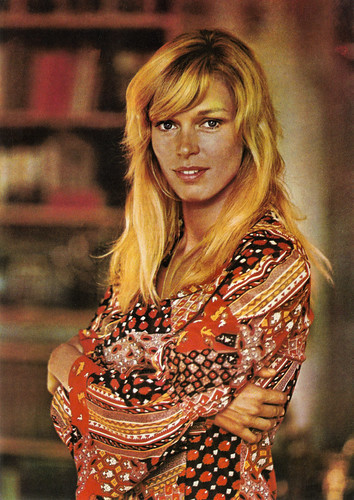
East-German postcard by Progress Film-Verleih, Berlin, no. 5/74, 1974. Retail price: 0,40 M. Photo: Schwarz.
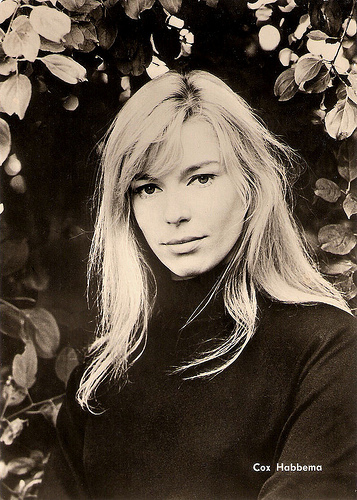
East-German postcard by VEB Progress Film-Vertrieb, Berlin, no. 3307, 1968. Retail price: 0,20 DM. Photo: Reinke/Defa. Publicity still for Wie heiratet man einen König/How to marry a king (1968).

East-German postcard by Progress Film-Verleih, Berlin, no. 137/74, 1974. Retail price: 0,20 M. Photo: Linke.
Heart Beat Fresco
Cornelia ‘Cox’ Habbema was born in Amsterdam in 1944. Her brothers are Diederik Habbema and TV and stage director Eddy Habbema. She studied history and for a short while law and then went to the Toneelschool Amsterdam (the Amsterdam Theatre School), where she studied acting and directing.
In 1963, the then 19-year-old Habbema made headlines with a brief affair with the 39-year-old singer Charles Aznavour . Habbema attended his Dutch concerts where she came into contact with Aznavour. He invited her to go with him to his villa on the Riviera, but at Schiphol, the military police became suspicious and contacted the family. They commanded the plane, which was on its way to the runway, to return. Cox - at that time still legally a minor - was met by two military policemen on board and handed over to her uncle.
In 1967, Habbema made her stage debut at Toneelgroep Centrum (Theatre Group Centre). Her first film appearance was in the Dutch New Wave production Heart Beat Fresco (Pim de la Parra, 1966), two years later followed by To Grab the Ring (Nikolai van der Heijde, 1968) with Ben Carruthers and Françoise Brion. It was entered into the 18th Berlin International Film Festival.
Meanwhile, she was a stage intern of theatre companies in London, Paris, Italy, and Berlin. In East-Germany, she was offered the leading role in the Defa production Wie heiratet man einen König?/How To Marry a King (Rainer Simons, 1968) opposite the German actor Eberhard Esche. He soon also became her husband.
From 1969 till 1984 she mainly lived and worked in East-Berlin. During this period, she was an actress and director for the legendary Deutsches Theater (German Theatre). With Eberhard Esche, she also made a series of productions with classical ballads and Heinrich Heine poems. She was both director and singer-performer for these productions.
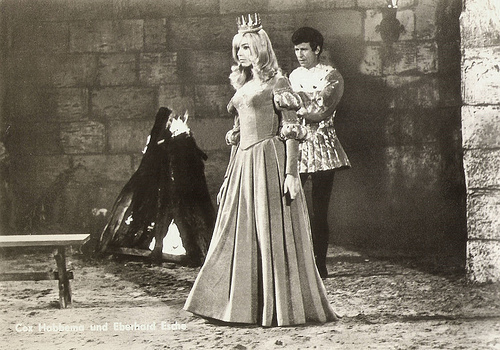
East-German postcard by VEB Progress Film-Vertrieb, Berlin, no. 19/69, 1969. Retail price: 0,20 DM. Photo: Weidt / Defa. Publicity still for Wie heiratet man einen König/How to marry a king (1968) with Eberhard Esche.
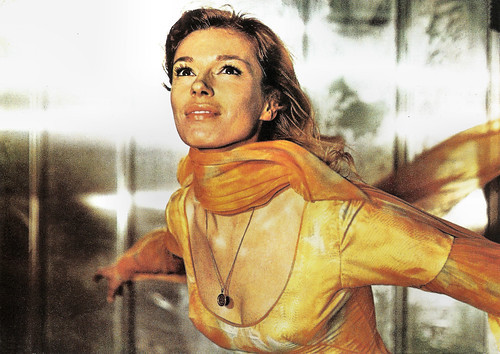
East-German card by VEB Bild und Heimat Reichenbach, Berlin / VEB Progress Film-Vertreib, Berlin, no. 8 / F / 72. Photo: Schwarz / Defa.
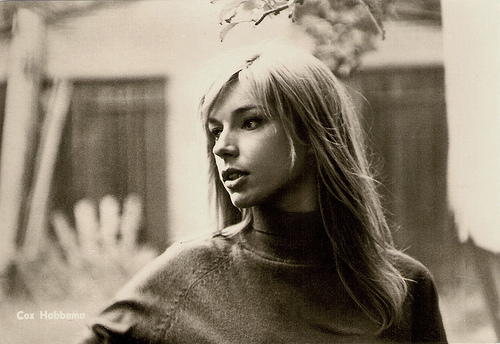
East-German postcard by VEB Progress Film-Vertrieb, Berlin, no. 26/69, 1969. Retail price: 0,20 DM. Photo: Weidt / Defa. Publicity still for Wie heiratet man einen König/How to marry a king (1968).
The revival of the Dutch Cinema
During the 1970s, Cox Habbema played in Dutch and Belgian films and TV series as well as in (East-)German productions. Among her German productions are the crime film Der Mörder sitzt im Wembley-Stadion/The Murder is sitting in Wembley Stadium (Gerhard Respondek, 1970), the Sci-Fi film Eolomea (Herrmann Zschoche, 1972) opposite Bulgarian actor Ivan Andonov, and the medieval adventure tale Till Eulenspiegel (Rainer Simon, 1974).
On TV she appeared in the popular Krimi series Polizeiruf 110/Police Call 110 (1973). She also worked regularly in Belgium, where she played in films like Ieder van ons/Everyone of us (Frans Buyens, 1971) and the TV Series Centraal Station/Central Station (Paul Cammermans, 1974).
In the 1970s there was a revival of the Dutch cinema and Cox Habbema starred in such productions as the thriller Rufus (Samuel Meyering, 1975) between Rijk de Gooyer and John van Dreelen , the drama Kind van de Zon/Child of the sun (René van Nie, 1975), De komst van Joachim Stiller/The Arrival of Joachim Stiller (Harry Kumel, 1976), and Dokter Vlimmen/Doctor Vlimmen (Guido Pieters, 1977).
Henk van Gelder in his necrology for the Dutch newspaper NRC: "At that time, she was known primarily as a blonde with a vamp-like appearance and a subtle ironic tone in the way she, somewhat veiled, expressed her lines."
Habbema appeared opposite husband Eberhard Esche in the Defa productions Leben mit Uwe/Life with Uwe (Lothar Warneke, 1974), Die unverbesserliche Barbara/The Incorrigible Barbara (Lothar Warneke, 1977), also with Hertha Thiele , and the fantasy Der Spiegel des großen Magus/The Mirror of the Great Magus (Dieter Scharfenberg, 1980).
Her best-known film is the thriller De stilte rond Christine M./A Question of Silence (Marleen Gorris, 1982). It was highly controversial but also highly acclaimed at the time of its release, and is now hailed as a feminist classic. At IMDb , Adam Fischer reviews the film: “I find this film to be an amazing critique of patriarchy. While murder may not be the solution, this film shows the extraordinary way in which 3 women who have been beaten down their whole lives (and have nothing to lose) attempt to fight back against an enemy that is unbeatable. The laughter at the end of this film proves just who gets it and who doesn't.”
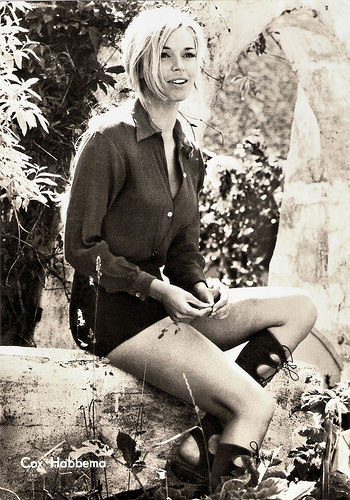
Big East-German card by VEB Progress Film-Vertrieb, Berlin, no. 181/21, 1971. Photo: Defa.
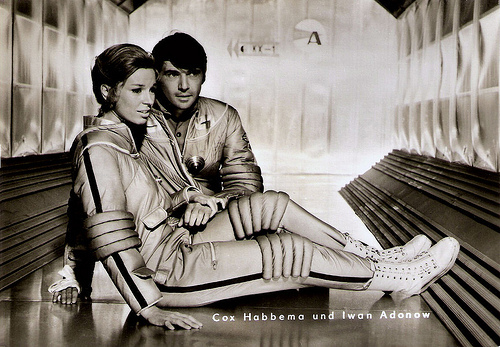
East-German postcard by VEB Progress Film-Vertrieb, Berlin, no. 17/72, 1971. Retail price: 0,20 DM. Photo: Defa. Publicity still for the East German/Soviet/Bulgarian coproduction Eolomea (1971) with Cox Habbema and Ivan Adonov.

East-German postcard by Progress Film-Verleih, Berlin, no. 23/74, 1974. Retail price: 0,20 M. Photo: Linke.
Café Cox
In 1984 Cox Habbema returned to the Netherlands. Her film career, both in Germany and in the Netherlands, was over. She worked for the Dutch television as a presenter, producer, and editor.
Between 1986 and 1996 she was the director of the Stadsschouwburg Amsterdam (Municipal Theatre Amsterdam). Café Cox, a popular theatre hang-out in the Stadsschouwburg building, was named after her. It was a tumultuous period in which she regularly collided with the stage company Toneelgroep Amsterdam (TGA) about the playing of the theatre.
In 1991 and 1992 Habbema played in the popular Dutch TV series Medisch Centrum West/Medical Centre West. In Germany, she had a guest role in an episode of the series Unser Charly/Our Charly (Dieter Kehler, 1998). Other television series in which she appeared were Oog in oog/Eye to Eye (1992), Eindeloos leven/Living Endlessly (1995), and the soap series Het Glazen Huis/The Glass House (2004) starring Willeke van Ammelrooy.
Habbema’s most recent TV appearance was in the drama Kilkenny Cross (Eric Oosthoek, 2006). Since her departure from the Stadsschouwburg, she operated in many managerial functions and as a chairwoman for several Dutch cultural institutes, she lectured at the Tilburg School of Humanities and worked as a trainer and consultant.
In 2002 Habbema published her memoirs, Mijn koffer in Berlijn (My Suitcase in Berlin). In October and November 2004 she went on tour with her monologue Een vrouw in Berlijn (A woman in Berlin), based on an anonymous diary of a young woman in Berlin at the end of the second world war. In 2006 Cox Habbema was honoured for her special merits for the Dutch society and named Officer in the Order of Orange-Nassau.
After her marriage to Eberhard Esche had ended in a divorce, Cox Habbema married to lawyer Robert van de Vijver in 1994. He died in 1997. Cox Habbema passed away in 2016.
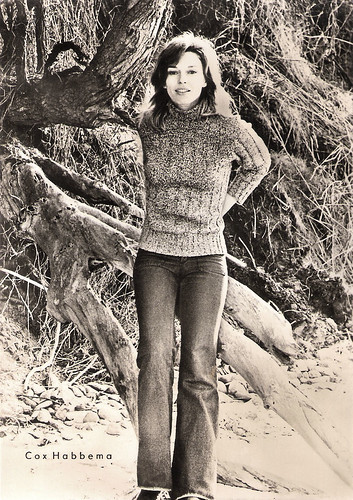
East-German postcard by Progress Film-Verleih, Berlin, no. 137/74, 1974. Retail price: 0,20 M. Photo: Linke.
Trailer for Wie heiratet man einen König?/How To Marry a King (1968). Source: DEFA Stiftung (YouTube).
Trailer for Eolomea (1972). Source: Michael Zschoche (YouTube).
Sources: Henk van Gelder (Nrc.nl - Dutch), Nu.nl (Dutch), Wikipedia (Dutch and German), and .

East-German postcard by Progress Film-Verleih, Berlin, no. 5/74, 1974. Retail price: 0,40 M. Photo: Schwarz.

East-German postcard by VEB Progress Film-Vertrieb, Berlin, no. 3307, 1968. Retail price: 0,20 DM. Photo: Reinke/Defa. Publicity still for Wie heiratet man einen König/How to marry a king (1968).

East-German postcard by Progress Film-Verleih, Berlin, no. 137/74, 1974. Retail price: 0,20 M. Photo: Linke.
Heart Beat Fresco
Cornelia ‘Cox’ Habbema was born in Amsterdam in 1944. Her brothers are Diederik Habbema and TV and stage director Eddy Habbema. She studied history and for a short while law and then went to the Toneelschool Amsterdam (the Amsterdam Theatre School), where she studied acting and directing.
In 1963, the then 19-year-old Habbema made headlines with a brief affair with the 39-year-old singer Charles Aznavour . Habbema attended his Dutch concerts where she came into contact with Aznavour. He invited her to go with him to his villa on the Riviera, but at Schiphol, the military police became suspicious and contacted the family. They commanded the plane, which was on its way to the runway, to return. Cox - at that time still legally a minor - was met by two military policemen on board and handed over to her uncle.
In 1967, Habbema made her stage debut at Toneelgroep Centrum (Theatre Group Centre). Her first film appearance was in the Dutch New Wave production Heart Beat Fresco (Pim de la Parra, 1966), two years later followed by To Grab the Ring (Nikolai van der Heijde, 1968) with Ben Carruthers and Françoise Brion. It was entered into the 18th Berlin International Film Festival.
Meanwhile, she was a stage intern of theatre companies in London, Paris, Italy, and Berlin. In East-Germany, she was offered the leading role in the Defa production Wie heiratet man einen König?/How To Marry a King (Rainer Simons, 1968) opposite the German actor Eberhard Esche. He soon also became her husband.
From 1969 till 1984 she mainly lived and worked in East-Berlin. During this period, she was an actress and director for the legendary Deutsches Theater (German Theatre). With Eberhard Esche, she also made a series of productions with classical ballads and Heinrich Heine poems. She was both director and singer-performer for these productions.

East-German postcard by VEB Progress Film-Vertrieb, Berlin, no. 19/69, 1969. Retail price: 0,20 DM. Photo: Weidt / Defa. Publicity still for Wie heiratet man einen König/How to marry a king (1968) with Eberhard Esche.

East-German card by VEB Bild und Heimat Reichenbach, Berlin / VEB Progress Film-Vertreib, Berlin, no. 8 / F / 72. Photo: Schwarz / Defa.

East-German postcard by VEB Progress Film-Vertrieb, Berlin, no. 26/69, 1969. Retail price: 0,20 DM. Photo: Weidt / Defa. Publicity still for Wie heiratet man einen König/How to marry a king (1968).
The revival of the Dutch Cinema
During the 1970s, Cox Habbema played in Dutch and Belgian films and TV series as well as in (East-)German productions. Among her German productions are the crime film Der Mörder sitzt im Wembley-Stadion/The Murder is sitting in Wembley Stadium (Gerhard Respondek, 1970), the Sci-Fi film Eolomea (Herrmann Zschoche, 1972) opposite Bulgarian actor Ivan Andonov, and the medieval adventure tale Till Eulenspiegel (Rainer Simon, 1974).
On TV she appeared in the popular Krimi series Polizeiruf 110/Police Call 110 (1973). She also worked regularly in Belgium, where she played in films like Ieder van ons/Everyone of us (Frans Buyens, 1971) and the TV Series Centraal Station/Central Station (Paul Cammermans, 1974).
In the 1970s there was a revival of the Dutch cinema and Cox Habbema starred in such productions as the thriller Rufus (Samuel Meyering, 1975) between Rijk de Gooyer and John van Dreelen , the drama Kind van de Zon/Child of the sun (René van Nie, 1975), De komst van Joachim Stiller/The Arrival of Joachim Stiller (Harry Kumel, 1976), and Dokter Vlimmen/Doctor Vlimmen (Guido Pieters, 1977).
Henk van Gelder in his necrology for the Dutch newspaper NRC: "At that time, she was known primarily as a blonde with a vamp-like appearance and a subtle ironic tone in the way she, somewhat veiled, expressed her lines."
Habbema appeared opposite husband Eberhard Esche in the Defa productions Leben mit Uwe/Life with Uwe (Lothar Warneke, 1974), Die unverbesserliche Barbara/The Incorrigible Barbara (Lothar Warneke, 1977), also with Hertha Thiele , and the fantasy Der Spiegel des großen Magus/The Mirror of the Great Magus (Dieter Scharfenberg, 1980).
Her best-known film is the thriller De stilte rond Christine M./A Question of Silence (Marleen Gorris, 1982). It was highly controversial but also highly acclaimed at the time of its release, and is now hailed as a feminist classic. At IMDb , Adam Fischer reviews the film: “I find this film to be an amazing critique of patriarchy. While murder may not be the solution, this film shows the extraordinary way in which 3 women who have been beaten down their whole lives (and have nothing to lose) attempt to fight back against an enemy that is unbeatable. The laughter at the end of this film proves just who gets it and who doesn't.”

Big East-German card by VEB Progress Film-Vertrieb, Berlin, no. 181/21, 1971. Photo: Defa.

East-German postcard by VEB Progress Film-Vertrieb, Berlin, no. 17/72, 1971. Retail price: 0,20 DM. Photo: Defa. Publicity still for the East German/Soviet/Bulgarian coproduction Eolomea (1971) with Cox Habbema and Ivan Adonov.

East-German postcard by Progress Film-Verleih, Berlin, no. 23/74, 1974. Retail price: 0,20 M. Photo: Linke.
Café Cox
In 1984 Cox Habbema returned to the Netherlands. Her film career, both in Germany and in the Netherlands, was over. She worked for the Dutch television as a presenter, producer, and editor.
Between 1986 and 1996 she was the director of the Stadsschouwburg Amsterdam (Municipal Theatre Amsterdam). Café Cox, a popular theatre hang-out in the Stadsschouwburg building, was named after her. It was a tumultuous period in which she regularly collided with the stage company Toneelgroep Amsterdam (TGA) about the playing of the theatre.
In 1991 and 1992 Habbema played in the popular Dutch TV series Medisch Centrum West/Medical Centre West. In Germany, she had a guest role in an episode of the series Unser Charly/Our Charly (Dieter Kehler, 1998). Other television series in which she appeared were Oog in oog/Eye to Eye (1992), Eindeloos leven/Living Endlessly (1995), and the soap series Het Glazen Huis/The Glass House (2004) starring Willeke van Ammelrooy.
Habbema’s most recent TV appearance was in the drama Kilkenny Cross (Eric Oosthoek, 2006). Since her departure from the Stadsschouwburg, she operated in many managerial functions and as a chairwoman for several Dutch cultural institutes, she lectured at the Tilburg School of Humanities and worked as a trainer and consultant.
In 2002 Habbema published her memoirs, Mijn koffer in Berlijn (My Suitcase in Berlin). In October and November 2004 she went on tour with her monologue Een vrouw in Berlijn (A woman in Berlin), based on an anonymous diary of a young woman in Berlin at the end of the second world war. In 2006 Cox Habbema was honoured for her special merits for the Dutch society and named Officer in the Order of Orange-Nassau.
After her marriage to Eberhard Esche had ended in a divorce, Cox Habbema married to lawyer Robert van de Vijver in 1994. He died in 1997. Cox Habbema passed away in 2016.

East-German postcard by Progress Film-Verleih, Berlin, no. 137/74, 1974. Retail price: 0,20 M. Photo: Linke.
Trailer for Wie heiratet man einen König?/How To Marry a King (1968). Source: DEFA Stiftung (YouTube).
Trailer for Eolomea (1972). Source: Michael Zschoche (YouTube).
Sources: Henk van Gelder (Nrc.nl - Dutch), Nu.nl (Dutch), Wikipedia (Dutch and German), and .
Published on November 20, 2020 22:00
November 19, 2020
Dutch girls in the international cinema
It is the eighth day of Cinefest, the 17th International Festival of German Film-Heritage and it is the first day of the international conference. How was the Netherlands represented in German cinema? Frau Antje is the most famous Dutch woman in Germany. She was conceived by the Dutch Dairy Bureau in the 1960s. A radiant woman with a Volendam hat who recommends the Dutch dairy products in Germany. There this fictional advertising figure developed from a cheese girl into the symbol of the Netherlands. Frau Antje was the successor of all these girls in traditional Dutch costumes in countless international films. On one of the festival cards, Sonja Ziemann as one of the precursors of Frau Antje kisses Gunnar Möller in Hollandmädel/Dutch Girl (J. A. Hübler-Kahla, 1953).
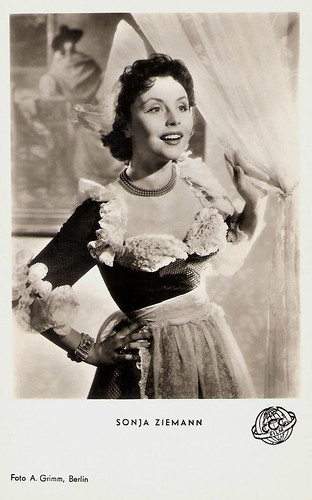
German postcard by Kunst und Bild, Berlin, no. A 813. Photo: Arthur Grimm, Berlin / CCC-Film. Sonja Ziemann in Hollandmädel/Dutch Girl (J.A. Hübler-Kahla, 1953).
Delicately lovely, dark-haired, and innocent-looking Sonja Ziemann (1926-2020) was a German film and television actress, singer, and dancer. Her roles in film operettas and Heimatfilms as Schwarzwaldmädel/The Black Forest Girl (Hans Deppe, 1950) and Grün ist die Heide/The Heath is Green (Hans Deppe, 1951) made her one of the first stars of Germany's post-war cinema. Her private life knew several tragedies.
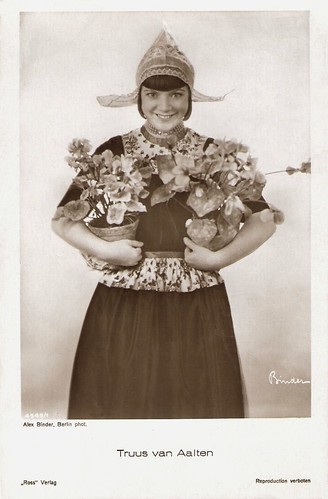
German postcard by Ross Verlag, no. 4549/1, 1929-1930. Photo: Alex Binder, Berlin.
Dutch film star Truus van Aalten (1910-1999) made 29 films in the 1920s and 1930s, and only one of them in the Netherlands.
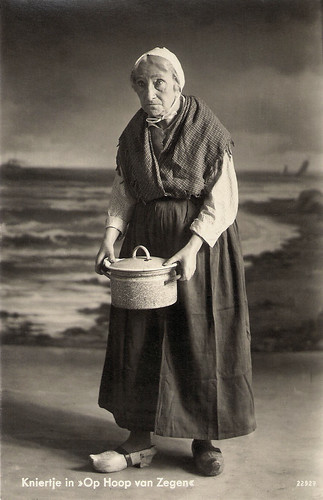
Dutch postcard by Foto-Industrie De Voorkeur, Amsterdam, no 22927. Photo: Leenheer. Esther de Boer-van Rijk in her Kniertje costume.
Esther de Boer-van Rijk (1853-1937) was the most popular Dutch actress ever. She was a national icon as the tragic fisherwoman Kniertje in the stage classic 'Op hoop van zegen' (The Good Hope) by Herman Heijermans and played the role again in both a silent (1918) and a sound film version (1934). She also appeared in a dozen other Dutch silent films.
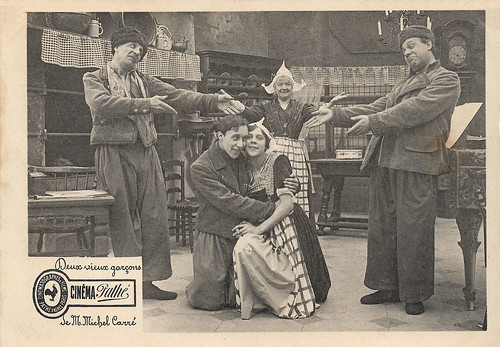
Big French photo card by Cinéma Pathé. Photo: SCAGL. Andrée Marly in Deux vieux garçons/Two old boys (Michel Carré, 1911).
Andrée Marly is kneeling in the middle. Her lover is played by Charles Maudru. The two old men, courting young Katje in vain, and finally giving in, are Louis Baron fils and Georges Coquet. The woman in the back is Marie Ernestine Desclauzas. In real life, Marly was married to Coquet. The setting and costumes in this film refer to the popular Dutch village of Volendam.
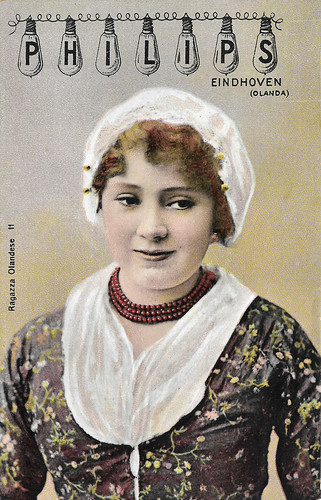
Italian promotion postcard for Philips. Photo: Emrik & Binger, Haarlem. Captions: Philips, Eindhoven (Olanda). Ragazza Olandese (Dutch girls), no.11. Lampada Philips, Risparmio 75%, Luce Bianchissima.
Annie Bos aka Anny Bos (1886-1975) was a Dutch actress in theatre and film. She was known as the queen of the Dutch silent film, between 1912 and 1924. Bos was entitled "Holland’s most famous film actress" and the first Dutch film diva. Bos appeared in a traditional costume in the Dutch film Mooi Juultje van Volendam/Beautiful Juultje from Volendam (Alex Benno, 1924) and she was one of the traditional Dutch girls in a postcard campaign by the Philips factories.
The archaic fishing villages on the North Sea and the former Zuiderzee
Even before the cinema, from the late 19th century, the Netherlands was a popular place for German painters. The works of Max Liebermann, Hans von Bartels, and Fritz von Uhde point to this.
They fell not only on the treasures from Holland's Golden Age of the 17th century in the museums, but also on the picturesque qualities of the country, the light and clouds on the Dutch coast, the archaic fishing villages on the North Sea (Katwijk) and the former Zuiderzee (Volendam, Marken) in a time of the industrial revolution, the picturesque folk costumes, art colonies like in Laren and Bergen, and the old cityscapes and canals of Amsterdam and Dordrecht.
German cinema immediately picked up on and expanded this picturesque vision, either shooting film dramas on location in Volendam and Marken or using either a contemporary or historical studio version of Amsterdam or the Dutch fishing villages.
Fishing dramas have been associated with strong emotional reactions and disasters such as shipwrecks.
This remained so in Berlin in the 1920s with films by Dutch directors, for example with the lost film adaptation Die Fahrt ins Verderben (James Bauer, 1924), in which the Rotterdam-born German actress Adele Sandrock played the leading role. It was based on an often filmed popular Dutch play, 'Op Hoop van Zegen'.

German postcard by Verlag Ross, no. 357/2. Photo: Hanna Holdt, München. Perhaps this card refers to the film Klein Doortje/Little Dorit (Friedrich Zelnik, 1917), which takes place in the Netherlands.
German actress Lisa Weise (?-1952) starred in silent films of the 1910s. Most of her films were directed by Friedrich Zelnik and often her film partner was Karl Beckersachs .

German postcard by Ross Verlag, no. 259/3. Photo: Becker & Maass / May-Film. Mia May in Fünf Minuten zu spät/Five minutes late (Uwe Jenss Krafft, 1918).
Mia May wears the typical bonnet of the Dutch fisherman's village of Volendam. Her character's name, Jana Vermöhlen, sounds like a German transcription of Janna Vermeulen. Janna is a common old-styled Dutch female name, while Vermeulen is a common Dutch last name.
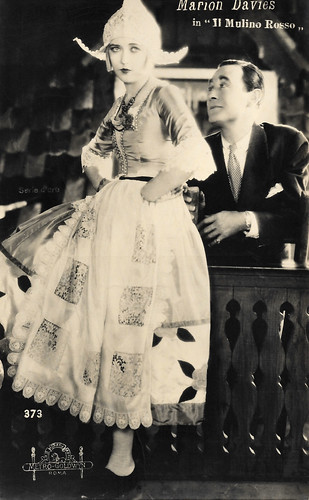
Italian postcard by Casa Editrice Ballerini & Fratini, Firenze (B.F.F. Editore), no. 373. Photo: Metro-Goldwyn, Roma. Marion Davies and Owen Moore in The Red Mill (Roscoe 'Fatty' Arbuckle (as William Goodrich), 1927).
Marion Davies (1897-1961) was one of the great comedic actresses of the silent era. She starred in nearly four dozen films between 1917 and 1937.
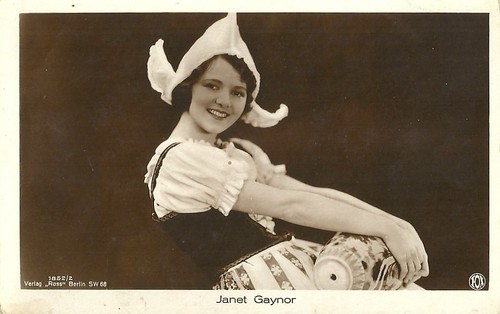
German postcard by Ross Verlag, no. 1852/2, 1927-1928. Photo: Fox. Janet Gaynor as Dutch farmer girl, 'Volendammer' style.
Petite Janet Gaynor (1906-1984) was the innocent-eyed, round-faced Hollywood star who won the first Academy Award for best actress for her roles in three silent films. She went on to become a leading performer in talking pictures, and was one of the most popular Hollywood leading ladies in the 1920s and 1930s. By 1934 she was receiving a yearly salary of $252,583 from Fox, making her Hollywood's most highly paid actress.

German Postcard by Ross Verlag, no. 109/1. Photo: Henny Porten Film. Henny Porten in Die Frau, die jeder liebst, bist Du/The woman everyone loves is you (Carl Froehlich, 1929).
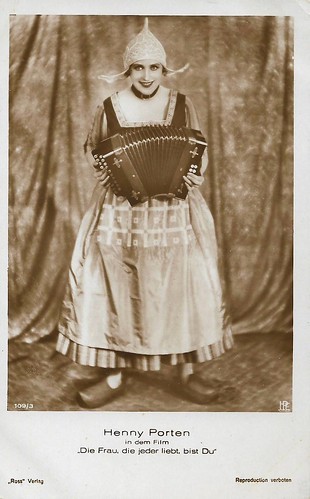
German Postcard by Ross Verlag, no. 109/3. Photo: Henny Porten-Froehlich Produktion (HPF). Henny Porten in Die Frau, die jeder liebst, bist Du (Carl Froehlich, 1929).
Sturdy and blond Henny Porten (1890-1960) was one of Germany's most important and popular film actresses of the silent cinema. She became the quintessence of German womanhood, ladylike yet kindhearted and a not a little petit bourgeois. She was also the producer of many of her own films.
The survival of early German films in a Dutch collection
The 33rd International Film History Congress is part of the Cinefest festival. During this congress, the topics of the festival are deepened in lectures and discussions.
On Saturday 14 November, a forum discussion will take place on the importance of the Desmet Collection of EYE Film Museum for the German film history.
Due to the popularity of German films in the Netherlands as early as the 1910s, many copies of early German cinema have survived in the collection of distributor Jean Desmet, preserved by EYE in Amsterdam.
Other conference themes are the representation of the Netherlands in German cinema, the representation of the German occupation of the Netherlands in film, and the 1930s Exil Cinema in the Netherlands
The congress will open on 19 November 2020 and will take place from 20-22 November 2020, from 9:00 a.mconference. to 4:00 p.m., in the municipal cinema Metropolis Hamburg.
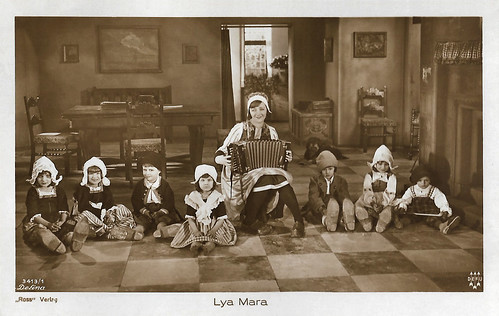
German postcard by Ross Verlag, no. 3413/1. Photo: Defina / Defu. Lya Mara in Heut tanzt Mariett (Friedrich Zelnik, 1928).
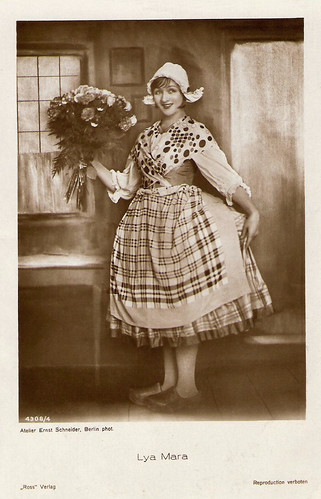
German postcard by Ross Verlag, no. 4308/4, 1929-1930. Photo: Ernst Schneider, Berlin.
Lya Mara (1897-1960?) was one of the biggest stars of the German silent cinema. Her stardom was even the subject of a novel, which was published in 100 episodes between 1927 and 1928. Her career virtually ended after the arrival of sound film.

German postcard by Ross Verlag, no. 5315/1, 1930-1931. Photo: Ufa. Collection: Geoffrey Donaldson Institute.
Dutch actress Lien Deyers (1910-1965) - also known as Lien Deijers and Lien Dyers - was discovered by famous director Fritz Lang who gave her a part in his film Spione/Spies (1928). She acted in a stream of late silent and early sound films. After 1935 her star faded rapidly and her life ended in tragedy.
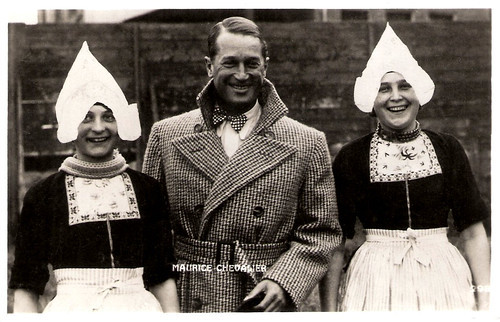
Dutch postcard by JosPe, Arnhem. Photo: Maurice Chevalier in Volendam. This picture was taken in 1932 when The French singer and actor visited the Netherlands.
The trademark of French actor, singer, and entertainer Maurice Chevalier (1988-1972) was his casual straw hat, which he always wore on stage, plus a cane and a tuxedo. His signature songs included 'Louise', 'Mimi', and 'Thank Heaven for Little Girls'. For the cinema, he worked with such directors as Max Linder , Ernst Lubitsch , Ludwig Berger, René Clair, and Vincente Minelli. His heavy French accent, melodic voice, and Gallic charm made him the prototype of the gallant French monsieur in the Hollywood cinema of the 1930s.
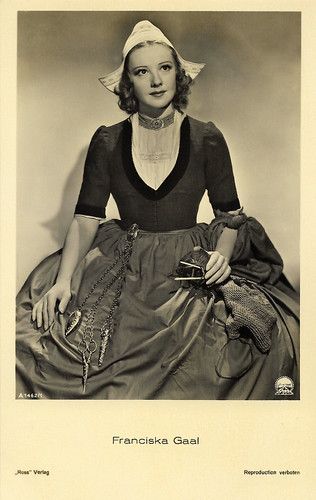
German postcard by Ross Verlag, no. A 1462/1, 1937-1938. Photo: Paramount. Franziska Gaal in The Buccaneer (Cecil B. DeMille, 1938).
Popular Hungarian cabaret artist and theatrical actress Franziska Gaál (1904-1973) starred in several European films of the 1920s and 1930s. Later she went to Hollywood to star in Cecil B. DeMille's The Buccaneer (1938) and other films.
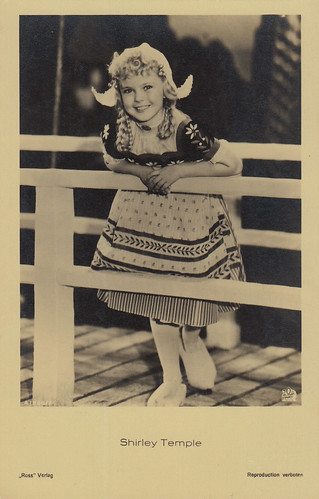
German postcard by Ross Verlag, no. A 1538/6, 1937-1938. Photo: 20th Century Fox.
Shirley Temple (1928-2014) was an American film and television actress, singer, dancer, and public servant, but everybody knows her as the most famous child star in the 1930s. Shirley could do it all: act, sing, and dance and all at the age of five! Four years in a row, between 1935 and 1938, she was the top box-office draw for Hollywood. As an adult, she entered politics and became a diplomat, serving as United States Ambassador to Ghana and later to Czechoslovakia, and as Chief of Protocol of the United States.
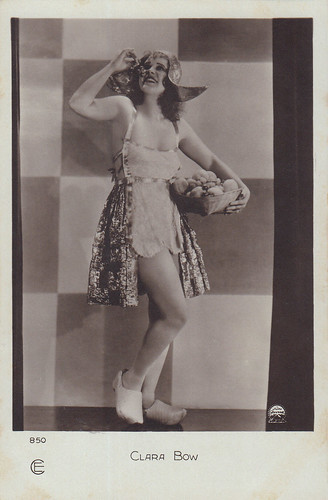
French postcard by Cinémagazine-Edition, Paris, no. 850. Photo: Films Paramount. Collection: Marlene Pilaete.
American actress Clara Bow (1905-1965) rose to stardom in silent film during the 1920s. It was her appearance as a plucky shopgirl in the film It (Clarence G. Badger, 1927) that brought her global fame and the nickname 'The It Girl'. Bow came to personify the Roaring Twenties and is described as its leading sex symbol.
Ossi Oswalda , Victor Janson and other German film artists, who were in the Netherlands for the Dutch premiere of Die Wohnungsnot/The Housing Shortage (Ernst Lubitsch, 1920) make a trip to Volendam. Source: Eye Filmmuseum(YouTube).
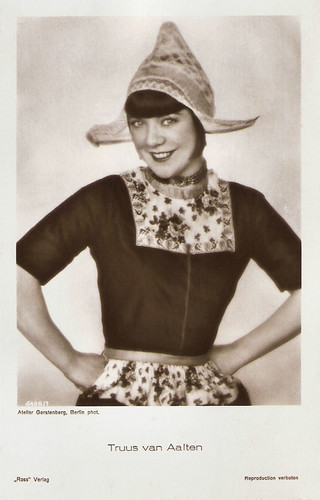
German postcard by Ross Verlag, no. 6436/1, 1931-1932. Photo: Atelier Gerstenberg, Berlin.
Dutch film star Truus van Aalten (1910-1999) made 29 films in the 1920s and 1930s, and only one of them in the Netherlands.

German promotion card for Cinegraph 'Kino, Krief und Tulpen: Deutsch-Niederländische Filmbeziehungen' (Cinema, War, and Tulips - German-Dutch Film Relations) by Cinefest / Bundelsfilmarchiv, 2002. Photo: Sonja Ziemann and Gunnar Möller in Hollandmädel/Dutch Girl (J.A. Hübler-Kahla, 1953).
Sources: Sophie Elpers (Hollandser dan kaas - Dutch), Ivo Blom (Cinefest catalogue), and Cinefest.

German postcard by Kunst und Bild, Berlin, no. A 813. Photo: Arthur Grimm, Berlin / CCC-Film. Sonja Ziemann in Hollandmädel/Dutch Girl (J.A. Hübler-Kahla, 1953).
Delicately lovely, dark-haired, and innocent-looking Sonja Ziemann (1926-2020) was a German film and television actress, singer, and dancer. Her roles in film operettas and Heimatfilms as Schwarzwaldmädel/The Black Forest Girl (Hans Deppe, 1950) and Grün ist die Heide/The Heath is Green (Hans Deppe, 1951) made her one of the first stars of Germany's post-war cinema. Her private life knew several tragedies.

German postcard by Ross Verlag, no. 4549/1, 1929-1930. Photo: Alex Binder, Berlin.
Dutch film star Truus van Aalten (1910-1999) made 29 films in the 1920s and 1930s, and only one of them in the Netherlands.

Dutch postcard by Foto-Industrie De Voorkeur, Amsterdam, no 22927. Photo: Leenheer. Esther de Boer-van Rijk in her Kniertje costume.
Esther de Boer-van Rijk (1853-1937) was the most popular Dutch actress ever. She was a national icon as the tragic fisherwoman Kniertje in the stage classic 'Op hoop van zegen' (The Good Hope) by Herman Heijermans and played the role again in both a silent (1918) and a sound film version (1934). She also appeared in a dozen other Dutch silent films.

Big French photo card by Cinéma Pathé. Photo: SCAGL. Andrée Marly in Deux vieux garçons/Two old boys (Michel Carré, 1911).
Andrée Marly is kneeling in the middle. Her lover is played by Charles Maudru. The two old men, courting young Katje in vain, and finally giving in, are Louis Baron fils and Georges Coquet. The woman in the back is Marie Ernestine Desclauzas. In real life, Marly was married to Coquet. The setting and costumes in this film refer to the popular Dutch village of Volendam.

Italian promotion postcard for Philips. Photo: Emrik & Binger, Haarlem. Captions: Philips, Eindhoven (Olanda). Ragazza Olandese (Dutch girls), no.11. Lampada Philips, Risparmio 75%, Luce Bianchissima.
Annie Bos aka Anny Bos (1886-1975) was a Dutch actress in theatre and film. She was known as the queen of the Dutch silent film, between 1912 and 1924. Bos was entitled "Holland’s most famous film actress" and the first Dutch film diva. Bos appeared in a traditional costume in the Dutch film Mooi Juultje van Volendam/Beautiful Juultje from Volendam (Alex Benno, 1924) and she was one of the traditional Dutch girls in a postcard campaign by the Philips factories.
The archaic fishing villages on the North Sea and the former Zuiderzee
Even before the cinema, from the late 19th century, the Netherlands was a popular place for German painters. The works of Max Liebermann, Hans von Bartels, and Fritz von Uhde point to this.
They fell not only on the treasures from Holland's Golden Age of the 17th century in the museums, but also on the picturesque qualities of the country, the light and clouds on the Dutch coast, the archaic fishing villages on the North Sea (Katwijk) and the former Zuiderzee (Volendam, Marken) in a time of the industrial revolution, the picturesque folk costumes, art colonies like in Laren and Bergen, and the old cityscapes and canals of Amsterdam and Dordrecht.
German cinema immediately picked up on and expanded this picturesque vision, either shooting film dramas on location in Volendam and Marken or using either a contemporary or historical studio version of Amsterdam or the Dutch fishing villages.
Fishing dramas have been associated with strong emotional reactions and disasters such as shipwrecks.
This remained so in Berlin in the 1920s with films by Dutch directors, for example with the lost film adaptation Die Fahrt ins Verderben (James Bauer, 1924), in which the Rotterdam-born German actress Adele Sandrock played the leading role. It was based on an often filmed popular Dutch play, 'Op Hoop van Zegen'.

German postcard by Verlag Ross, no. 357/2. Photo: Hanna Holdt, München. Perhaps this card refers to the film Klein Doortje/Little Dorit (Friedrich Zelnik, 1917), which takes place in the Netherlands.
German actress Lisa Weise (?-1952) starred in silent films of the 1910s. Most of her films were directed by Friedrich Zelnik and often her film partner was Karl Beckersachs .

German postcard by Ross Verlag, no. 259/3. Photo: Becker & Maass / May-Film. Mia May in Fünf Minuten zu spät/Five minutes late (Uwe Jenss Krafft, 1918).
Mia May wears the typical bonnet of the Dutch fisherman's village of Volendam. Her character's name, Jana Vermöhlen, sounds like a German transcription of Janna Vermeulen. Janna is a common old-styled Dutch female name, while Vermeulen is a common Dutch last name.

Italian postcard by Casa Editrice Ballerini & Fratini, Firenze (B.F.F. Editore), no. 373. Photo: Metro-Goldwyn, Roma. Marion Davies and Owen Moore in The Red Mill (Roscoe 'Fatty' Arbuckle (as William Goodrich), 1927).
Marion Davies (1897-1961) was one of the great comedic actresses of the silent era. She starred in nearly four dozen films between 1917 and 1937.

German postcard by Ross Verlag, no. 1852/2, 1927-1928. Photo: Fox. Janet Gaynor as Dutch farmer girl, 'Volendammer' style.
Petite Janet Gaynor (1906-1984) was the innocent-eyed, round-faced Hollywood star who won the first Academy Award for best actress for her roles in three silent films. She went on to become a leading performer in talking pictures, and was one of the most popular Hollywood leading ladies in the 1920s and 1930s. By 1934 she was receiving a yearly salary of $252,583 from Fox, making her Hollywood's most highly paid actress.

German Postcard by Ross Verlag, no. 109/1. Photo: Henny Porten Film. Henny Porten in Die Frau, die jeder liebst, bist Du/The woman everyone loves is you (Carl Froehlich, 1929).

German Postcard by Ross Verlag, no. 109/3. Photo: Henny Porten-Froehlich Produktion (HPF). Henny Porten in Die Frau, die jeder liebst, bist Du (Carl Froehlich, 1929).
Sturdy and blond Henny Porten (1890-1960) was one of Germany's most important and popular film actresses of the silent cinema. She became the quintessence of German womanhood, ladylike yet kindhearted and a not a little petit bourgeois. She was also the producer of many of her own films.
The survival of early German films in a Dutch collection
The 33rd International Film History Congress is part of the Cinefest festival. During this congress, the topics of the festival are deepened in lectures and discussions.
On Saturday 14 November, a forum discussion will take place on the importance of the Desmet Collection of EYE Film Museum for the German film history.
Due to the popularity of German films in the Netherlands as early as the 1910s, many copies of early German cinema have survived in the collection of distributor Jean Desmet, preserved by EYE in Amsterdam.
Other conference themes are the representation of the Netherlands in German cinema, the representation of the German occupation of the Netherlands in film, and the 1930s Exil Cinema in the Netherlands
The congress will open on 19 November 2020 and will take place from 20-22 November 2020, from 9:00 a.mconference. to 4:00 p.m., in the municipal cinema Metropolis Hamburg.

German postcard by Ross Verlag, no. 3413/1. Photo: Defina / Defu. Lya Mara in Heut tanzt Mariett (Friedrich Zelnik, 1928).

German postcard by Ross Verlag, no. 4308/4, 1929-1930. Photo: Ernst Schneider, Berlin.
Lya Mara (1897-1960?) was one of the biggest stars of the German silent cinema. Her stardom was even the subject of a novel, which was published in 100 episodes between 1927 and 1928. Her career virtually ended after the arrival of sound film.

German postcard by Ross Verlag, no. 5315/1, 1930-1931. Photo: Ufa. Collection: Geoffrey Donaldson Institute.
Dutch actress Lien Deyers (1910-1965) - also known as Lien Deijers and Lien Dyers - was discovered by famous director Fritz Lang who gave her a part in his film Spione/Spies (1928). She acted in a stream of late silent and early sound films. After 1935 her star faded rapidly and her life ended in tragedy.

Dutch postcard by JosPe, Arnhem. Photo: Maurice Chevalier in Volendam. This picture was taken in 1932 when The French singer and actor visited the Netherlands.
The trademark of French actor, singer, and entertainer Maurice Chevalier (1988-1972) was his casual straw hat, which he always wore on stage, plus a cane and a tuxedo. His signature songs included 'Louise', 'Mimi', and 'Thank Heaven for Little Girls'. For the cinema, he worked with such directors as Max Linder , Ernst Lubitsch , Ludwig Berger, René Clair, and Vincente Minelli. His heavy French accent, melodic voice, and Gallic charm made him the prototype of the gallant French monsieur in the Hollywood cinema of the 1930s.

German postcard by Ross Verlag, no. A 1462/1, 1937-1938. Photo: Paramount. Franziska Gaal in The Buccaneer (Cecil B. DeMille, 1938).
Popular Hungarian cabaret artist and theatrical actress Franziska Gaál (1904-1973) starred in several European films of the 1920s and 1930s. Later she went to Hollywood to star in Cecil B. DeMille's The Buccaneer (1938) and other films.

German postcard by Ross Verlag, no. A 1538/6, 1937-1938. Photo: 20th Century Fox.
Shirley Temple (1928-2014) was an American film and television actress, singer, dancer, and public servant, but everybody knows her as the most famous child star in the 1930s. Shirley could do it all: act, sing, and dance and all at the age of five! Four years in a row, between 1935 and 1938, she was the top box-office draw for Hollywood. As an adult, she entered politics and became a diplomat, serving as United States Ambassador to Ghana and later to Czechoslovakia, and as Chief of Protocol of the United States.

French postcard by Cinémagazine-Edition, Paris, no. 850. Photo: Films Paramount. Collection: Marlene Pilaete.
American actress Clara Bow (1905-1965) rose to stardom in silent film during the 1920s. It was her appearance as a plucky shopgirl in the film It (Clarence G. Badger, 1927) that brought her global fame and the nickname 'The It Girl'. Bow came to personify the Roaring Twenties and is described as its leading sex symbol.
Ossi Oswalda , Victor Janson and other German film artists, who were in the Netherlands for the Dutch premiere of Die Wohnungsnot/The Housing Shortage (Ernst Lubitsch, 1920) make a trip to Volendam. Source: Eye Filmmuseum(YouTube).

German postcard by Ross Verlag, no. 6436/1, 1931-1932. Photo: Atelier Gerstenberg, Berlin.
Dutch film star Truus van Aalten (1910-1999) made 29 films in the 1920s and 1930s, and only one of them in the Netherlands.

German promotion card for Cinegraph 'Kino, Krief und Tulpen: Deutsch-Niederländische Filmbeziehungen' (Cinema, War, and Tulips - German-Dutch Film Relations) by Cinefest / Bundelsfilmarchiv, 2002. Photo: Sonja Ziemann and Gunnar Möller in Hollandmädel/Dutch Girl (J.A. Hübler-Kahla, 1953).
Sources: Sophie Elpers (Hollandser dan kaas - Dutch), Ivo Blom (Cinefest catalogue), and Cinefest.
Published on November 19, 2020 22:00
November 18, 2020
Produced by Marten Toonder
For the seventh day of Cinefest, the 17th International Festival of German Film-Heritage, EFSP selected Marten Toonder (1912-2005), the creator of the Dutch comic strip 'Tom Poes & Oliver B. Bommel' and the father of the Dutch animation film. In 1942, he founded an animation film studio together with puppeteer Joop Geesink. During the Nazi occupation, he worked for the Ufa on the Dutch-German production, Tom Puss. Das Geheimnis der Grotte/Tom Poes en het geheim van de grot/Tom Puss and the secret of the cave (1942-1944). Many animation films would follow. The black and white comics of Tom Puss were so popular that in 1942 8 stories were issued as colour postcards.
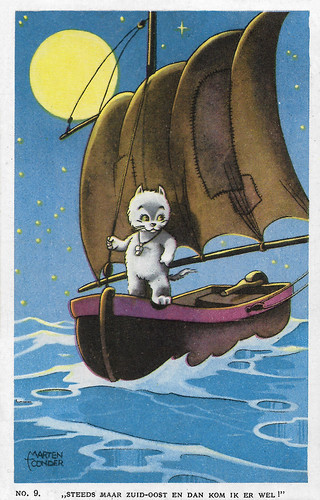
Dutch postcard by Ed. De Muinck & Co., Amsterdam. Tom Poes (Tom Puss) by Marten Toonder, Series 2 'De Toverpijp' (The Magic Pipe), card no. 9. Sent by mail in 1943. Caption: Always South-East and I'll get there.
'Tom Poes en de Toverpijp' (Tom Puss and the Magic Pipe), in book editions/parlance shortened to 'The magic pipe', is the second story from the Bommelsaga, written and drawn by Marten Toonder. The story first appeared on 10 June 1941 and ran until 11 July of that year. The hiatus of more than two months in the Telegraaf was the result of after-censorship by the German occupier. The theme of the story is aid to the enemy.
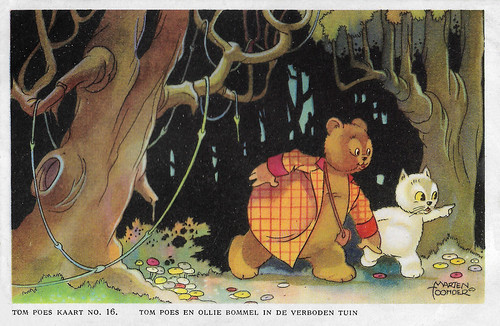
Dutch postcard by Ed. De Muinck & Co., Amsterdam. Tom Poes (Tom Puss) by Marten Toonder, Series 3 'De Tovertuin' (The Magic Garden), card no. 16. Sent by mail in 1943. Caption: Tom Puss and Oliver B. Bumble in the forbidden garden.
'Tom Poes in de tovertuin' (Tom Puss in the Magic Garden), in book editions/parlance shortened to 'The Magic Garden' is the third story from the Bommelsaga, written and drawn by Marten Toonder. The story first appeared on 12 July 1941 and ran until 13 August of that year. In this story, Tom Puss meets Oliver B. Bumble and the wizard Hocus P. Pas for the first time.
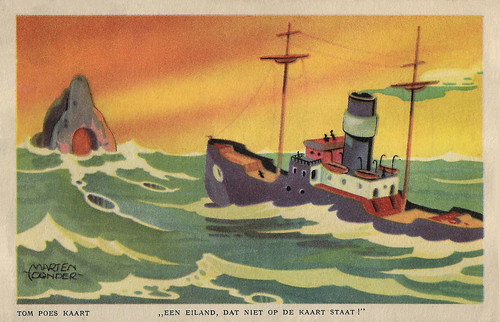
Dutch postcard by Ed. De Muinck & Co., Amsterdam. Tom Poes (Tom Puss) by Marten Toonder, Series 4 'Tom Poes en het verdwijneiland' (The disappearing island), card no. 21. Sent by mail in 1957. Caption: An island that is not on the map.
'Tom Poes en het verdwijneiland' (Tom Puss and the disappearing island), in book editions/parlance shortened to 'The disappearing island', is a story from the Bommelsaga, written and drawn by Marten Toonder. The story first appeared on 18 October 1941 and ran until 19 November of that year. The theme is dangerous sea shipping. In this story, two more or less permanent characters make their debut: Captain Wal Rus and the evil professor Sickbock.
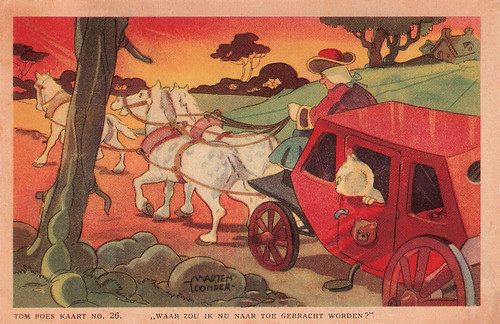
Dutch postcard by Ed. De Muinck & Co., Amsterdam. Tom Poes (Tom Puss) by Marten Toonder, series 5 'De Drakenburcht' (The Dragon Court), card no. 26. Caption: Where would I be taken now?
'Tom Poes en De Drakenburcht' (Tom Puss and the Dragon Court) (in book editions shortened to 'The Dragon Court') is a story from the Bommelsaga, written and drawn by Marten Toonder. The story first appeared on 16 September 1941 and ran until 17 October of that year. This is the first story in which Bommelstein Castle plays a role.

Dutch postcard by Ed. De Muinck & Co., Amsterdam. Tom Poes (Tom Puss) by Marten Toonder, series 5 'De Drakenburcht' (The Dragon Court), card no. 28. Sent by mail in 1944.
'Tom Poes en De Drakenburcht' (Tom Puss and the Dragon Court) (in book editions shortened to 'The Giant Bird') is a story from the Bommelsaga, written and drawn by Marten Toonder.
A comic series which became literature
Marten Toonder was born in Rotterdam, The Netherlands, in 1912. Toonder was introduced to comics through the comics his father, who was a sea captain, brought from the United States.
After his final exams, in 1931, he went to Buenos Aires with his father. There he got acquainted with Jim Davis, the assistant of the well-known Argentine artist and editor Dante Quinterno, who ran a studio producing comics. Quinterno's creations impressed him to such a degree that he decided to become an artist himself.
In 1935 he married Afine Kornélie Dik, originally a girl next door from his youth who, under the name Phiny Dick, drew and wrote comics and children's books herself. She also made texts for her husband's drawings for the comic 'Kappie'.
In 1938 Roonder's first comic appeared in a Swedish newspaper. His most famous comic series would become the 'Tom Poes & Olivier B. Bommel' (Tom Puss and Oliver B. Bumble) series. From 1941 until 1986, it appeared in De Telegraaf, a Dutch newspaper.
The comic series has a very characteristic format. Every day there were three drawings and an accompanying text (about a book-page long). 177 Bommel stories have been published as a comic book novel, of which selections were later re-released in book form several times. They are usually referred to by the term 'Bommelsaga' or 'daily newspaper strips'.
Tom Poes & Olivier B. Bommel started out as a children's cartoon but gradually became more relevant to adults. Nowadays his texts are considered literature by some critics, and Toonder received several literary prizes for them. He invented many new words and expressions and some of those are now widely used in the Dutch language.
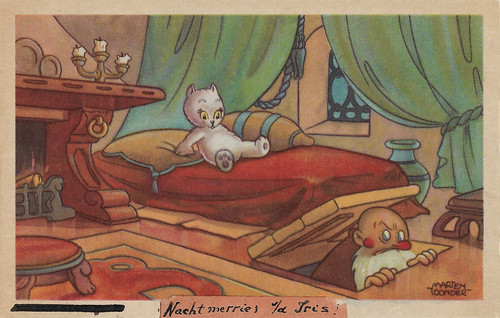
Dutch postcard by Ed. De Muinck & Co., Amsterdam. Tom Poes (Tom Puss) by Marten Toonder, series 7 'De reuzenvogel' (The Giant Bird), card no. 38.
'Tom Poes en De Reuzenvogel' (Tom Puss and the Giant Bird) (in book editions shortened to 'The Giant Bird') is a story from the Bommelsaga, written and drawn by Marten Toonder. The story first appeared on 20 November 1941 in De Telegraaf and ran until 21 December of that year. The theme of the story is food robbery. Although Toonder was not allowed to deal with topical issues, in the period 1941-1944 he continued to walk along the edge of a ban.
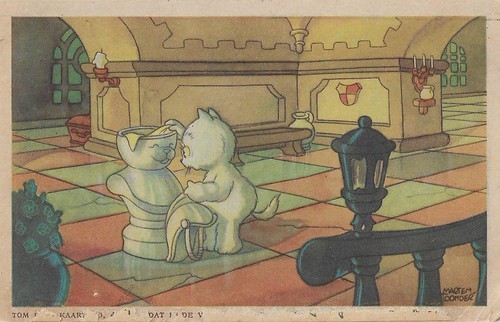
Dutch postcard by Ed. De Muinck & Co., Amsterdam. Tom Poes (Tom Puss) by Marten Toonder, Series 7 'De reuzenvogel' (The Giant Bird), card no. 40.
Despite German censorship, hidden messages were inserted. In 'Tom Poes en De Reuzenvogel' (Tom Puss and the Giant Bird), Tom Poes discovers that the wizard Hocus Pas is using Olivier B. Bommel's castle as a hideout for a giant bird. Every night the bird steals grain from the farmers, so the wizard can make a potion that will impose his will on everybody.

Dutch postcard by Ed. De Muinck & Co., Amsterdam. Tom Poes (Tom Puss) by Marten Toonder, Series 8 'Tom Poes en de rare uitvinding' (The Weird Invention), card no. 43. Sent by mail in 1944.
'Tom Poes en de rare uitvinding' (Tom Puss and the Weird Invention - in book editions/parlance shortened to 'The weird Invention', is a story from the Bommelsaga, written and drawn by Marten Toonder. The story first appeared on 23 December 1941 and ran until 27 January 1942. The theme of the story is mass hypnosis. This is a covert reference to Joseph Goebbels' propaganda.
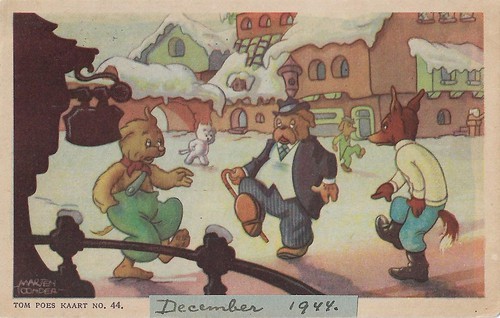
Dutch postcard by Ed. De Muinck & Co., Amsterdam. Tom Poes (Tom Puss) by Marten Toonder, Series 8 'Tom Poes en de rare uitvinding' (Tom Puss and the Strange Invention), card no. 44. Ed. De Muinck & Co., Amsterdam, 1943. The postcard was written on 20 May 1945 (after the Dutch Liberation) but refers to December 1944.
'Tom Poes en de rare uitvinding' refers to mass hypnosis and was considered to secretly refer to Joseph Goebbels, Hitler's Minister of Propaganda. The comics appeared in the daily De Telegraaf between 23 December 1941 and 27 January 1942.
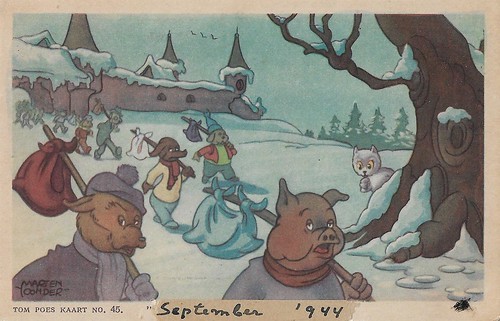
Dutch postcard by Ed. De Muinck & Co., Amsterdam. Tom Poes (Tom Puss) by Marten Toonder, Series 8 'Tom Poes en de rare uitvinding' (Tom Puss and the Strange Invention), card no. 45. The postcard was written on 20 May 1945 (after the Dutch Liberation) but refers to September 1944.
The plot of 'Tom Poes en de rare uitvinding' deals with the city of Rommeldam turned into a city of sleepwalkers. The next day all the inhabitants leave the city and start wandering. Tom Poes discovers this is all an experiment of Prof. Sickbock and criminal Pietje Kolibrie and his gang to rob the houses of all inhabitants by use of a hypnotising mirror and transmission masts. Whoever wears rubber boots is immune to the hypnosis. In the end, Tom Poes arranges that the Professor and the criminal gang are arrested.
A compliment from Walt Disney
In 1942, Marten Toonder founded a film studio together with film producer Joop Geesink. Toonder was mainly concerned with cartoons and Geesink was more into puppet films.
In 1943, Toonder founded Toonder Studio's, a company that was an offshoot of Toonder-Geesink production. The company initially focused on the release of comics but later moved into advertising and animation films as well.
A number of the Tom Poes & Olivier B. Bommel stories have been released in the cinema as animation films, but these were not very successful. The first one was the Dutch-German production, Tom Puss. Das Geheimnis der Grotte/Tom Poes en het geheim van de grot (Maarten Toonder, 1942-1944). The animation films did have the fun but lacked the subtler humour that the stories convey.
An exception may be the animated feature Als je begrijpt wat ik bedoel/If you understand what I mean (Harrie Geelen, Bjørn Frank Jensen, Bert Kroon, 1983) after the collection of stories of the same name. This animation film received a compliment from Walt Disney and Warner Bros. However, Marten Toonder himself was not entirely happy with the film.
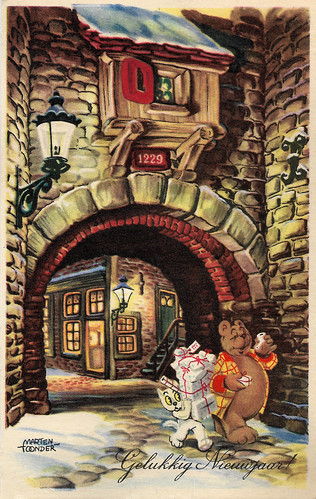
Dutch postcard by Ed. De Muinck & Co., Amsterdam. Image: Marten Toonder. Caption: Happy New Year.
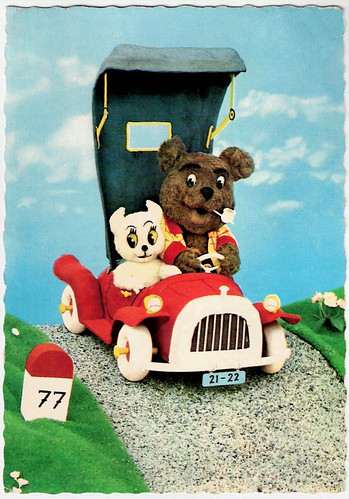
Dutch postcard by GRAVO / Gebr. Spanjersberg N.V., Rotterdam. Image: Marten Toonder. Sent by mail in 1961.

Dutch postcard by GRAVO. Image: Marten Toonder.
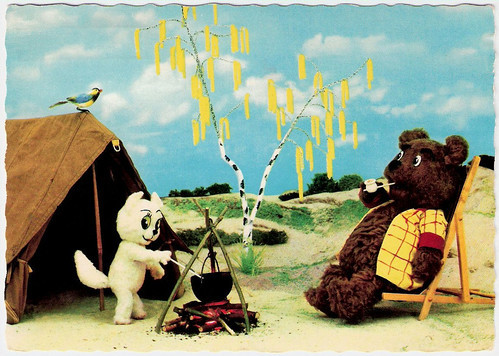
Dutch postcard by GRAVO. Image: Marten Toonder.
A television series tailored entirely to the small viewer
From 1960, Tom Poes & heer Bommel (Tom Puss and Lord Bumble) experienced two adventures on television with 'Tom Poes en het echoputje' (Tom Puss and the little echo pit) and 'De schatkaart van opa Bastiaan' (The treasure map of grandfather Bastiaan). Marten Toonder and his closest collaborator Lo Hartog van Banda conceived and wrote the stories.
It was not their first collaboration on television because in 1958 Lo Hartog van Banda had already adapted the comic strip 'Panda and the master tinkerer' into a television series.
The series was a collaboration between Toonder Studios and Bert Brugman's marionette theatre. Coincidentally, Brugman was Marten Toonder's neighbour in the city of Blaricum. The first series took place in Rommeldam and surroundings, but Tom Poes & heer Bommel made long journeys to strange locations for the second story.
The comic was mainly read by adults, so the television series had to be tailored entirely to the small viewer. So a lot had to be done in half an hour.
In 1964 Toonder moved with his wife to Greystones, Ireland, to devote himself entirely to cartoon drawing. He was surprised to find that the Irish landscape was very similar to what he had drawn in his Bommel comics for years.
Phiny Dick died in 1990, and in 1996 Toonder remarried the composer Tera de Marez Oyens, who later that year died of an incurable disease - just like his first wife. Since then Toonder has lived in the Rosa Spier Huis in Laren. In 2005, Marten Toonder died in his sleep at the age of 93. He is buried in Greystones' Redford Cemetery.
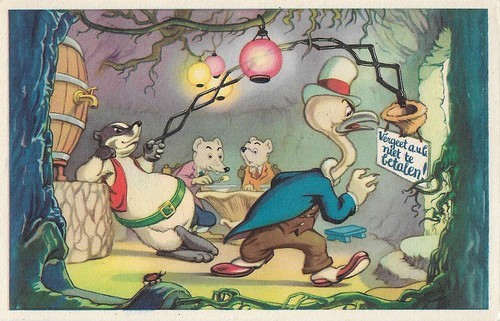
Dutch postcard by Marten Toonder Studios. Doremias Das (1952), no. 8 of 10, designed by Wim Lensen (1914-1993).
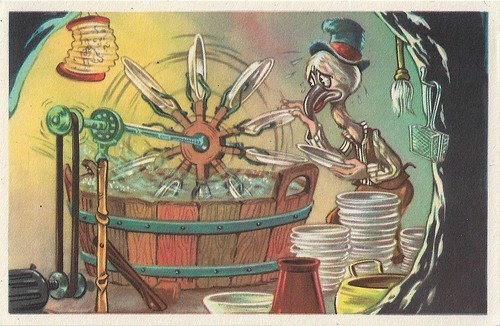
Dutch postcard by Marten Toonder Studios. Doremias Das (1952), no. 10 of 10, designed by Wim Lensen.
The plot of this postcard series of the comic Doremias Das (1952) is about a friendly but sharp badger called Doremias, who likes music. He owns a fancy restaurant in the woods, which he even remodels to attract clients. A client is treated to tasteful food and fresh drinks, and even music (though requiring an extra payment). When the client leaves without payment, the badger has the means to remind him. The last card shows what happens to whoever doesn't pay. On the back of each card, each episode is indicated as a rhyming couplet.
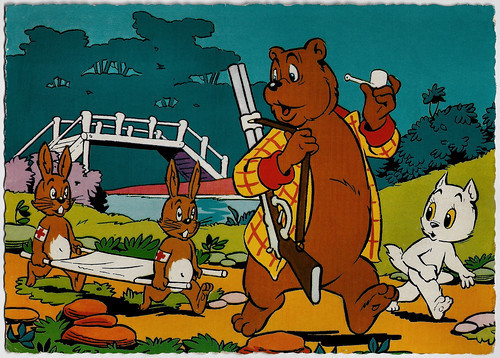
Dutch postcard by Vita Nova, Schiedam / Gebr. Spanjerberg, Rotterdam. Image: Marten Toonder Studio's. Caption: Lord Bumble wants to stop hunting. He doesn't see a chance to hit a hare. The hares themselves do not see that way and prefer not to take any risks.
Dutch film news item on the Marten Toonder Studio's (1973). Source: Nederlands Instituut voor Beeld en Geluid (YouTube).
Dutch trailer for Als je begrijpt wat ik bedoel/If you understand what I mean (1983). Source: Kneiter FM (YouTube).
On 25 November, EFSP will present a post on Joop Geesink.
Sources: Wikipedia (Dutch and English) and .

Dutch postcard by Ed. De Muinck & Co., Amsterdam. Tom Poes (Tom Puss) by Marten Toonder, Series 2 'De Toverpijp' (The Magic Pipe), card no. 9. Sent by mail in 1943. Caption: Always South-East and I'll get there.
'Tom Poes en de Toverpijp' (Tom Puss and the Magic Pipe), in book editions/parlance shortened to 'The magic pipe', is the second story from the Bommelsaga, written and drawn by Marten Toonder. The story first appeared on 10 June 1941 and ran until 11 July of that year. The hiatus of more than two months in the Telegraaf was the result of after-censorship by the German occupier. The theme of the story is aid to the enemy.

Dutch postcard by Ed. De Muinck & Co., Amsterdam. Tom Poes (Tom Puss) by Marten Toonder, Series 3 'De Tovertuin' (The Magic Garden), card no. 16. Sent by mail in 1943. Caption: Tom Puss and Oliver B. Bumble in the forbidden garden.
'Tom Poes in de tovertuin' (Tom Puss in the Magic Garden), in book editions/parlance shortened to 'The Magic Garden' is the third story from the Bommelsaga, written and drawn by Marten Toonder. The story first appeared on 12 July 1941 and ran until 13 August of that year. In this story, Tom Puss meets Oliver B. Bumble and the wizard Hocus P. Pas for the first time.

Dutch postcard by Ed. De Muinck & Co., Amsterdam. Tom Poes (Tom Puss) by Marten Toonder, Series 4 'Tom Poes en het verdwijneiland' (The disappearing island), card no. 21. Sent by mail in 1957. Caption: An island that is not on the map.
'Tom Poes en het verdwijneiland' (Tom Puss and the disappearing island), in book editions/parlance shortened to 'The disappearing island', is a story from the Bommelsaga, written and drawn by Marten Toonder. The story first appeared on 18 October 1941 and ran until 19 November of that year. The theme is dangerous sea shipping. In this story, two more or less permanent characters make their debut: Captain Wal Rus and the evil professor Sickbock.

Dutch postcard by Ed. De Muinck & Co., Amsterdam. Tom Poes (Tom Puss) by Marten Toonder, series 5 'De Drakenburcht' (The Dragon Court), card no. 26. Caption: Where would I be taken now?
'Tom Poes en De Drakenburcht' (Tom Puss and the Dragon Court) (in book editions shortened to 'The Dragon Court') is a story from the Bommelsaga, written and drawn by Marten Toonder. The story first appeared on 16 September 1941 and ran until 17 October of that year. This is the first story in which Bommelstein Castle plays a role.

Dutch postcard by Ed. De Muinck & Co., Amsterdam. Tom Poes (Tom Puss) by Marten Toonder, series 5 'De Drakenburcht' (The Dragon Court), card no. 28. Sent by mail in 1944.
'Tom Poes en De Drakenburcht' (Tom Puss and the Dragon Court) (in book editions shortened to 'The Giant Bird') is a story from the Bommelsaga, written and drawn by Marten Toonder.
A comic series which became literature
Marten Toonder was born in Rotterdam, The Netherlands, in 1912. Toonder was introduced to comics through the comics his father, who was a sea captain, brought from the United States.
After his final exams, in 1931, he went to Buenos Aires with his father. There he got acquainted with Jim Davis, the assistant of the well-known Argentine artist and editor Dante Quinterno, who ran a studio producing comics. Quinterno's creations impressed him to such a degree that he decided to become an artist himself.
In 1935 he married Afine Kornélie Dik, originally a girl next door from his youth who, under the name Phiny Dick, drew and wrote comics and children's books herself. She also made texts for her husband's drawings for the comic 'Kappie'.
In 1938 Roonder's first comic appeared in a Swedish newspaper. His most famous comic series would become the 'Tom Poes & Olivier B. Bommel' (Tom Puss and Oliver B. Bumble) series. From 1941 until 1986, it appeared in De Telegraaf, a Dutch newspaper.
The comic series has a very characteristic format. Every day there were three drawings and an accompanying text (about a book-page long). 177 Bommel stories have been published as a comic book novel, of which selections were later re-released in book form several times. They are usually referred to by the term 'Bommelsaga' or 'daily newspaper strips'.
Tom Poes & Olivier B. Bommel started out as a children's cartoon but gradually became more relevant to adults. Nowadays his texts are considered literature by some critics, and Toonder received several literary prizes for them. He invented many new words and expressions and some of those are now widely used in the Dutch language.

Dutch postcard by Ed. De Muinck & Co., Amsterdam. Tom Poes (Tom Puss) by Marten Toonder, series 7 'De reuzenvogel' (The Giant Bird), card no. 38.
'Tom Poes en De Reuzenvogel' (Tom Puss and the Giant Bird) (in book editions shortened to 'The Giant Bird') is a story from the Bommelsaga, written and drawn by Marten Toonder. The story first appeared on 20 November 1941 in De Telegraaf and ran until 21 December of that year. The theme of the story is food robbery. Although Toonder was not allowed to deal with topical issues, in the period 1941-1944 he continued to walk along the edge of a ban.

Dutch postcard by Ed. De Muinck & Co., Amsterdam. Tom Poes (Tom Puss) by Marten Toonder, Series 7 'De reuzenvogel' (The Giant Bird), card no. 40.
Despite German censorship, hidden messages were inserted. In 'Tom Poes en De Reuzenvogel' (Tom Puss and the Giant Bird), Tom Poes discovers that the wizard Hocus Pas is using Olivier B. Bommel's castle as a hideout for a giant bird. Every night the bird steals grain from the farmers, so the wizard can make a potion that will impose his will on everybody.

Dutch postcard by Ed. De Muinck & Co., Amsterdam. Tom Poes (Tom Puss) by Marten Toonder, Series 8 'Tom Poes en de rare uitvinding' (The Weird Invention), card no. 43. Sent by mail in 1944.
'Tom Poes en de rare uitvinding' (Tom Puss and the Weird Invention - in book editions/parlance shortened to 'The weird Invention', is a story from the Bommelsaga, written and drawn by Marten Toonder. The story first appeared on 23 December 1941 and ran until 27 January 1942. The theme of the story is mass hypnosis. This is a covert reference to Joseph Goebbels' propaganda.

Dutch postcard by Ed. De Muinck & Co., Amsterdam. Tom Poes (Tom Puss) by Marten Toonder, Series 8 'Tom Poes en de rare uitvinding' (Tom Puss and the Strange Invention), card no. 44. Ed. De Muinck & Co., Amsterdam, 1943. The postcard was written on 20 May 1945 (after the Dutch Liberation) but refers to December 1944.
'Tom Poes en de rare uitvinding' refers to mass hypnosis and was considered to secretly refer to Joseph Goebbels, Hitler's Minister of Propaganda. The comics appeared in the daily De Telegraaf between 23 December 1941 and 27 January 1942.

Dutch postcard by Ed. De Muinck & Co., Amsterdam. Tom Poes (Tom Puss) by Marten Toonder, Series 8 'Tom Poes en de rare uitvinding' (Tom Puss and the Strange Invention), card no. 45. The postcard was written on 20 May 1945 (after the Dutch Liberation) but refers to September 1944.
The plot of 'Tom Poes en de rare uitvinding' deals with the city of Rommeldam turned into a city of sleepwalkers. The next day all the inhabitants leave the city and start wandering. Tom Poes discovers this is all an experiment of Prof. Sickbock and criminal Pietje Kolibrie and his gang to rob the houses of all inhabitants by use of a hypnotising mirror and transmission masts. Whoever wears rubber boots is immune to the hypnosis. In the end, Tom Poes arranges that the Professor and the criminal gang are arrested.
A compliment from Walt Disney
In 1942, Marten Toonder founded a film studio together with film producer Joop Geesink. Toonder was mainly concerned with cartoons and Geesink was more into puppet films.
In 1943, Toonder founded Toonder Studio's, a company that was an offshoot of Toonder-Geesink production. The company initially focused on the release of comics but later moved into advertising and animation films as well.
A number of the Tom Poes & Olivier B. Bommel stories have been released in the cinema as animation films, but these were not very successful. The first one was the Dutch-German production, Tom Puss. Das Geheimnis der Grotte/Tom Poes en het geheim van de grot (Maarten Toonder, 1942-1944). The animation films did have the fun but lacked the subtler humour that the stories convey.
An exception may be the animated feature Als je begrijpt wat ik bedoel/If you understand what I mean (Harrie Geelen, Bjørn Frank Jensen, Bert Kroon, 1983) after the collection of stories of the same name. This animation film received a compliment from Walt Disney and Warner Bros. However, Marten Toonder himself was not entirely happy with the film.

Dutch postcard by Ed. De Muinck & Co., Amsterdam. Image: Marten Toonder. Caption: Happy New Year.

Dutch postcard by GRAVO / Gebr. Spanjersberg N.V., Rotterdam. Image: Marten Toonder. Sent by mail in 1961.

Dutch postcard by GRAVO. Image: Marten Toonder.

Dutch postcard by GRAVO. Image: Marten Toonder.
A television series tailored entirely to the small viewer
From 1960, Tom Poes & heer Bommel (Tom Puss and Lord Bumble) experienced two adventures on television with 'Tom Poes en het echoputje' (Tom Puss and the little echo pit) and 'De schatkaart van opa Bastiaan' (The treasure map of grandfather Bastiaan). Marten Toonder and his closest collaborator Lo Hartog van Banda conceived and wrote the stories.
It was not their first collaboration on television because in 1958 Lo Hartog van Banda had already adapted the comic strip 'Panda and the master tinkerer' into a television series.
The series was a collaboration between Toonder Studios and Bert Brugman's marionette theatre. Coincidentally, Brugman was Marten Toonder's neighbour in the city of Blaricum. The first series took place in Rommeldam and surroundings, but Tom Poes & heer Bommel made long journeys to strange locations for the second story.
The comic was mainly read by adults, so the television series had to be tailored entirely to the small viewer. So a lot had to be done in half an hour.
In 1964 Toonder moved with his wife to Greystones, Ireland, to devote himself entirely to cartoon drawing. He was surprised to find that the Irish landscape was very similar to what he had drawn in his Bommel comics for years.
Phiny Dick died in 1990, and in 1996 Toonder remarried the composer Tera de Marez Oyens, who later that year died of an incurable disease - just like his first wife. Since then Toonder has lived in the Rosa Spier Huis in Laren. In 2005, Marten Toonder died in his sleep at the age of 93. He is buried in Greystones' Redford Cemetery.

Dutch postcard by Marten Toonder Studios. Doremias Das (1952), no. 8 of 10, designed by Wim Lensen (1914-1993).

Dutch postcard by Marten Toonder Studios. Doremias Das (1952), no. 10 of 10, designed by Wim Lensen.
The plot of this postcard series of the comic Doremias Das (1952) is about a friendly but sharp badger called Doremias, who likes music. He owns a fancy restaurant in the woods, which he even remodels to attract clients. A client is treated to tasteful food and fresh drinks, and even music (though requiring an extra payment). When the client leaves without payment, the badger has the means to remind him. The last card shows what happens to whoever doesn't pay. On the back of each card, each episode is indicated as a rhyming couplet.

Dutch postcard by Vita Nova, Schiedam / Gebr. Spanjerberg, Rotterdam. Image: Marten Toonder Studio's. Caption: Lord Bumble wants to stop hunting. He doesn't see a chance to hit a hare. The hares themselves do not see that way and prefer not to take any risks.
Dutch film news item on the Marten Toonder Studio's (1973). Source: Nederlands Instituut voor Beeld en Geluid (YouTube).
Dutch trailer for Als je begrijpt wat ik bedoel/If you understand what I mean (1983). Source: Kneiter FM (YouTube).
On 25 November, EFSP will present a post on Joop Geesink.
Sources: Wikipedia (Dutch and English) and .
Published on November 18, 2020 22:00
November 17, 2020
Sabine Sinjen
Guten tag! The theme of Cinefest, the 17th International Festival of German Film-Heritage is 'German-Dutch Film Relations'. A German film with a Dutch touch is Es/It (Ulrich Schamoni, 1964) shot by cinematographer Gérard Vandenberg from the Netherlands. Star of Es is the German stage and film actress Sabine Sinjen (1942-1995), who won the Filmband in Gold, the German equivalent of the Oscar, for her role. In the 1950s, Sinjen had started as a natural and innocent teenager star, but she changed her image and became one of the protagonists of the Neue Deutsche Film in the 1960s and also a respected stage actress.
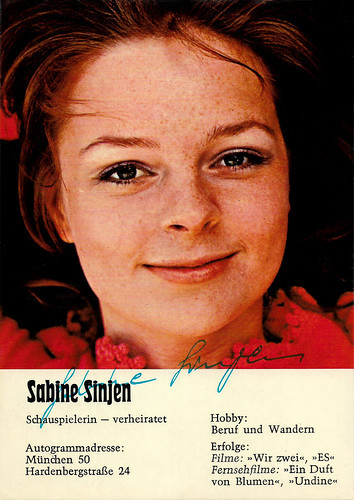
German recipe card by Axel Juncker Verlag GmbH, München / Zürich / Wien. On the flip side a recipe for Crabs in dill sauce with saffron rice and cucumber salad.
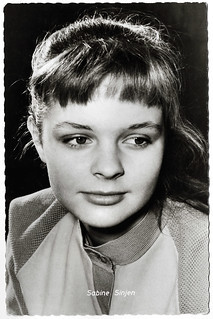
German postcard by Kolibri-Verlag G.m.b.H., Minden/Westf., no. 957. Photo: Kolibri / Otfried / Schmidt.
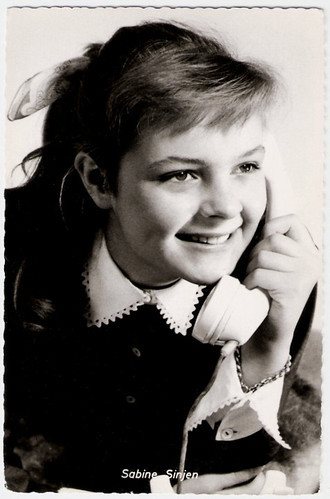
German postcard by Kolibri-Verlag G.m.b.H., Minden-Westf., no. 569. Photo: Kolibri / Enzwieser.
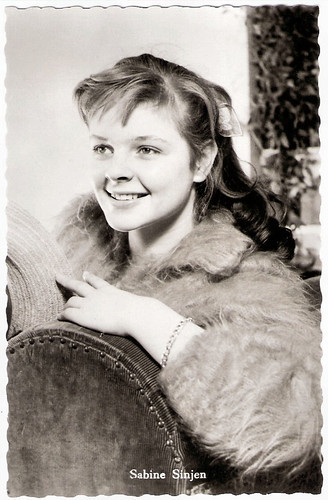
German postcard by Kolibri-Verlag G.m.b.H., Minden-Westf., no. 615. Photo: Kolibri / Enzwieser.
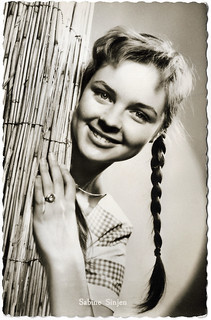
German postcard by Kolibri-Verlag G.m.b.H., Minden/Westf., no. 737. Photo: Kolibri / Lothar Winkler.
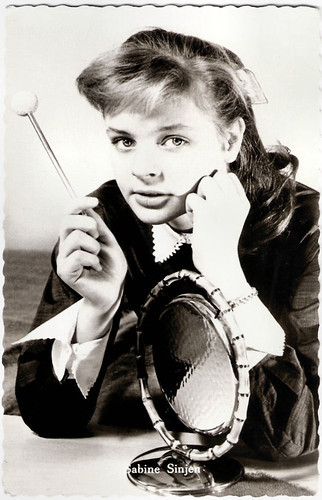
German postcard by Kolibri Verlag G.m.b.H., Minden/Westf., no. 773. Photo: Kolibri / Entwieser.
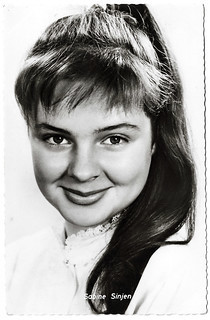
German postcard by Kolibri-Verlag G.m.b.H., Minden/Westf., no. 847. Photo: Kolibri / Studio Meinen, München (Munich).
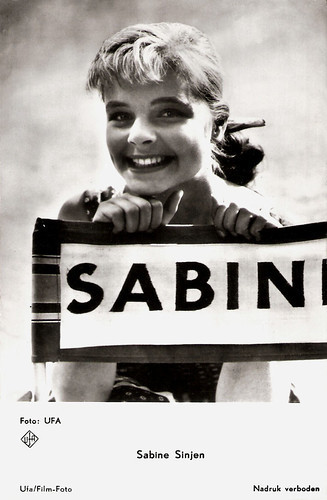
Dutch postcard by Gebr. Spanjersberg N.V., Rotterdam, no. 4295, licency holder for UFA/Film-Foto in the Netherlands. Sent by mail in 1959. Photo: UFA.
Cheesy Heimatfilms
Sabine Sinjen was born in Itzehoe, Germany, in 1942 as the daughter of the journalist Marlen Sinjen, born Kolbe. Her father, an engineer and architect, died during World War II in Russia.
Together with her mother and older sisters Julia and Frauke, she grew up in Hamburg and Munich. As a little girl, she already performed for the children's radio of the WDR. Later she took drama lessons.
In Die Frühreifen/Precocious Youth (Josef von Báky, 1957) she played her first film role as the innocent-naive Hannelore who falls in love with the wrong guy. In the cast were also such popular teen stars as Heidi Brühl and Peter Kraus .
She proved to be a natural talent and next, she played with Lili Palmer and Romy Schneider in the remake of Mädchen in Uniform/Girls in Uniform (Géza von Radványi, 1958).
Producer Artur Brauner gave her a seven-year contract, and she became a star with the box office hit Stefanie (Josef von Báky, 1958) opposite Carlos Thompson and the sequel Stefanie in Rio (Curtis Bernhardt, 1960). She also appeared in Das Glas Wasser/A Glass of Water (Helmut Käutner, 1960) next to Gustaf Gründgens and Lilo Pulver .
Brauner kept her playing the natural and innocent teenager in cheesy Heimatfilms like Die Försterchristel/The Forester's Daughter (Franz Josef Gottlieb, 1962), but she did not want to be typecasted and broke her contract.
Like Romy Schneider , she went to France, where she made films like Les tontons flingueurs/Crooks in Clover (Georges Lautner, 1963), starring Lino Ventura and Bernard Blier . She also appeared in the EuroWestern Die Flußpiraten vom Mississippi/The Pirates of the Mississippi (Jürgen Roland, 1964) opposite Hansjörg Felmy and Brad Harris. It was a co-production between West Germany, France, and Italy.

Dutch postcard by Hercules, Haarlem, no. 279. Photo: Hafbofilm. Sabine Sinjen and Corny Collins in Schmutziger Engel/Imperfect Angel (Alfred Vohrer, 1958).
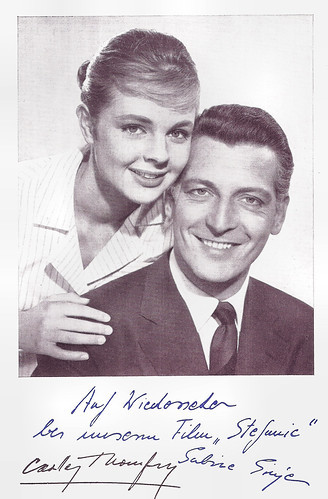
German postcard by Ufa. Photo: Publicity still for Stefanie (1958) with Carlos Thompson .
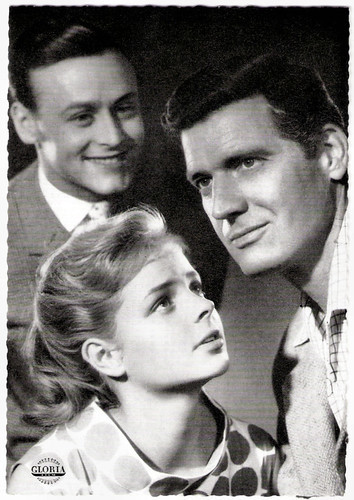
German postcard by Filmbilder-Vertrieb Ernst Freihoff, Essen. Photo: CCC-Film / Gloria-Film / Arthur Grimm. Paul Hubschmid, Sabine Sinjen and Helmut Lohner in Marili (Josef von Báky, 1959).
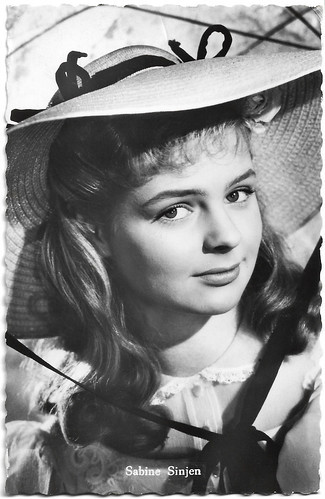
Dutch postcard by N.V. v.h. Weenenk & Snel, Baarn, no. 306. Sabine Sinjen in Alt Heidelberg/Old Heidelberg (Ernst Marischka, 1959). Collection: Geoffrey Donaldson Institute.
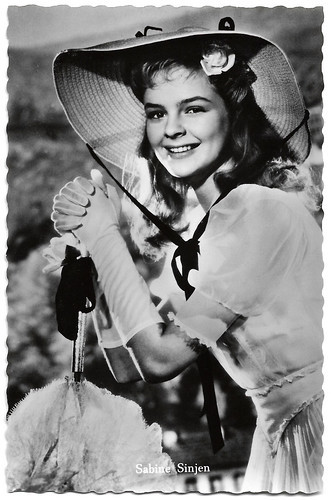
Dutch postcard, no. 1060. Sabine Sinjen in Alt Heidelberg/Old Heidelberg (Ernst Marischka, 1959). Collection: Geoffrey Donaldson Institute.
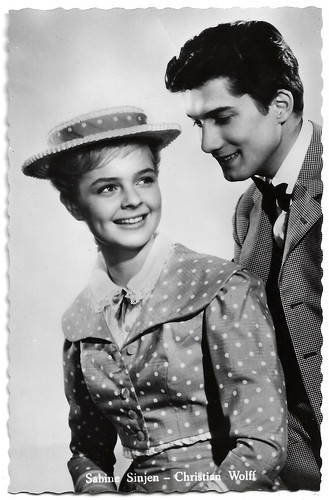
Dutch postcard by N.V. v.h. Weenenk & Snel, Baarn, no. 1066. Sabine Sinjen and Christian Wolff in Alt Heidelberg/Old Heidelberg (Ernst Marischka, 1959). Collection: Geoffrey Donaldson Institute.
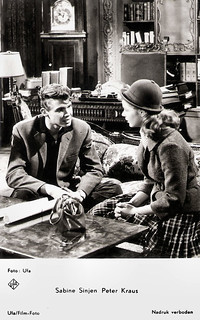
Dutch postcard by Gebr. Spanjersberg N.V., Rotterdam, no. 1312. Photo: Ufa. Sabine Sinjen and Peter Kraus in Kein Engel ist so rein/No angel is so pure (Wolfgang Becker, 1960).
Neue Deutsche film
In the early 1960s, Sabine Sinjen debuted as a stage actress as Wendla Bergmann in Frank Wedekind's play 'Frühlings Erwachen' (Spring Awakening) at the Schillertheater in Berlin. She stayed at the Schillertheater for two years. Later she performed at the Staatlichen Schauspielbühnen Berlin (1967) and at the Theater in der Josefstadt (1967-1971) in Vienna.
On TV, she became very popular as the daughter of veterinarian Gustav Knuth and Tilly Lauenstein in the family series Alle meine Tiere/All My Animals (1962-1963). She also appeared with Martin Benrath and Gerlinde Locker on television in the Oscar Wilde comedy Ein idealer Gatte/Am Ideal Husband (1965)
In 1963 Sinjen married director Peter Beauvais, with whom she made some ambitious literary adaptations for television such as Die Ratten/The Rats (Peter Beauvais, 1969), based on a play by Gerhart Hauptmann, and Dorothea Merz (Peter Beauvais, 1976) based on the novel by Tankred Dorst. She also appeared in several entertainment productions, such as the Courths-Mahler adaptation Griseldis (Peter Beauvais, 1974), which moved millions of viewers to tears.
In the mid-1960s she started to work with film director Ulrich Schamoni and became the protagonist of the Neue Deutsche Film (New German Cinema). Es/It (Ulrich Schamoni, 1965) tells the story of a young couple and the marriage crisis resulting from a concealed pregnancy and abortion. For her role, Sinjen won the Filmband in Gold, the German Oscar, for her role.
Next, she played women in problematic situations in such films as Alle Jahre wieder/Next Year, Same Time (Ulrich Schamoni, 1967), and Wir zwei/We Two (Ulrich Schamoni, 1969).
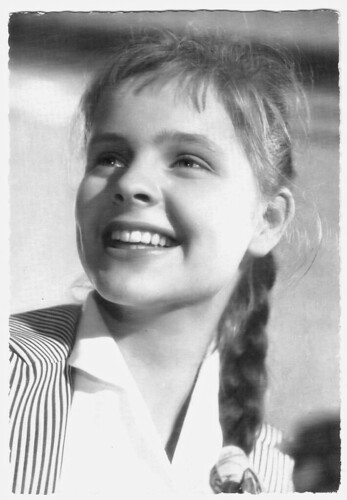
German postcard by WS-Druck, Wanne-Eickel, no. 291. Photo: Arthur Grimm / Europa.
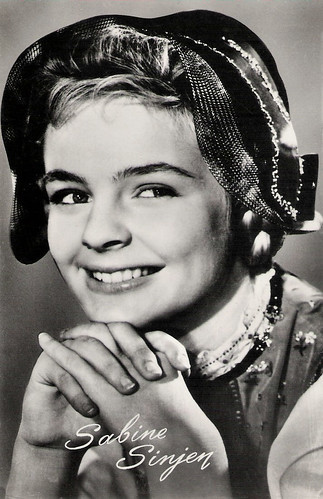
Dutch postcard by Takken, Utrecht, no. AX 4566.
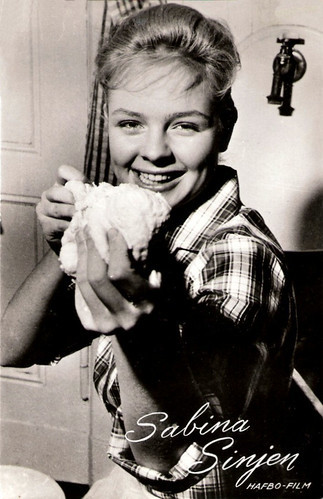
Dutch postcard by Takken, Utrecht, no. AX 4199. Photo: HAFBO-Film.
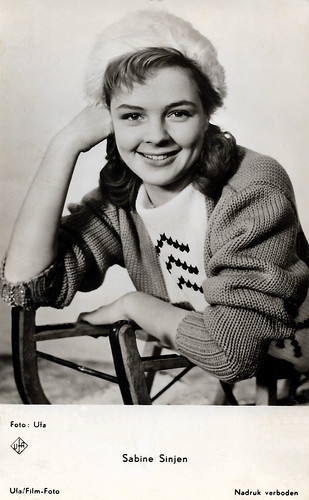
Dutch postcard by Gebr. Spanjersberg N.V.(Licency holder of Ufa/Film-Foto for the Netherlands), Rotterdam, no. 1281. Photo: Ufa.
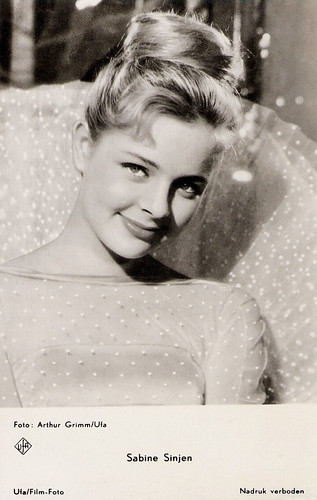
Dutch postcard by Gebr. Spanjersberg N.V. (Licency holder of Ufa/Film-Foto for the Netherlands), Rotterdam, no. 358/960. Photo: Arthur Grimm / Ufa.
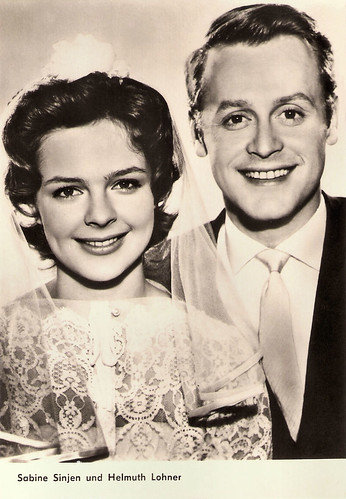
East-German postcard by VEB Progress Film-Vertrieb, Berlin, no. 1755, 1962. Sabine Sinjen and Helmut Lohner in Im sechsten Stock (John Olden, 1961).
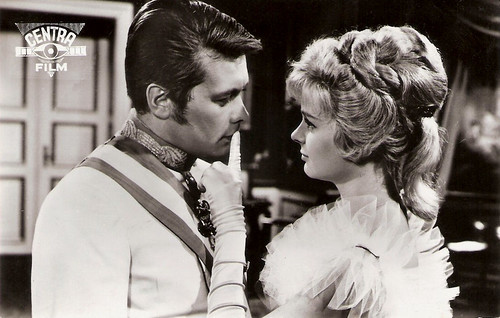
Dutch postcard by SYBA, no. 461. Promotional card for Centrafilm, Den Haag. Publicity still for Die Försterchristel/The Forester's Daughter (1962) with Peter Weck .
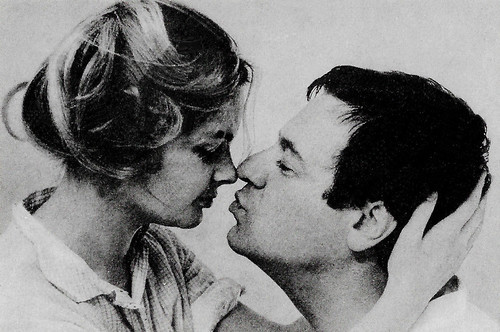
East-German collectors card in the 'Neu im Kino' series by VEB Progress Film-Vertrieb, Berlin, no. 500/6/68. Sabine Sinjen and Hans-Dieter Schwarze in Alle Jahre wieder/Next Year, Same Time (Ulrich Schamoni, 1967).
We've had abortions!
During the 1970s, Sabine Sinjen concentrated on theatre and television. She dis aguest appearances at the Zürcher Schauspielhaus and from 1976 till 1980, she was a permanent member of the Thalia-Theater in Hamburg.
In 1971, she appeared as one of 28 women under the banner 'We've had abortions!' (Wir haben abgetrieben!) on the cover page of the West German magazine Stern on 6 June 1971. In that issue, 374 women publicly stated that they had had pregnancies terminated, which at that time was illegal.
Occasionally she made a film, like Am Wege/On the Road (Peter Beauvais, 1975) and Caspar David Friedrich - Grenzen der Zeit/Boundaries of Time: Caspar David Friedrich (Peter Schamoni, 1986).
In 1984 she was diagnosed with cancer and lost sight in her right eye, but still, she kept playing in theatre and on TV, wearing an eye-patch. Passionately, she fought against the disease until the last moment. After her serious illness, Sinjen had a much-noticed theatre comeback in 1987 at the Schillertheater in Jean Cocteau's solo play 'Die geliebte Stimme' (The Beloved Voice).
In 1994 - a few months before her death - she had to stop rehearsing for Heiner Müller's 'Quartet' at the theatre in Aachen. Her last film part had been in Das Haus im Ginster/The House in the Macchia (Gottfried Junker, 1992) and her final television appearance was in the TV play Von Frau zu Frau: Die Sammlerin/From woman to woman: the collector (Peter Weck, 1994) with Christiane Hörbiger .
In 1995, Sabine Sinjen died in Berlin, only 52. She was buried at the cemetery in Irrsdorf near Salzburg. Sinjen was married twice, first to Peter Beauvais till 1984 and then till her death to Günther Huber, who was also a director and was the father of her son, Simon.

German postcard by ISV, no. M 19. Photo: Europa Film / Lilo.
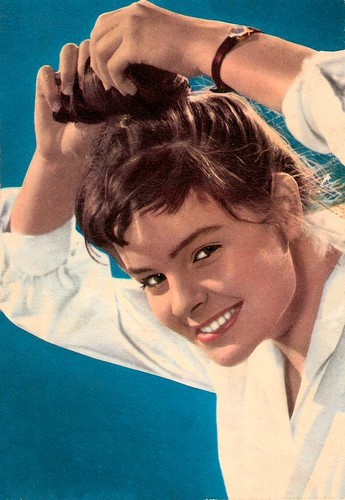
German postcard by ISV, no. M 20. Photo: Europa Film / Lilo.
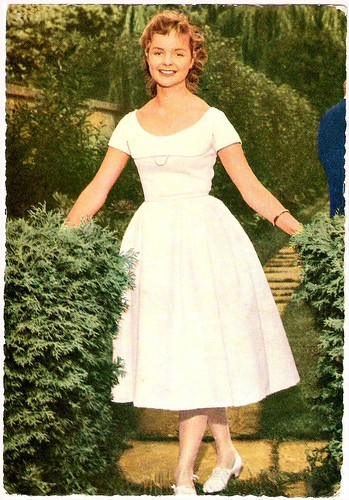
German postcard by Terra-Color, no. F 150. Photo: private.
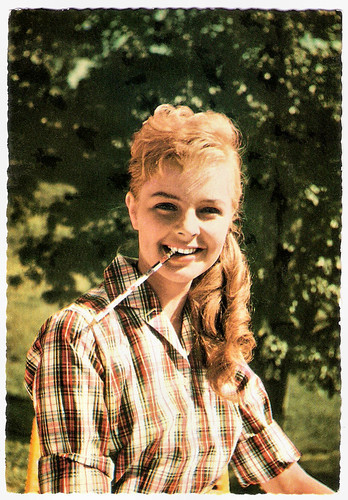
German postcard by Terra-Color, no. F 183.
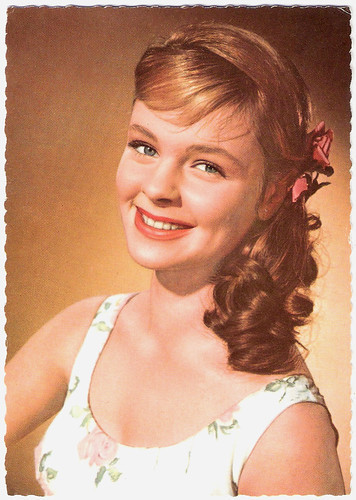
German postcard by UFA, Berlin-Tempelhoff, no. CK-207. Retail price: 30 Pfg. Photo: UFA.
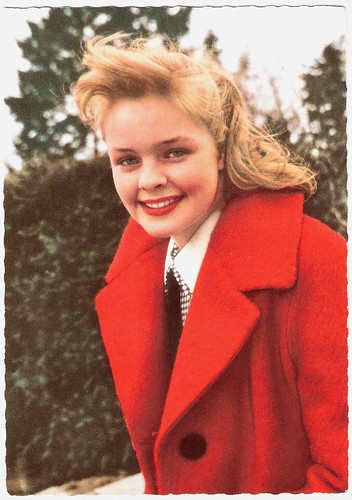
German postcard by UFA, Berlin-Tempelhoff, no. CK-255. Retail price: 30 Pfg. Photo: Serda / UFA.
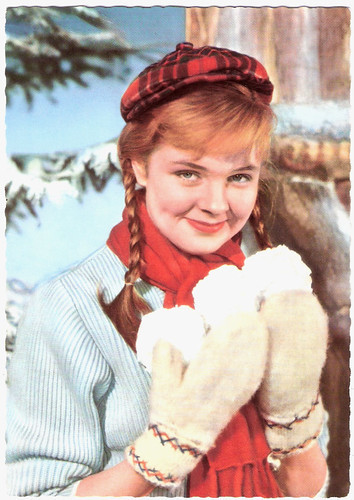
German postcard by UFA, Berlin-Tempelhoff, no. CK-316. Retail price: 30 Pfg. Photo: Arthur Grimm / UFA.
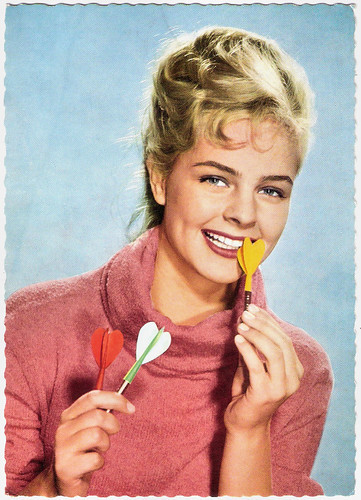
German postcard by UFA, Berlin-Tempelhof, no. CK-343. Photo: Klaus Collignon.
Sources: Stephanie D'heil (Steffi-Line), Filmportal.de (German), Wikipedia (German), and .

German recipe card by Axel Juncker Verlag GmbH, München / Zürich / Wien. On the flip side a recipe for Crabs in dill sauce with saffron rice and cucumber salad.

German postcard by Kolibri-Verlag G.m.b.H., Minden/Westf., no. 957. Photo: Kolibri / Otfried / Schmidt.

German postcard by Kolibri-Verlag G.m.b.H., Minden-Westf., no. 569. Photo: Kolibri / Enzwieser.

German postcard by Kolibri-Verlag G.m.b.H., Minden-Westf., no. 615. Photo: Kolibri / Enzwieser.

German postcard by Kolibri-Verlag G.m.b.H., Minden/Westf., no. 737. Photo: Kolibri / Lothar Winkler.

German postcard by Kolibri Verlag G.m.b.H., Minden/Westf., no. 773. Photo: Kolibri / Entwieser.

German postcard by Kolibri-Verlag G.m.b.H., Minden/Westf., no. 847. Photo: Kolibri / Studio Meinen, München (Munich).

Dutch postcard by Gebr. Spanjersberg N.V., Rotterdam, no. 4295, licency holder for UFA/Film-Foto in the Netherlands. Sent by mail in 1959. Photo: UFA.
Cheesy Heimatfilms
Sabine Sinjen was born in Itzehoe, Germany, in 1942 as the daughter of the journalist Marlen Sinjen, born Kolbe. Her father, an engineer and architect, died during World War II in Russia.
Together with her mother and older sisters Julia and Frauke, she grew up in Hamburg and Munich. As a little girl, she already performed for the children's radio of the WDR. Later she took drama lessons.
In Die Frühreifen/Precocious Youth (Josef von Báky, 1957) she played her first film role as the innocent-naive Hannelore who falls in love with the wrong guy. In the cast were also such popular teen stars as Heidi Brühl and Peter Kraus .
She proved to be a natural talent and next, she played with Lili Palmer and Romy Schneider in the remake of Mädchen in Uniform/Girls in Uniform (Géza von Radványi, 1958).
Producer Artur Brauner gave her a seven-year contract, and she became a star with the box office hit Stefanie (Josef von Báky, 1958) opposite Carlos Thompson and the sequel Stefanie in Rio (Curtis Bernhardt, 1960). She also appeared in Das Glas Wasser/A Glass of Water (Helmut Käutner, 1960) next to Gustaf Gründgens and Lilo Pulver .
Brauner kept her playing the natural and innocent teenager in cheesy Heimatfilms like Die Försterchristel/The Forester's Daughter (Franz Josef Gottlieb, 1962), but she did not want to be typecasted and broke her contract.
Like Romy Schneider , she went to France, where she made films like Les tontons flingueurs/Crooks in Clover (Georges Lautner, 1963), starring Lino Ventura and Bernard Blier . She also appeared in the EuroWestern Die Flußpiraten vom Mississippi/The Pirates of the Mississippi (Jürgen Roland, 1964) opposite Hansjörg Felmy and Brad Harris. It was a co-production between West Germany, France, and Italy.

Dutch postcard by Hercules, Haarlem, no. 279. Photo: Hafbofilm. Sabine Sinjen and Corny Collins in Schmutziger Engel/Imperfect Angel (Alfred Vohrer, 1958).

German postcard by Ufa. Photo: Publicity still for Stefanie (1958) with Carlos Thompson .

German postcard by Filmbilder-Vertrieb Ernst Freihoff, Essen. Photo: CCC-Film / Gloria-Film / Arthur Grimm. Paul Hubschmid, Sabine Sinjen and Helmut Lohner in Marili (Josef von Báky, 1959).

Dutch postcard by N.V. v.h. Weenenk & Snel, Baarn, no. 306. Sabine Sinjen in Alt Heidelberg/Old Heidelberg (Ernst Marischka, 1959). Collection: Geoffrey Donaldson Institute.

Dutch postcard, no. 1060. Sabine Sinjen in Alt Heidelberg/Old Heidelberg (Ernst Marischka, 1959). Collection: Geoffrey Donaldson Institute.

Dutch postcard by N.V. v.h. Weenenk & Snel, Baarn, no. 1066. Sabine Sinjen and Christian Wolff in Alt Heidelberg/Old Heidelberg (Ernst Marischka, 1959). Collection: Geoffrey Donaldson Institute.

Dutch postcard by Gebr. Spanjersberg N.V., Rotterdam, no. 1312. Photo: Ufa. Sabine Sinjen and Peter Kraus in Kein Engel ist so rein/No angel is so pure (Wolfgang Becker, 1960).
Neue Deutsche film
In the early 1960s, Sabine Sinjen debuted as a stage actress as Wendla Bergmann in Frank Wedekind's play 'Frühlings Erwachen' (Spring Awakening) at the Schillertheater in Berlin. She stayed at the Schillertheater for two years. Later she performed at the Staatlichen Schauspielbühnen Berlin (1967) and at the Theater in der Josefstadt (1967-1971) in Vienna.
On TV, she became very popular as the daughter of veterinarian Gustav Knuth and Tilly Lauenstein in the family series Alle meine Tiere/All My Animals (1962-1963). She also appeared with Martin Benrath and Gerlinde Locker on television in the Oscar Wilde comedy Ein idealer Gatte/Am Ideal Husband (1965)
In 1963 Sinjen married director Peter Beauvais, with whom she made some ambitious literary adaptations for television such as Die Ratten/The Rats (Peter Beauvais, 1969), based on a play by Gerhart Hauptmann, and Dorothea Merz (Peter Beauvais, 1976) based on the novel by Tankred Dorst. She also appeared in several entertainment productions, such as the Courths-Mahler adaptation Griseldis (Peter Beauvais, 1974), which moved millions of viewers to tears.
In the mid-1960s she started to work with film director Ulrich Schamoni and became the protagonist of the Neue Deutsche Film (New German Cinema). Es/It (Ulrich Schamoni, 1965) tells the story of a young couple and the marriage crisis resulting from a concealed pregnancy and abortion. For her role, Sinjen won the Filmband in Gold, the German Oscar, for her role.
Next, she played women in problematic situations in such films as Alle Jahre wieder/Next Year, Same Time (Ulrich Schamoni, 1967), and Wir zwei/We Two (Ulrich Schamoni, 1969).

German postcard by WS-Druck, Wanne-Eickel, no. 291. Photo: Arthur Grimm / Europa.

Dutch postcard by Takken, Utrecht, no. AX 4566.

Dutch postcard by Takken, Utrecht, no. AX 4199. Photo: HAFBO-Film.

Dutch postcard by Gebr. Spanjersberg N.V.(Licency holder of Ufa/Film-Foto for the Netherlands), Rotterdam, no. 1281. Photo: Ufa.

Dutch postcard by Gebr. Spanjersberg N.V. (Licency holder of Ufa/Film-Foto for the Netherlands), Rotterdam, no. 358/960. Photo: Arthur Grimm / Ufa.

East-German postcard by VEB Progress Film-Vertrieb, Berlin, no. 1755, 1962. Sabine Sinjen and Helmut Lohner in Im sechsten Stock (John Olden, 1961).

Dutch postcard by SYBA, no. 461. Promotional card for Centrafilm, Den Haag. Publicity still for Die Försterchristel/The Forester's Daughter (1962) with Peter Weck .

East-German collectors card in the 'Neu im Kino' series by VEB Progress Film-Vertrieb, Berlin, no. 500/6/68. Sabine Sinjen and Hans-Dieter Schwarze in Alle Jahre wieder/Next Year, Same Time (Ulrich Schamoni, 1967).
We've had abortions!
During the 1970s, Sabine Sinjen concentrated on theatre and television. She dis aguest appearances at the Zürcher Schauspielhaus and from 1976 till 1980, she was a permanent member of the Thalia-Theater in Hamburg.
In 1971, she appeared as one of 28 women under the banner 'We've had abortions!' (Wir haben abgetrieben!) on the cover page of the West German magazine Stern on 6 June 1971. In that issue, 374 women publicly stated that they had had pregnancies terminated, which at that time was illegal.
Occasionally she made a film, like Am Wege/On the Road (Peter Beauvais, 1975) and Caspar David Friedrich - Grenzen der Zeit/Boundaries of Time: Caspar David Friedrich (Peter Schamoni, 1986).
In 1984 she was diagnosed with cancer and lost sight in her right eye, but still, she kept playing in theatre and on TV, wearing an eye-patch. Passionately, she fought against the disease until the last moment. After her serious illness, Sinjen had a much-noticed theatre comeback in 1987 at the Schillertheater in Jean Cocteau's solo play 'Die geliebte Stimme' (The Beloved Voice).
In 1994 - a few months before her death - she had to stop rehearsing for Heiner Müller's 'Quartet' at the theatre in Aachen. Her last film part had been in Das Haus im Ginster/The House in the Macchia (Gottfried Junker, 1992) and her final television appearance was in the TV play Von Frau zu Frau: Die Sammlerin/From woman to woman: the collector (Peter Weck, 1994) with Christiane Hörbiger .
In 1995, Sabine Sinjen died in Berlin, only 52. She was buried at the cemetery in Irrsdorf near Salzburg. Sinjen was married twice, first to Peter Beauvais till 1984 and then till her death to Günther Huber, who was also a director and was the father of her son, Simon.

German postcard by ISV, no. M 19. Photo: Europa Film / Lilo.

German postcard by ISV, no. M 20. Photo: Europa Film / Lilo.

German postcard by Terra-Color, no. F 150. Photo: private.

German postcard by Terra-Color, no. F 183.

German postcard by UFA, Berlin-Tempelhoff, no. CK-207. Retail price: 30 Pfg. Photo: UFA.

German postcard by UFA, Berlin-Tempelhoff, no. CK-255. Retail price: 30 Pfg. Photo: Serda / UFA.

German postcard by UFA, Berlin-Tempelhoff, no. CK-316. Retail price: 30 Pfg. Photo: Arthur Grimm / UFA.

German postcard by UFA, Berlin-Tempelhof, no. CK-343. Photo: Klaus Collignon.
Sources: Stephanie D'heil (Steffi-Line), Filmportal.de (German), Wikipedia (German), and .
Published on November 17, 2020 22:00
November 15, 2020
Lien Deyers
It is day four of Cinefest, the 17th International Festival of German Film-Heritage. The beautiful Dutch actress Lien Deyers (1910-1965) was discovered by famous director Fritz Lang who gave her a part in his classic Spione/Spies (1928). During eight years, she acted in Germany in 32 late silent and early sound films. After 1935 her star faded rapidly and her life ended in tragedy.
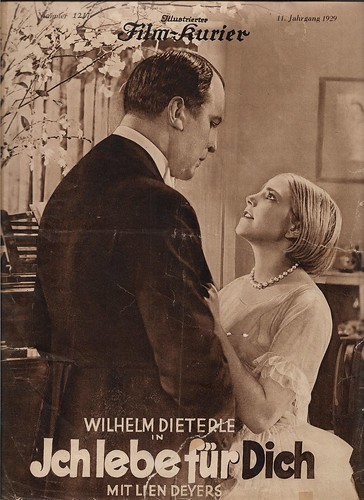
Cover of a special issue of Illustrierter Film-Kurier, 1929, no. 1217, for the late silent German film Ich lebe für dich (Wilhelm Dieterle, 1929), starring William/Wilhelm Dieterle and Lien Deyers, and set in a Swiss tuberculosis sanatorium. For years, the young man Bergson has been awaiting his healing in a sanatorium and has become an embittered man. A new patient, the young, pretty, and lively Nicoline, brings sunshine into his life. Love and hope for bettering arise with him, until Nicoline is declared to be healed again...
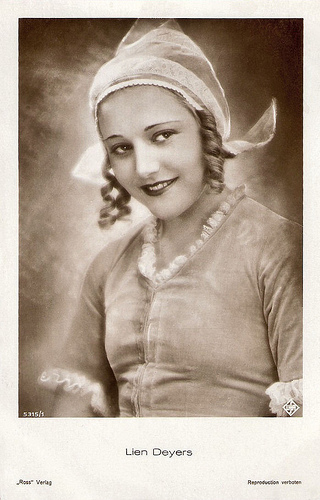
German postcard by Ross Verlag, no. 5315/1, 1930-1931 Photo: Ufa. Collection: Geoffrey Donaldson Institute.
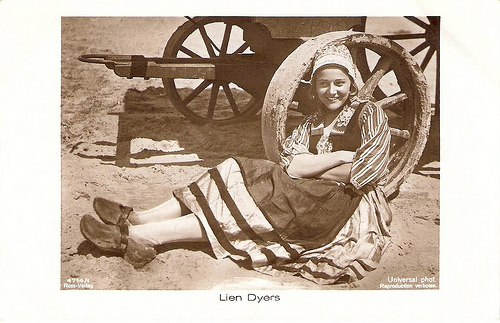
German postcard by Ross Verlag, no. 4714/1, 1929-1930. Photo: Universal.
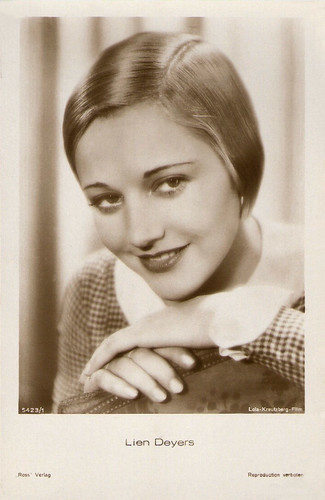
German postcard by Ross Verlag, no. 5423/1, 1930-1931. Photo: Lola-Kreutzberg-Film.
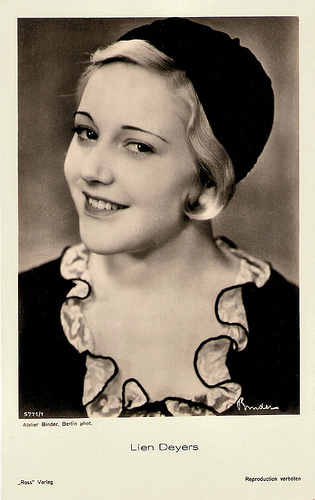
German postcard by Ross Verlag, no. 5771/1, 1930-1931. Photo: Alex Binder.
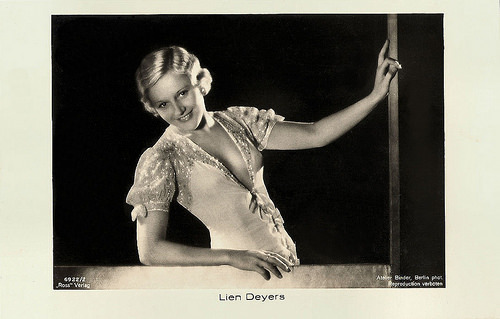
German postcard by Ross-Verlag, no. 6922/2, 1931-1932. Photo: Atelier Binder. Collection: Geoffrey Donaldson Institute.
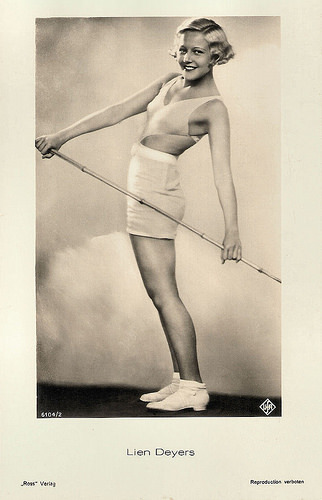
German postcard by Ross Verlag, no. 6104/2, 1931-1932. Photo: Ufa. Collection: Geoffrey Donaldson Institute.
Fritz Lang
Lien Deyers was born in Amsterdam as Nicolina Spanier. She was the daughter of Nathan Spanier, a piano teacher, and Johanna Liefjes, a seamstress. She had a half-brother, Andries Liefjes. After Spanier’s death, Mrs. Liefjes married the hotel-owner Egbert Dijjers and the family moved to The Hague. In 1931 Lien officially changed her name to Dijjers Spanier but would occasionally also use the name Dijjers Liefjes. Several times she stated her year of birth being 1910 or 1911, but some sources mention 1909 as the year of her birth.
She lived her childhood years in Amsterdam and later The Hague until her stepfather, owner of a big hotel in The Hague, married the Austrian actress Lotte Erol. Lien then traveled between The Hague, Vienna (where the family mostly lived), and Lausanne, where she went to a private school and became fluent in French. In August 1926 the Austrian weekly Mein Film staged a competition for new young screen talent and Lien submitted her photograph. Together with twenty other contestants, she was chosen for a screen-test by director Hans Otto, which she won.
During an autograph session in the Mein Film offices in 1927, she was introduced to the Austrian director Fritz Lang. Reportedly, the Dutch teenager cheekily asked him: “Herr Lang, don’t you want to discover me?” The endeared director offered the self-assured little blonde girl a plum part in his next project, the thriller Spione/Spies (Fritz Lang, 1928) opposite Rudolf Klein-Rogge and Gerda Maurus . Lang had her travel to Berlin for a screentest and she was indeed given a secondary but racy role in Spione. She was billed as Lien Deyers because Dijjers was frequently misspelled or mispronounced in German-speaking countries.
Lang had her sign a six-year contract and assigned her to the huge Ufa studios in Berlin. The contract soon turned out to be mere slavery, and Deyers sought a court decision to end it. In November 1928 the court ruled in her favour, a verdict welcomed by hundreds of Berlin-based actors with similar contracts. In turn, Lang appealed and was granted a 10,000 Reichs-mark pay-off, to be fulfilled in monthly payments. Deyers and Lang had already grown to dislike each other during the shooting of Spione.
Her role as an alluring and seductive spy in Spione meant the start of a prolific film career in the German cinema for Lien. In the next two years, she starred in films like Haus Nummer 17/Number 17 (Géza von Bolváry, 1928), Die Heilige und ihr Narr/The Saint and Her Fool (Wilhelm Dieterle, 1928), and the French adventure Le Capitaine Fracasse/Captain Fracasse (Alberto Cavalcanti, Henry Wulschleger, 1929) starring Pierre Blanchar .
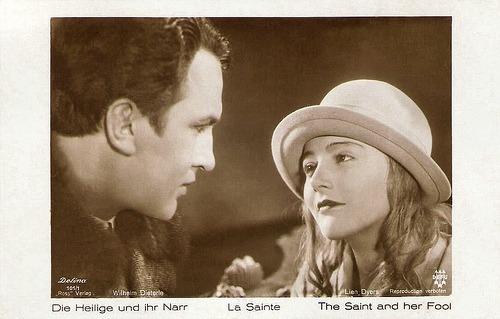
German postcard by Ross Verlag, no. 101/1, 1927-1928. Photo: Defina / DEFU. Publicity still for Die Heilige und ihr Narr/The Saint and her Fool (Wilhelm Dieterle, 1928) with Wilhelm Dieterle .
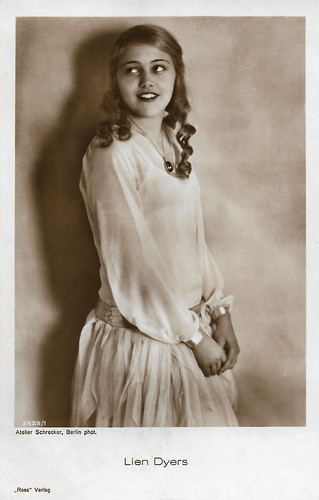
German postcard by Ross Verlag, no. 3525/1, 1928-1929. Photo: Atelier Schrecker, Berlin.
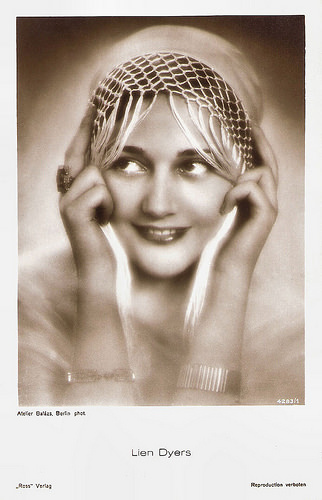
German postcard by Ross Verlag, no. 4283/1, 1929-1930. Photo: Atelier Balázs, Berlin. Collection: Geoffrey Donaldson Institute.
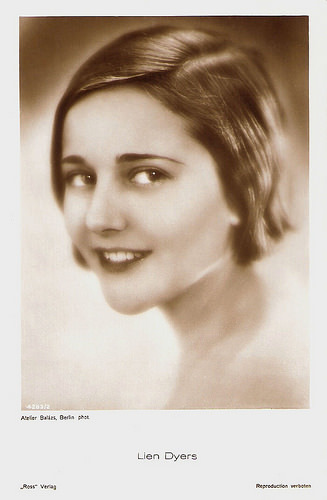
German postcard by Ross Verlag, no. 4283/2, 1929-1930. Photo: Atelier Balázs, Berlin.
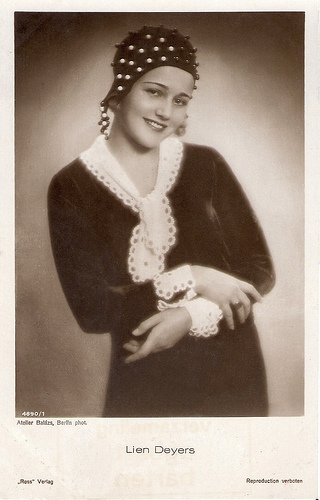
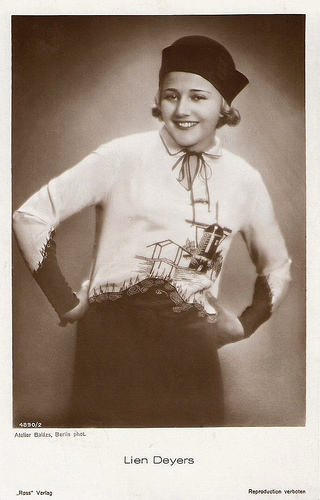
German postcards by Ross Verlag, no. 4890/1 and 4890/2, 1929-1930. Photo: Atelier Balázs, Berlin. Collection: Geoffrey Donaldson Institute.
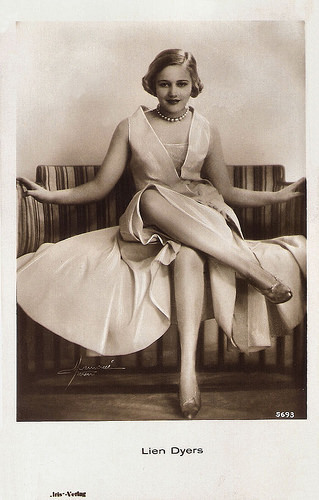
Austrian postcard by Iris Verlag, no. 5693. Photo: Manassé, Wien. Collection: Geoffrey Donaldson Institute.
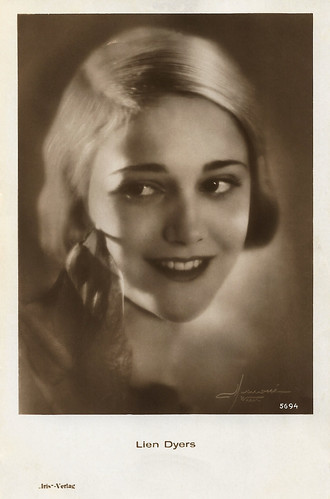
Austrian postcard by Iris-Verlag, no. 5694. Photo: Manassé.
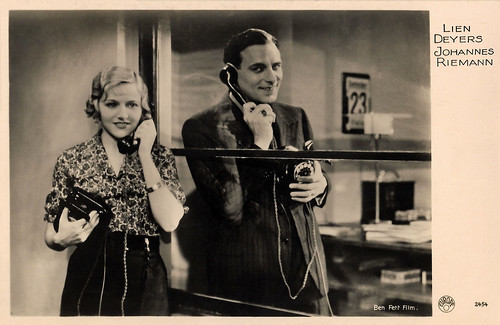
French postcard by Europe, no. 2454. Photo: Ben Fett Film. Lien Deyers and Johannes Riemann in Sein Scheidungsgrund/His Grounds for Divorce (Alfred Zeisler, 1931).
Starring Parts
After eight silent films, Lien Deyers had also success with her early sound films. She enchanted the public with her appearances in films like Rosenmontag/Rose Monday (Hans Steinhoff, 1930), Die Männer um Lucie/The Men Around Lucie (Alexander Korda, 1931) starring Liane Haid , and the operetta Die Verliebte Firma/The Company's in Love (Max Ophüls, 1932) with Gustav Fröhlich .
She starred opposite Heinz Rühmann in the comedy hits Der Mann, der seinen Mörder sucht/Looking for His Murderer (Robert Siodmak, 1931) and Lachende Erben/Laughing Heirs (Max Ophüls, 1933).
Opposite the popular singer Richard Tauber , she appeared in Melodie der Liebe/Right to Happiness (Georg Jacoby, 1932), and opposite another singing star, Jan Kiepura in Ich liebe alle Frauen/I Love All Women (Carl Lamac, 1935).
In the interesting Sci-Fi film Gold (Karl Hartl, 1934) she played with Hans Albers and Brigitte Helm.
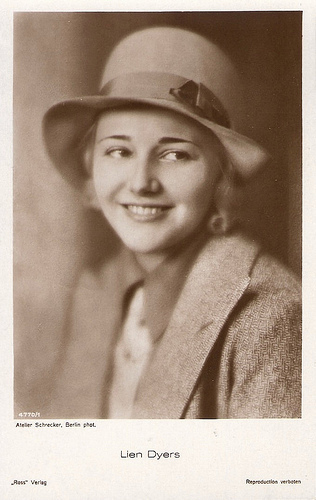
German postcard by Ross Verlag, no. 4770/1, 1929-1930. Photo: Atelier Schrecker, Berlin. Collection: Geoffrey Donaldson Institute.
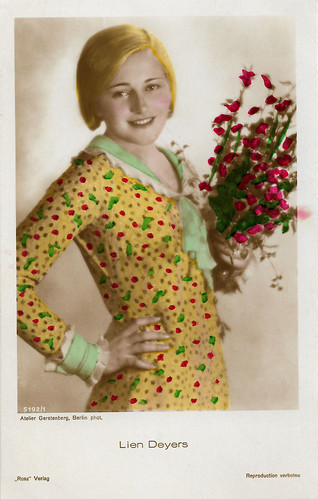
German postcard by Ross Verlag, no. 5192/1, 1930-1931. Photo: Atelier Gerstenberg, Berlin. Collection: Geoffrey Donaldson Institute.
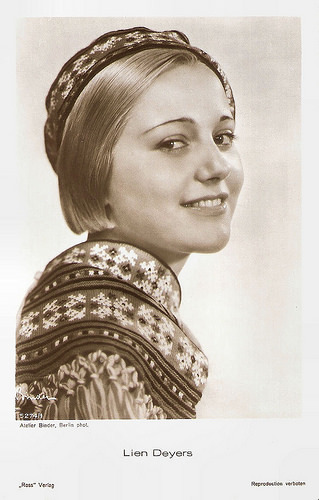
German postcard by Ross Verlag, no. 5274/1, 1930-1931. Photo: Atelier Binder. Collection: Geoffrey Donaldson Institute.>
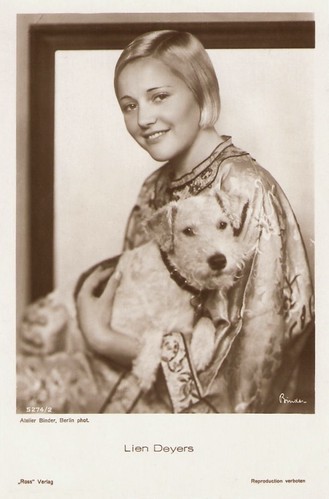
German postcard by Ross Verlag, no. 5274/2, 1930-1931. Photo: Atelier Binder, Berlin.
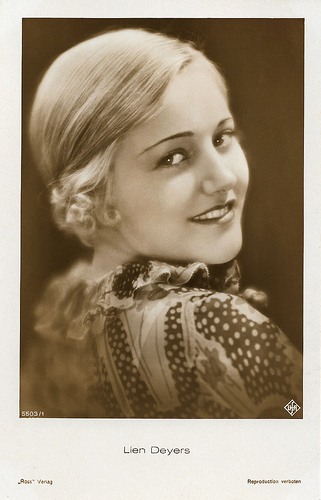
German postcard by Ross Verlag, no. 5503/1, 1930-1931. Photo: Ufa.
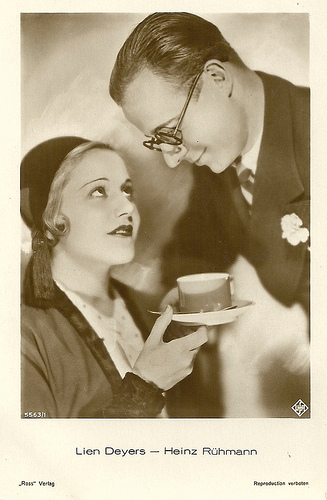
German postcard by Ross Verlag, no. 5563/1, 1930-1931. Photo: Ufa. Publicity still for Der Mann, der seinen Mörder sucht/Looking for His Murderer (Robert Siodmak, 1931) with Heinz Rühmann .
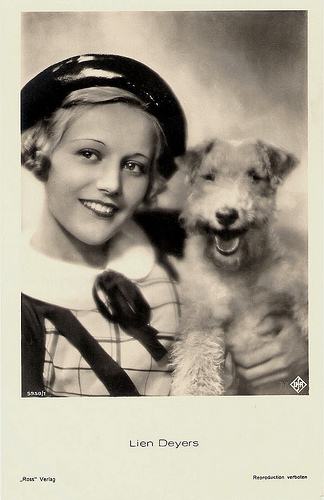
German postcard by Ross Verlag, no. 5950/1, 1930-1931. Photo: Ufa.
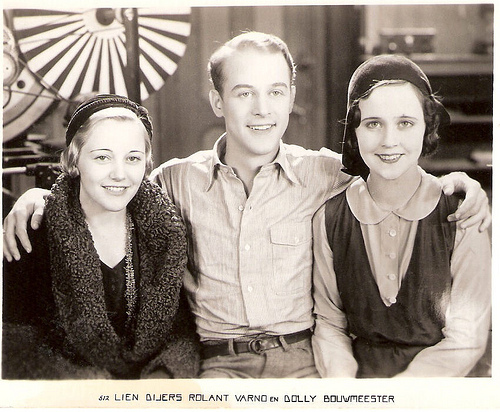
Dutch postcard for De sensatie der toekomst (Dimitri Buchowetzki, Jack Salvatori, 1931) with Roland Varno and Dolly Bouwmeester . Lien Deyers was not in the film, but visited the Paramount studios during the shooting.
The Sensation of the Future
Lien Deyers never appeared in a Dutch film. She can be seen on publicity photos for De sensatie der toekomst/Television (Dimitri Buchowetzki, Jack Salvatori, 1931) starring Dolly Bouwmeester and Roland Varno . This early and little known Dutch sound film was shot at the Paramount studio's in Joinville in France. The subject was the new phenomenon television, 'the sensation of the future.
De sensatie der toekomst/Television was the Dutch version of the French film Magie moderne/Modern Magic (Dimitri Buchowetzki, 1931). With different casts, there were also an Italian, a Czech, a Polish, a Romanian, and a Swedish version produced in the same studio. However, Lien Deyers was not in the film but only visited the Paramount studios during the shooting.
Deyers had given up her Dutch nationality when she married American born German producer and director Alfred Zeisler. Zeisler had directed her in Sein Scheidungsgrund/His Grounds for Divorce (1931) and had produced Gold. Therefore Lien wasn't subject to the foreign-worker quota restrictions of the National Socialists.
Lien was terrified that her family tree would be investigated by the Nazis: her father, a hotel owner in the Hague, was half Jewish. Her husband was also Jewish. The couple decided to leave Germany.
Among Lien's last films were Ein ganzer Kerl/A Regular Fellow (Carl Boese, 1935) and Die Selige Exzellenz (Hans H. Zerlett, 1935). The pair left for England first.
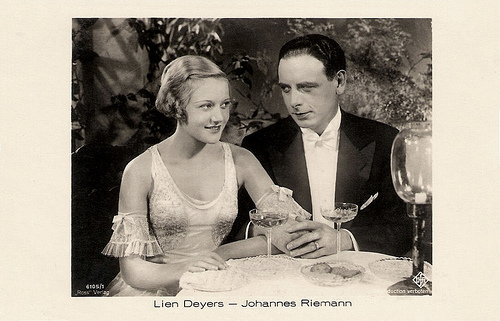
German postcard by Ross Verlag, no. 6105/1, 1931-1932. Photo: Ufa. Collection: Geoffrey Donaldson Institute. Publicity still for Sein Scheidungsgrund/His Grounds for Divorce (Alfred Zeisler, 1931) with Johannes Riemann .
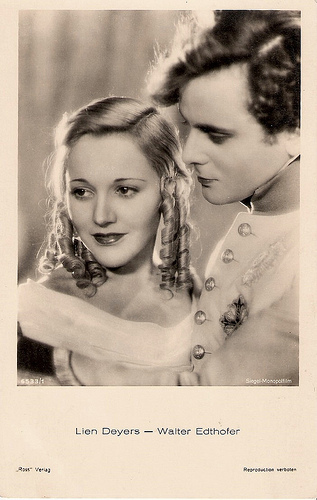
German postcard by Ross Verlag, no. 6533/1, 1931-1932. Photo: Siegel-Monopolfilm. Still from Der Herzog von Reichstadt/The Duke of Reichstadt (Victor Tourjansky, 1931) with Walter Edthofer. Collection: Geoffrey Donaldson Institute.
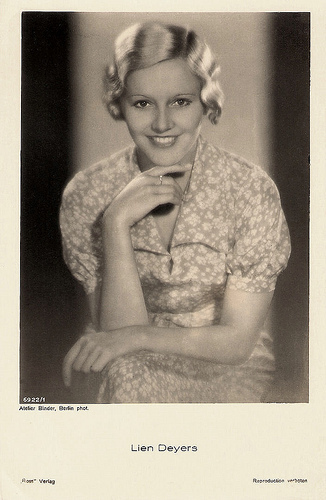
German postcard by Ross Verlag, no. 6922/1, 1931-1932. Photo: Atelier Binder, Berlin.
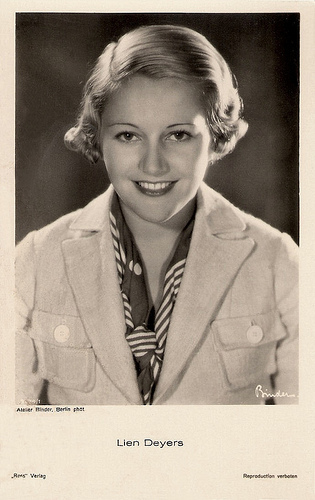
German postcard by Ross Verlag. Photo: Atelier Binder, Berlin.
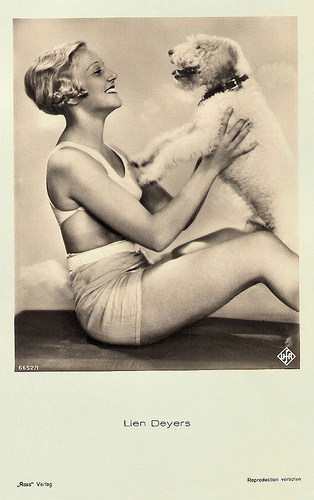
German postcard by Ross Verlag, no. 6552/1, 1931-1932. Photo: Ufa. Collection: Geoffrey Donaldson Institute.
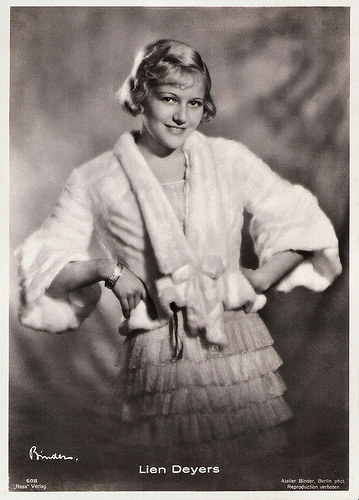
German postcard by Ross Verlag, no. 608 (Luxus series). Photo: Atelier Binder. Collection: Geoffrey Donaldson Institute.
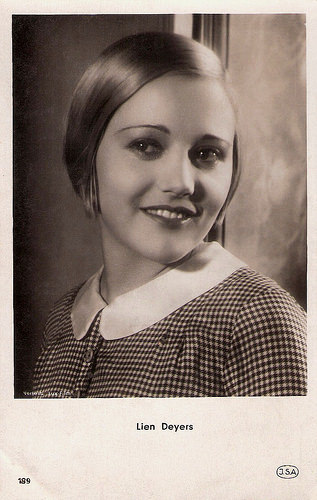
Dutch postcard by J.S.A., no. 189. Photo: Lux Film.
Setback
Lien Deyers traveled between London and The Hague while her man worked in England. In 1937 she signed for a major role in the Dutch-Italian film De Drie Wensen/I Tre Desideri/Three Wishes. For unknown reasons she did not play the part and finally joined her husband in London in 1938. There was no need for her acting skills there.
By that time her marriage with Alfred Zeissler was faltering and divorce was inevitable. In 1939 the couple moved to California where they soon went their different ways. Lien Deyers couldn't find work in the film business in Hollywood and conducted a business for novelties. According to Wikipedia she had a reputation now of being 'mentally extremely unstable'.
She developed an alcohol addiction and relied financially on old contacts like the German actor and director William Dieterle and in particular the Austrian-American film producer Paul Kohner and his European Film Fund that he had founded to aid down-on-their-luck German actors in exile.
Over a brief period of time, she married three more times: with kingpin actors' agent Frank Orsatti, one of the Orsatti Brothers (who evidently couldn't get her involved in films either), from 1940 until 1942, with furrier Victor Rubin (from 1944 until 1948) and with Lawrence Adlon, grandson of the Berlin hotel-magnate, in January 1951.
In the following decades, her private life was marked with some setbacks. Lien became an alcoholic. The Dutch actor/comedian Wim Sonneveld met with her in 1957 during the shooting of Silk Stockings with Fred Astaire and C yd Charisse , in which he played a supporting role. He was reportedly shocked by her faded beauty.
Then, she completely vanished from the public view. The last time she was heard from, was in September 1964, when she was in the Clark County Jail in Las Vegas because of loitering and disorderly conduct.
Thomas Staedeli at Cyranos : "The time of her death is not ascertainable, (...) but it seems that she died in 1965". Wikipedia mentions a greeting card congratulating German actor and former co-star Heinz Rühmann on his eightieth birthday in 1982. The postcard was signed L. Dyers-Wallburg, suggesting she had gotten married for the fifth time. IMDb has 1982 as the year of her death.
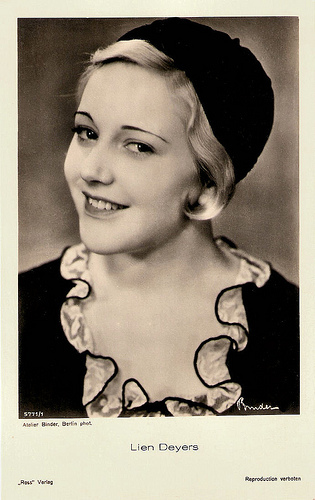
German postcard by Ross Verlag, no. 5771/1, 1930-1931. Photo: Alex Binder.
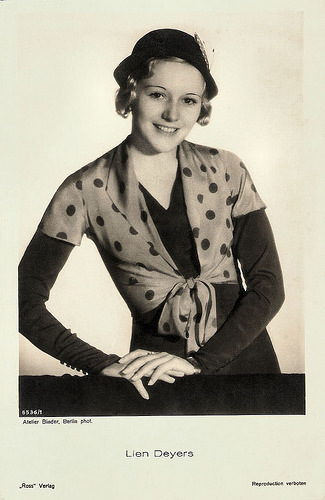
German postcard by Ross Verlag, no. 6536/1, 1931-1932. Photo: Atelier Binder. Collection: Geoffrey Donaldson Instituut.
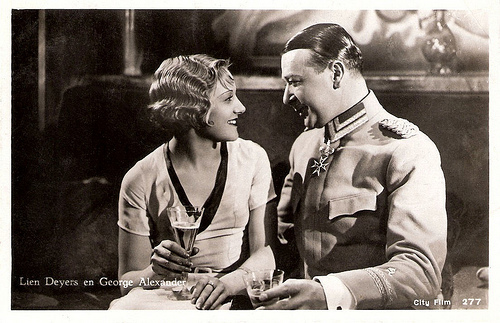
Dutch postcard by City Film, no. 277. Collection: Geoffrey Donaldson Institute. Publicity still for Ist mein Mann nicht fabelhaft?/Isn't My Husband Wonderful? (Georg Jacoby, 1933) with Georg Alexander
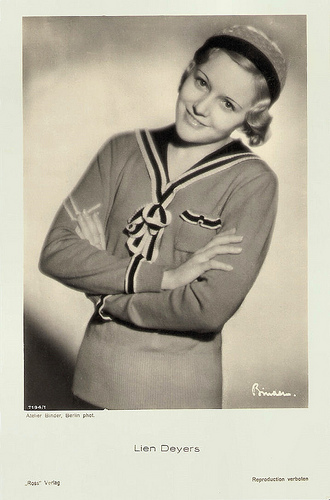
German postcard by Ross Verlag, no. 7194/1, 1932-1933. Photo: Atelier Binder, Berlin.
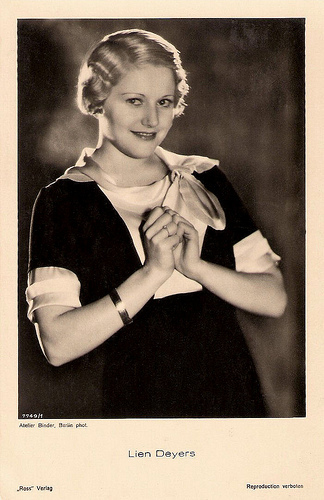
German postcard by Ross Verlag, no. 7749/1, 1932-1933. Photo: Atelier Binder, Berlin.
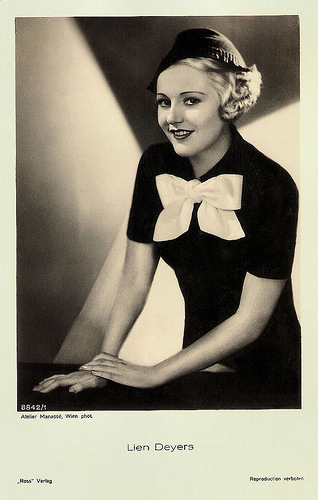
German postcard by Ross Verlag, no. 8842/1, 1933-1934. Photo: Atelier Manassé, Wien. Collection: Geoffrey Donaldson Institute.
Sources: Adrian Stahlecker (Nederlandse acteurs in de Weimarrepubliek en Nazi-Duitsland - Dutch), Thomas Staedeli (Cyranos), Filmportal.de, Wikipedia (English and Dutch) and .

Cover of a special issue of Illustrierter Film-Kurier, 1929, no. 1217, for the late silent German film Ich lebe für dich (Wilhelm Dieterle, 1929), starring William/Wilhelm Dieterle and Lien Deyers, and set in a Swiss tuberculosis sanatorium. For years, the young man Bergson has been awaiting his healing in a sanatorium and has become an embittered man. A new patient, the young, pretty, and lively Nicoline, brings sunshine into his life. Love and hope for bettering arise with him, until Nicoline is declared to be healed again...

German postcard by Ross Verlag, no. 5315/1, 1930-1931 Photo: Ufa. Collection: Geoffrey Donaldson Institute.

German postcard by Ross Verlag, no. 4714/1, 1929-1930. Photo: Universal.

German postcard by Ross Verlag, no. 5423/1, 1930-1931. Photo: Lola-Kreutzberg-Film.

German postcard by Ross Verlag, no. 5771/1, 1930-1931. Photo: Alex Binder.

German postcard by Ross-Verlag, no. 6922/2, 1931-1932. Photo: Atelier Binder. Collection: Geoffrey Donaldson Institute.

German postcard by Ross Verlag, no. 6104/2, 1931-1932. Photo: Ufa. Collection: Geoffrey Donaldson Institute.
Fritz Lang
Lien Deyers was born in Amsterdam as Nicolina Spanier. She was the daughter of Nathan Spanier, a piano teacher, and Johanna Liefjes, a seamstress. She had a half-brother, Andries Liefjes. After Spanier’s death, Mrs. Liefjes married the hotel-owner Egbert Dijjers and the family moved to The Hague. In 1931 Lien officially changed her name to Dijjers Spanier but would occasionally also use the name Dijjers Liefjes. Several times she stated her year of birth being 1910 or 1911, but some sources mention 1909 as the year of her birth.
She lived her childhood years in Amsterdam and later The Hague until her stepfather, owner of a big hotel in The Hague, married the Austrian actress Lotte Erol. Lien then traveled between The Hague, Vienna (where the family mostly lived), and Lausanne, where she went to a private school and became fluent in French. In August 1926 the Austrian weekly Mein Film staged a competition for new young screen talent and Lien submitted her photograph. Together with twenty other contestants, she was chosen for a screen-test by director Hans Otto, which she won.
During an autograph session in the Mein Film offices in 1927, she was introduced to the Austrian director Fritz Lang. Reportedly, the Dutch teenager cheekily asked him: “Herr Lang, don’t you want to discover me?” The endeared director offered the self-assured little blonde girl a plum part in his next project, the thriller Spione/Spies (Fritz Lang, 1928) opposite Rudolf Klein-Rogge and Gerda Maurus . Lang had her travel to Berlin for a screentest and she was indeed given a secondary but racy role in Spione. She was billed as Lien Deyers because Dijjers was frequently misspelled or mispronounced in German-speaking countries.
Lang had her sign a six-year contract and assigned her to the huge Ufa studios in Berlin. The contract soon turned out to be mere slavery, and Deyers sought a court decision to end it. In November 1928 the court ruled in her favour, a verdict welcomed by hundreds of Berlin-based actors with similar contracts. In turn, Lang appealed and was granted a 10,000 Reichs-mark pay-off, to be fulfilled in monthly payments. Deyers and Lang had already grown to dislike each other during the shooting of Spione.
Her role as an alluring and seductive spy in Spione meant the start of a prolific film career in the German cinema for Lien. In the next two years, she starred in films like Haus Nummer 17/Number 17 (Géza von Bolváry, 1928), Die Heilige und ihr Narr/The Saint and Her Fool (Wilhelm Dieterle, 1928), and the French adventure Le Capitaine Fracasse/Captain Fracasse (Alberto Cavalcanti, Henry Wulschleger, 1929) starring Pierre Blanchar .

German postcard by Ross Verlag, no. 101/1, 1927-1928. Photo: Defina / DEFU. Publicity still for Die Heilige und ihr Narr/The Saint and her Fool (Wilhelm Dieterle, 1928) with Wilhelm Dieterle .

German postcard by Ross Verlag, no. 3525/1, 1928-1929. Photo: Atelier Schrecker, Berlin.

German postcard by Ross Verlag, no. 4283/1, 1929-1930. Photo: Atelier Balázs, Berlin. Collection: Geoffrey Donaldson Institute.

German postcard by Ross Verlag, no. 4283/2, 1929-1930. Photo: Atelier Balázs, Berlin.


German postcards by Ross Verlag, no. 4890/1 and 4890/2, 1929-1930. Photo: Atelier Balázs, Berlin. Collection: Geoffrey Donaldson Institute.

Austrian postcard by Iris Verlag, no. 5693. Photo: Manassé, Wien. Collection: Geoffrey Donaldson Institute.

Austrian postcard by Iris-Verlag, no. 5694. Photo: Manassé.

French postcard by Europe, no. 2454. Photo: Ben Fett Film. Lien Deyers and Johannes Riemann in Sein Scheidungsgrund/His Grounds for Divorce (Alfred Zeisler, 1931).
Starring Parts
After eight silent films, Lien Deyers had also success with her early sound films. She enchanted the public with her appearances in films like Rosenmontag/Rose Monday (Hans Steinhoff, 1930), Die Männer um Lucie/The Men Around Lucie (Alexander Korda, 1931) starring Liane Haid , and the operetta Die Verliebte Firma/The Company's in Love (Max Ophüls, 1932) with Gustav Fröhlich .
She starred opposite Heinz Rühmann in the comedy hits Der Mann, der seinen Mörder sucht/Looking for His Murderer (Robert Siodmak, 1931) and Lachende Erben/Laughing Heirs (Max Ophüls, 1933).
Opposite the popular singer Richard Tauber , she appeared in Melodie der Liebe/Right to Happiness (Georg Jacoby, 1932), and opposite another singing star, Jan Kiepura in Ich liebe alle Frauen/I Love All Women (Carl Lamac, 1935).
In the interesting Sci-Fi film Gold (Karl Hartl, 1934) she played with Hans Albers and Brigitte Helm.

German postcard by Ross Verlag, no. 4770/1, 1929-1930. Photo: Atelier Schrecker, Berlin. Collection: Geoffrey Donaldson Institute.

German postcard by Ross Verlag, no. 5192/1, 1930-1931. Photo: Atelier Gerstenberg, Berlin. Collection: Geoffrey Donaldson Institute.

German postcard by Ross Verlag, no. 5274/1, 1930-1931. Photo: Atelier Binder. Collection: Geoffrey Donaldson Institute.>

German postcard by Ross Verlag, no. 5274/2, 1930-1931. Photo: Atelier Binder, Berlin.

German postcard by Ross Verlag, no. 5503/1, 1930-1931. Photo: Ufa.

German postcard by Ross Verlag, no. 5563/1, 1930-1931. Photo: Ufa. Publicity still for Der Mann, der seinen Mörder sucht/Looking for His Murderer (Robert Siodmak, 1931) with Heinz Rühmann .

German postcard by Ross Verlag, no. 5950/1, 1930-1931. Photo: Ufa.

Dutch postcard for De sensatie der toekomst (Dimitri Buchowetzki, Jack Salvatori, 1931) with Roland Varno and Dolly Bouwmeester . Lien Deyers was not in the film, but visited the Paramount studios during the shooting.
The Sensation of the Future
Lien Deyers never appeared in a Dutch film. She can be seen on publicity photos for De sensatie der toekomst/Television (Dimitri Buchowetzki, Jack Salvatori, 1931) starring Dolly Bouwmeester and Roland Varno . This early and little known Dutch sound film was shot at the Paramount studio's in Joinville in France. The subject was the new phenomenon television, 'the sensation of the future.
De sensatie der toekomst/Television was the Dutch version of the French film Magie moderne/Modern Magic (Dimitri Buchowetzki, 1931). With different casts, there were also an Italian, a Czech, a Polish, a Romanian, and a Swedish version produced in the same studio. However, Lien Deyers was not in the film but only visited the Paramount studios during the shooting.
Deyers had given up her Dutch nationality when she married American born German producer and director Alfred Zeisler. Zeisler had directed her in Sein Scheidungsgrund/His Grounds for Divorce (1931) and had produced Gold. Therefore Lien wasn't subject to the foreign-worker quota restrictions of the National Socialists.
Lien was terrified that her family tree would be investigated by the Nazis: her father, a hotel owner in the Hague, was half Jewish. Her husband was also Jewish. The couple decided to leave Germany.
Among Lien's last films were Ein ganzer Kerl/A Regular Fellow (Carl Boese, 1935) and Die Selige Exzellenz (Hans H. Zerlett, 1935). The pair left for England first.

German postcard by Ross Verlag, no. 6105/1, 1931-1932. Photo: Ufa. Collection: Geoffrey Donaldson Institute. Publicity still for Sein Scheidungsgrund/His Grounds for Divorce (Alfred Zeisler, 1931) with Johannes Riemann .

German postcard by Ross Verlag, no. 6533/1, 1931-1932. Photo: Siegel-Monopolfilm. Still from Der Herzog von Reichstadt/The Duke of Reichstadt (Victor Tourjansky, 1931) with Walter Edthofer. Collection: Geoffrey Donaldson Institute.

German postcard by Ross Verlag, no. 6922/1, 1931-1932. Photo: Atelier Binder, Berlin.

German postcard by Ross Verlag. Photo: Atelier Binder, Berlin.

German postcard by Ross Verlag, no. 6552/1, 1931-1932. Photo: Ufa. Collection: Geoffrey Donaldson Institute.

German postcard by Ross Verlag, no. 608 (Luxus series). Photo: Atelier Binder. Collection: Geoffrey Donaldson Institute.

Dutch postcard by J.S.A., no. 189. Photo: Lux Film.
Setback
Lien Deyers traveled between London and The Hague while her man worked in England. In 1937 she signed for a major role in the Dutch-Italian film De Drie Wensen/I Tre Desideri/Three Wishes. For unknown reasons she did not play the part and finally joined her husband in London in 1938. There was no need for her acting skills there.
By that time her marriage with Alfred Zeissler was faltering and divorce was inevitable. In 1939 the couple moved to California where they soon went their different ways. Lien Deyers couldn't find work in the film business in Hollywood and conducted a business for novelties. According to Wikipedia she had a reputation now of being 'mentally extremely unstable'.
She developed an alcohol addiction and relied financially on old contacts like the German actor and director William Dieterle and in particular the Austrian-American film producer Paul Kohner and his European Film Fund that he had founded to aid down-on-their-luck German actors in exile.
Over a brief period of time, she married three more times: with kingpin actors' agent Frank Orsatti, one of the Orsatti Brothers (who evidently couldn't get her involved in films either), from 1940 until 1942, with furrier Victor Rubin (from 1944 until 1948) and with Lawrence Adlon, grandson of the Berlin hotel-magnate, in January 1951.
In the following decades, her private life was marked with some setbacks. Lien became an alcoholic. The Dutch actor/comedian Wim Sonneveld met with her in 1957 during the shooting of Silk Stockings with Fred Astaire and C yd Charisse , in which he played a supporting role. He was reportedly shocked by her faded beauty.
Then, she completely vanished from the public view. The last time she was heard from, was in September 1964, when she was in the Clark County Jail in Las Vegas because of loitering and disorderly conduct.
Thomas Staedeli at Cyranos : "The time of her death is not ascertainable, (...) but it seems that she died in 1965". Wikipedia mentions a greeting card congratulating German actor and former co-star Heinz Rühmann on his eightieth birthday in 1982. The postcard was signed L. Dyers-Wallburg, suggesting she had gotten married for the fifth time. IMDb has 1982 as the year of her death.

German postcard by Ross Verlag, no. 5771/1, 1930-1931. Photo: Alex Binder.

German postcard by Ross Verlag, no. 6536/1, 1931-1932. Photo: Atelier Binder. Collection: Geoffrey Donaldson Instituut.

Dutch postcard by City Film, no. 277. Collection: Geoffrey Donaldson Institute. Publicity still for Ist mein Mann nicht fabelhaft?/Isn't My Husband Wonderful? (Georg Jacoby, 1933) with Georg Alexander

German postcard by Ross Verlag, no. 7194/1, 1932-1933. Photo: Atelier Binder, Berlin.

German postcard by Ross Verlag, no. 7749/1, 1932-1933. Photo: Atelier Binder, Berlin.

German postcard by Ross Verlag, no. 8842/1, 1933-1934. Photo: Atelier Manassé, Wien. Collection: Geoffrey Donaldson Institute.
Sources: Adrian Stahlecker (Nederlandse acteurs in de Weimarrepubliek en Nazi-Duitsland - Dutch), Thomas Staedeli (Cyranos), Filmportal.de, Wikipedia (English and Dutch) and .
Published on November 15, 2020 22:00
November 14, 2020
Nicolas Koline
It is the third day of Cinefest, the 17th International Festival of German Film-Heritage in Hamburg. The theme of the festival is 'Cinema, War, and Tulips: German-Dutch Film Relations'. Hurrah! Ich lebe!/Hurray! I Live! (Wilhelm Thiele, 1928) is another German film that is situated in North-Holland and was partially filmed in Rotterdam. The Star of the film is Nicolas Koline (1878-1966), one of the Russian actors who fled from the country after the revolution. He played in several French and German films directed by Russian emigré directors.
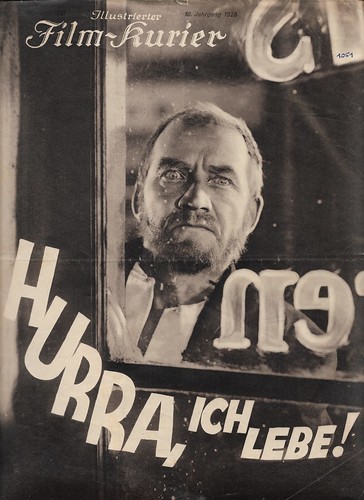
German film magazine Illustrierter Film-Kurier, 1928. Cover of special issue on Hurra, ich lebe! (Wilhelm Thiele, 1928).
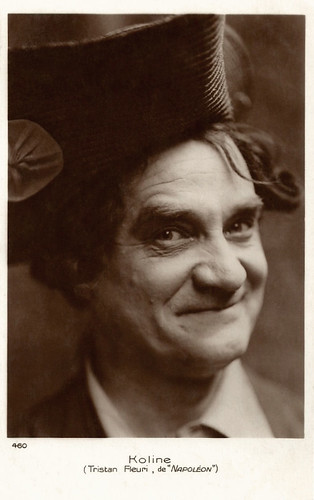
French postcard by Editions Cinémagazine, no. 460. Photo: Nicolas Koline as Tristan Fleuri in Napoléon (Abel Gance, 1927).

French postcard, with names written in Russian. The Russian actors Nathalie Lissenko , Nicolas Koline, and Nicolas Rimsky in the Albatros production Calvaire d'amour (Viktor Tourjansky, 1923).
Between Yalta and Paris
Nicolas Koline was born Nikolaj Kolin in Russia in 1878.
He was one of the Russian actors fleeing from the country after the revolution and during the Civil War. Together with his compatriots, he moved to France.
There he played in several films directed by Russian emigré directors. The first was L'angoissante aventure/Agonizing Adventure (Yakov Protazanov, 1920), a film with several fled Russian actors: Ivan Mozzhukhin (the lead and the scriptwriter of the film, together with Alexander Volkov), Nathalie Lissenko , Dimitri Buchowetzki, Vera Orlova, and Nicolas Panoff.
The film was started during the trip of the emigrés from Yalta to Paris and finished in the Montreuil studio in Paris. It was the second film of the Ermolieff company, which a few years after turned into Albatros Films.
The newly formed company Ermolieff Films (1920) gathered the Russian emigrés; this also included Russian cameramen such as Fédote Bourgassoff and Nicolas Toporkoff.
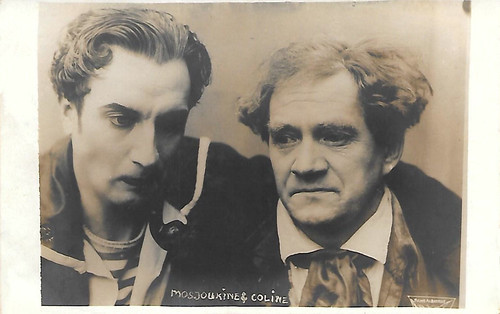
Vintage postcard. Photo: Films Albatross. Nicolas Koline and Ivan Mozzhukhin . Collection: Didier Hanson.
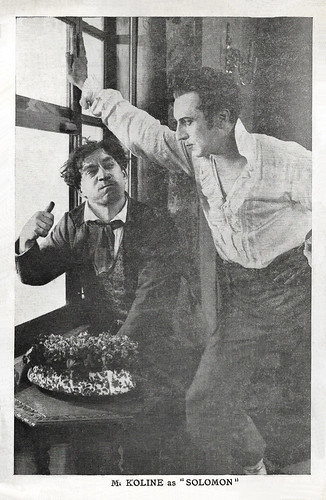
British postcard by the Embassy Theatre. Photo: Films Albatross. Nicolas Koline and Ivan Mozzhukhin in Kean/Edmund Kean: Prince Among Lovers (Alexander Volkov, 1924). In Great Britain, the film was distributed By Pinnacle Productions Ltd. and titled Kean - The Madness of Genius.
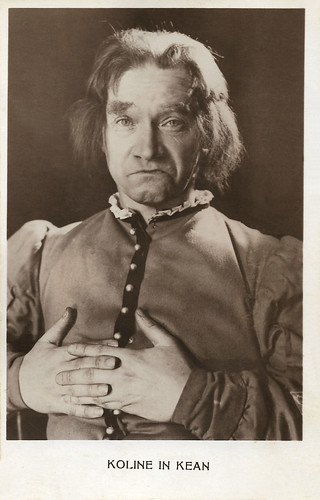
German postcard. Photo: Nicolas Koline in Kean/Edmund Kean: Prince Among Lovers (Alexander Volkov, 1924).
Leading Parts
After this first film, Nicolas Koline appeared in La tourmente/The Storm (Serge Nadejdine, 1921), Justice d'abord/Justice at First (Yakov Protazanov, 1921), Les Contes de mille et une nuits/The Tales of a Thousand and One Nights (Viatcheslav/Victor/Viktor Tourjansky, 1921), the serial La maison du mystère (Alexander Volkov, 1922) which was also released as a feature, Nuit de carnaval (Viktor Tourjansky, 1922), and Calvaire d'amour/Ordeal of Love (Viktor Tourjansky, 1923).
He had leading parts in Le brasier ardent/The Burning Brazier (Ivan Mozzhukin, Alexander Volkov, 1923), Le Chant de l'amour triomphant/The Triumphant Love Song (Viktor Tourjansky, 1923), and Kean/Edmund Kean: Prince Among Lovers (Alexander Volkov, 1923).
Koline was even the main star of Le Chiffonnier de Paris/The Ragman of Paris (Serge Nadejdine, 1924), after the famous drama by Félix Pyat.
In the same year he played leading roles opposite Nathalie Kovanko and Nicolas Rimsky in La Dame masquée/The Masked Lady (Viktor Tourjansky, 1924) and opposite Andrée Brabant and again Rimsky in La Cible/The Target (Serge Nadejdine, 1924).
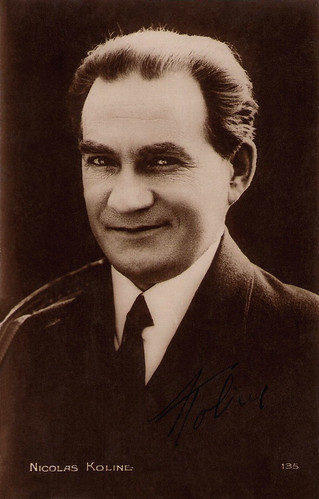
French postcard by Cinémagazine Editions, no. 135.
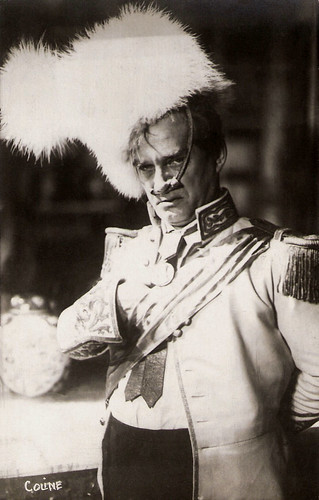
Vintage postcard.
Ufa
In the late 1920s, Nicolas Koline started to play in German films by the Ufa.
First, he appeared in the Franco-German co-production Die geheimnisse des Orients/The Secrets of the Orient (Alexander Volkov, 1928), a film with an international cast including Hungarian Ivan Petrovich , Italian Marcella Albani, and French Gaston Modot .
It was followed by Hurrah! Ich lebe!/Hurray! I Live! (Wilhelm Thiele, 1928) where Koline played opposite his compatriot Natalia Lissenko , and Gaukler/Les saltimbanques (1929/1930), a multilingual directed by Robert Land in the German version and by Jacquelux in the French version.
From 1934 on, Nicolas Koline played minor parts in German films such as the coproduction Variétés/Vaudevilles (Nicolas Farkas, 1935) with Annabella , Menschen ohne Vaterland/People Without Fatherland (Herbert Maisch, 1936) with Willy Fritsch , Patrioten/Patriots (Karl Ritter, 1937) with Lida Baarova , and Ab Mitternacht/From Midnight (Carl Hoffmann, 1938) with Gina Falckenberg.
He also made several films directed by Victor Tourjansky: Geheimzeichen LB17/Secret Sign LB17 (1938), Der Gouverneur/The Governor (1939), Feinde/Enemies (1940), and in particular Illusion (1941) with Johannes Heesters and Brigitte Horney , and Tonelli (1943) with Ferdinand Marian and Winnie Markus.
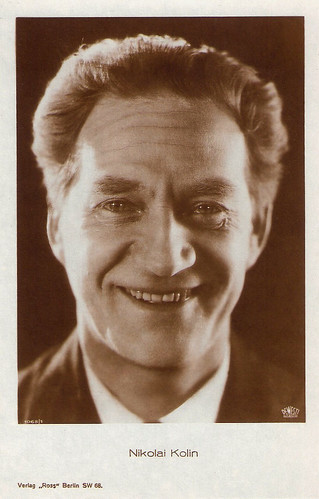
German postcard by Ross Verlag, Berlin, no. 1063/1, 1927-1928. Photo: DeWesti Film-Verleih.
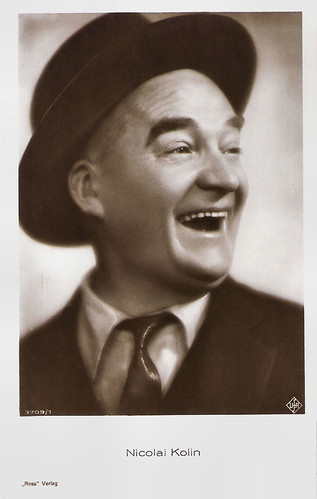
German postcard by Ross Verlag, Berlin, no. 3709/1, 1928-1929. Photo: Ufa.
Zarah Leander
Nikolas Koline had one major part in the war years, in Johann (Robert A. Stemmle, 1943). He also played several small roles until the end of the decade.
He appeared in films by a.o. G.W. Pabst and Hans Steinhoff such as Komödianten/The Comedians (1941) and Rembrandt (1942).
After the war, Koline remained in Germany and played small parts in films from 1947 on again, but in 1948 he also had a major lead again in Tragödie einer Leidenschaft/Tragedy of a Passion by Kurt Meisel, an adaptation of the Nikolai Leskov novel.
Koline continued to play in German films until his death in 1954. He usually played small parts but occasionally a bigger one as in Cuba Cabana (Fritz Peter Buch, 1952), starring Zarah Leander .
Some of Koline's parts were again in films by Tourjansky, such as Dreimal Komödie/Three Times Comedy (1949), Der blaue Strohhut/The Blue Straw Hat (1949) and Salto mortale (1953).
Nicolas Koline died in 1954.
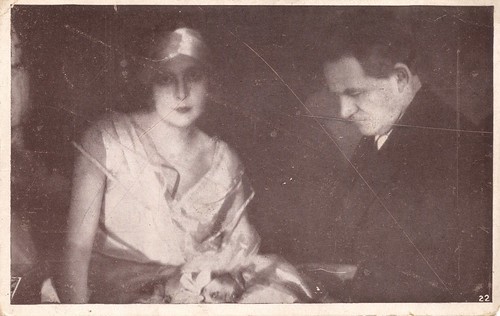
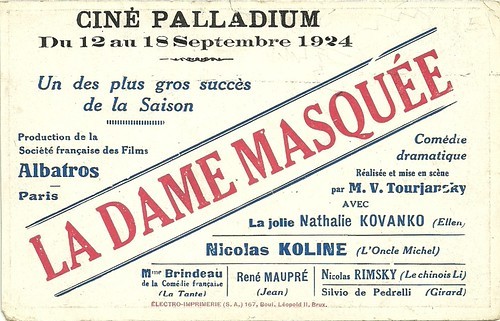
Belgian postcard. Verso. Publicity postcard for the screening of the Albatros production La dame masquée (Viktor Tourjansky, 1924) at the Brussels Ciné Palladium, from 12 to 18 September 1924. Palladium was a Brussels cinema on the Rue Neuve No. 35. It opened in 1920 and probably closed in 1954, at the opening of its neighbour on no. 37, cinema Astor.
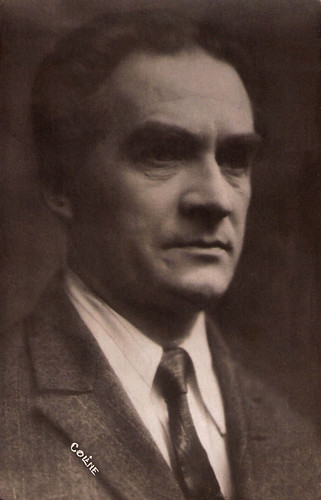
French postcard.
Sources: François Albéra (Albatros - des Russes à Paris 1919-1929), Filmportal.de, and .

German film magazine Illustrierter Film-Kurier, 1928. Cover of special issue on Hurra, ich lebe! (Wilhelm Thiele, 1928).

French postcard by Editions Cinémagazine, no. 460. Photo: Nicolas Koline as Tristan Fleuri in Napoléon (Abel Gance, 1927).

French postcard, with names written in Russian. The Russian actors Nathalie Lissenko , Nicolas Koline, and Nicolas Rimsky in the Albatros production Calvaire d'amour (Viktor Tourjansky, 1923).
Between Yalta and Paris
Nicolas Koline was born Nikolaj Kolin in Russia in 1878.
He was one of the Russian actors fleeing from the country after the revolution and during the Civil War. Together with his compatriots, he moved to France.
There he played in several films directed by Russian emigré directors. The first was L'angoissante aventure/Agonizing Adventure (Yakov Protazanov, 1920), a film with several fled Russian actors: Ivan Mozzhukhin (the lead and the scriptwriter of the film, together with Alexander Volkov), Nathalie Lissenko , Dimitri Buchowetzki, Vera Orlova, and Nicolas Panoff.
The film was started during the trip of the emigrés from Yalta to Paris and finished in the Montreuil studio in Paris. It was the second film of the Ermolieff company, which a few years after turned into Albatros Films.
The newly formed company Ermolieff Films (1920) gathered the Russian emigrés; this also included Russian cameramen such as Fédote Bourgassoff and Nicolas Toporkoff.

Vintage postcard. Photo: Films Albatross. Nicolas Koline and Ivan Mozzhukhin . Collection: Didier Hanson.

British postcard by the Embassy Theatre. Photo: Films Albatross. Nicolas Koline and Ivan Mozzhukhin in Kean/Edmund Kean: Prince Among Lovers (Alexander Volkov, 1924). In Great Britain, the film was distributed By Pinnacle Productions Ltd. and titled Kean - The Madness of Genius.

German postcard. Photo: Nicolas Koline in Kean/Edmund Kean: Prince Among Lovers (Alexander Volkov, 1924).
Leading Parts
After this first film, Nicolas Koline appeared in La tourmente/The Storm (Serge Nadejdine, 1921), Justice d'abord/Justice at First (Yakov Protazanov, 1921), Les Contes de mille et une nuits/The Tales of a Thousand and One Nights (Viatcheslav/Victor/Viktor Tourjansky, 1921), the serial La maison du mystère (Alexander Volkov, 1922) which was also released as a feature, Nuit de carnaval (Viktor Tourjansky, 1922), and Calvaire d'amour/Ordeal of Love (Viktor Tourjansky, 1923).
He had leading parts in Le brasier ardent/The Burning Brazier (Ivan Mozzhukin, Alexander Volkov, 1923), Le Chant de l'amour triomphant/The Triumphant Love Song (Viktor Tourjansky, 1923), and Kean/Edmund Kean: Prince Among Lovers (Alexander Volkov, 1923).
Koline was even the main star of Le Chiffonnier de Paris/The Ragman of Paris (Serge Nadejdine, 1924), after the famous drama by Félix Pyat.
In the same year he played leading roles opposite Nathalie Kovanko and Nicolas Rimsky in La Dame masquée/The Masked Lady (Viktor Tourjansky, 1924) and opposite Andrée Brabant and again Rimsky in La Cible/The Target (Serge Nadejdine, 1924).

French postcard by Cinémagazine Editions, no. 135.

Vintage postcard.
Ufa
In the late 1920s, Nicolas Koline started to play in German films by the Ufa.
First, he appeared in the Franco-German co-production Die geheimnisse des Orients/The Secrets of the Orient (Alexander Volkov, 1928), a film with an international cast including Hungarian Ivan Petrovich , Italian Marcella Albani, and French Gaston Modot .
It was followed by Hurrah! Ich lebe!/Hurray! I Live! (Wilhelm Thiele, 1928) where Koline played opposite his compatriot Natalia Lissenko , and Gaukler/Les saltimbanques (1929/1930), a multilingual directed by Robert Land in the German version and by Jacquelux in the French version.
From 1934 on, Nicolas Koline played minor parts in German films such as the coproduction Variétés/Vaudevilles (Nicolas Farkas, 1935) with Annabella , Menschen ohne Vaterland/People Without Fatherland (Herbert Maisch, 1936) with Willy Fritsch , Patrioten/Patriots (Karl Ritter, 1937) with Lida Baarova , and Ab Mitternacht/From Midnight (Carl Hoffmann, 1938) with Gina Falckenberg.
He also made several films directed by Victor Tourjansky: Geheimzeichen LB17/Secret Sign LB17 (1938), Der Gouverneur/The Governor (1939), Feinde/Enemies (1940), and in particular Illusion (1941) with Johannes Heesters and Brigitte Horney , and Tonelli (1943) with Ferdinand Marian and Winnie Markus.

German postcard by Ross Verlag, Berlin, no. 1063/1, 1927-1928. Photo: DeWesti Film-Verleih.

German postcard by Ross Verlag, Berlin, no. 3709/1, 1928-1929. Photo: Ufa.
Zarah Leander
Nikolas Koline had one major part in the war years, in Johann (Robert A. Stemmle, 1943). He also played several small roles until the end of the decade.
He appeared in films by a.o. G.W. Pabst and Hans Steinhoff such as Komödianten/The Comedians (1941) and Rembrandt (1942).
After the war, Koline remained in Germany and played small parts in films from 1947 on again, but in 1948 he also had a major lead again in Tragödie einer Leidenschaft/Tragedy of a Passion by Kurt Meisel, an adaptation of the Nikolai Leskov novel.
Koline continued to play in German films until his death in 1954. He usually played small parts but occasionally a bigger one as in Cuba Cabana (Fritz Peter Buch, 1952), starring Zarah Leander .
Some of Koline's parts were again in films by Tourjansky, such as Dreimal Komödie/Three Times Comedy (1949), Der blaue Strohhut/The Blue Straw Hat (1949) and Salto mortale (1953).
Nicolas Koline died in 1954.


Belgian postcard. Verso. Publicity postcard for the screening of the Albatros production La dame masquée (Viktor Tourjansky, 1924) at the Brussels Ciné Palladium, from 12 to 18 September 1924. Palladium was a Brussels cinema on the Rue Neuve No. 35. It opened in 1920 and probably closed in 1954, at the opening of its neighbour on no. 37, cinema Astor.

French postcard.
Sources: François Albéra (Albatros - des Russes à Paris 1919-1929), Filmportal.de, and .
Published on November 14, 2020 22:00
Paul van Yperen's Blog
- Paul van Yperen's profile
- 13 followers
Paul van Yperen isn't a Goodreads Author
(yet),
but they
do have a blog,
so here are some recent posts imported from
their feed.



